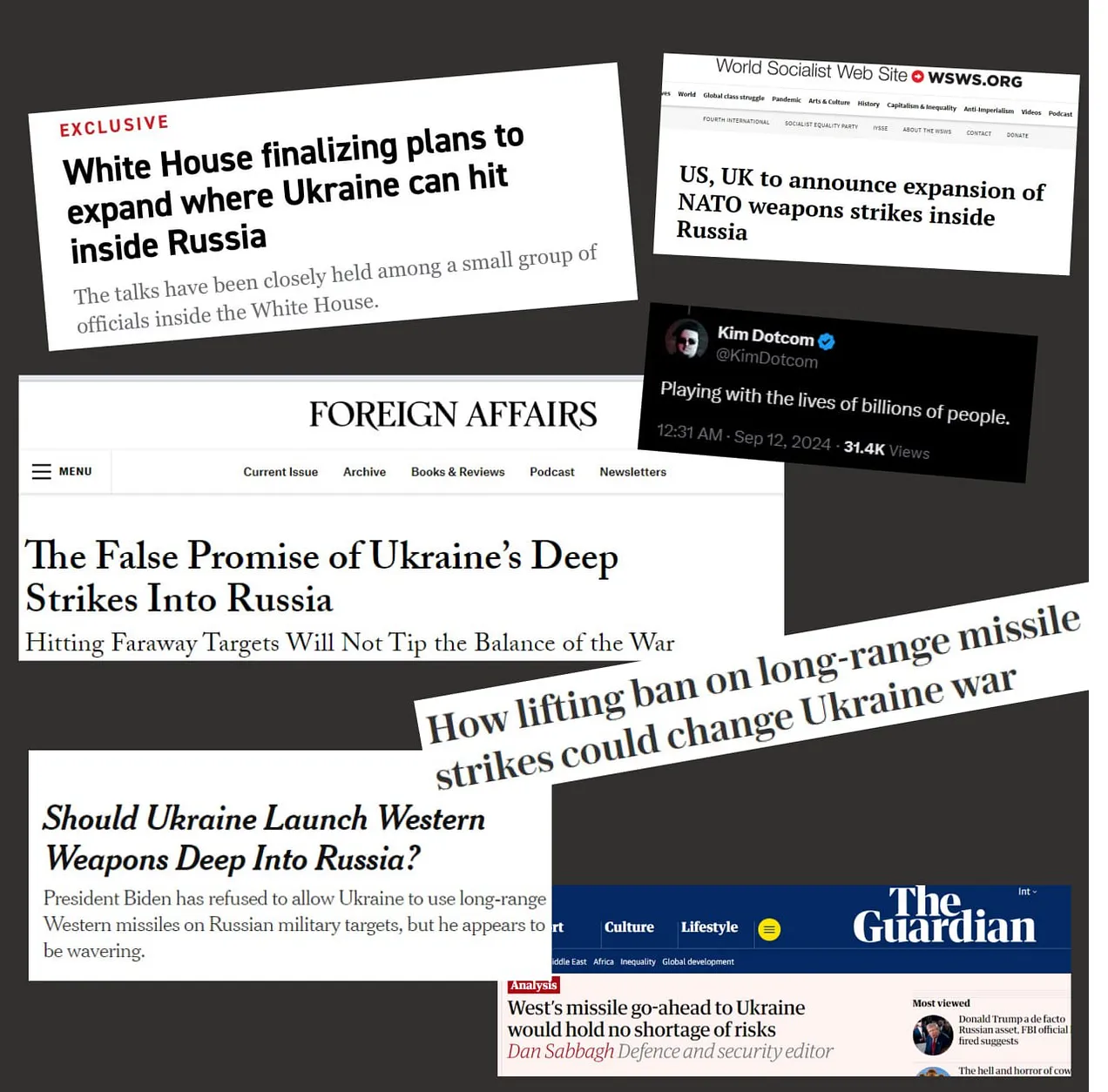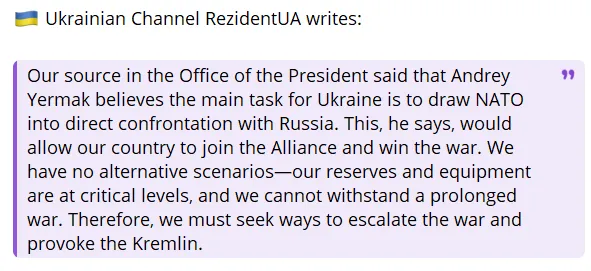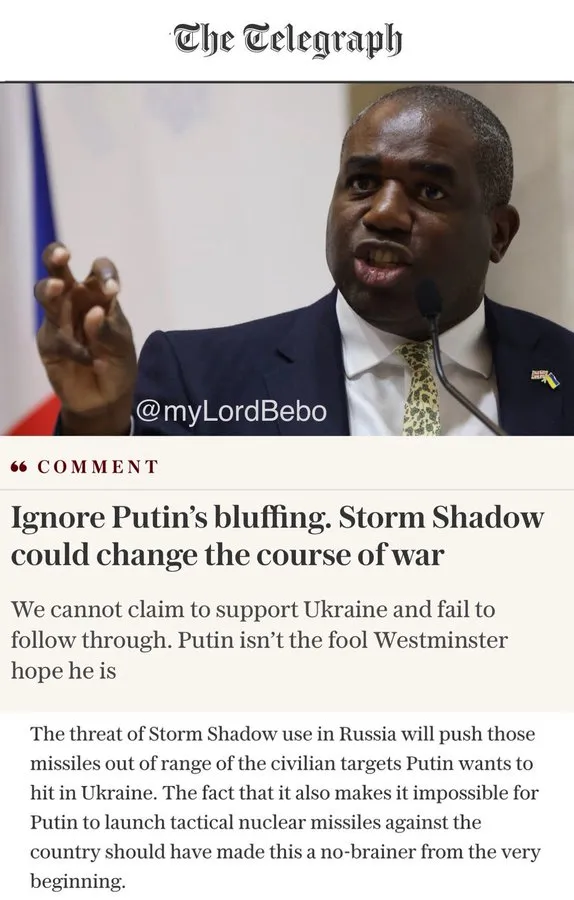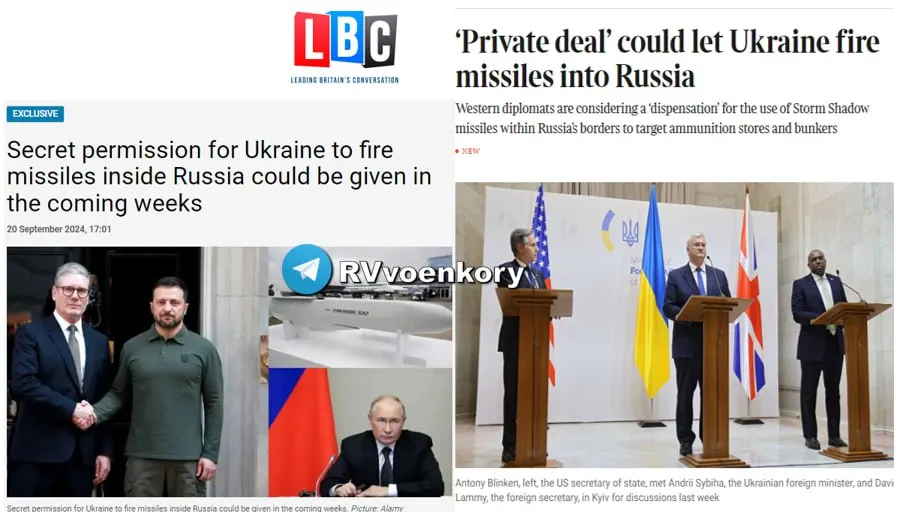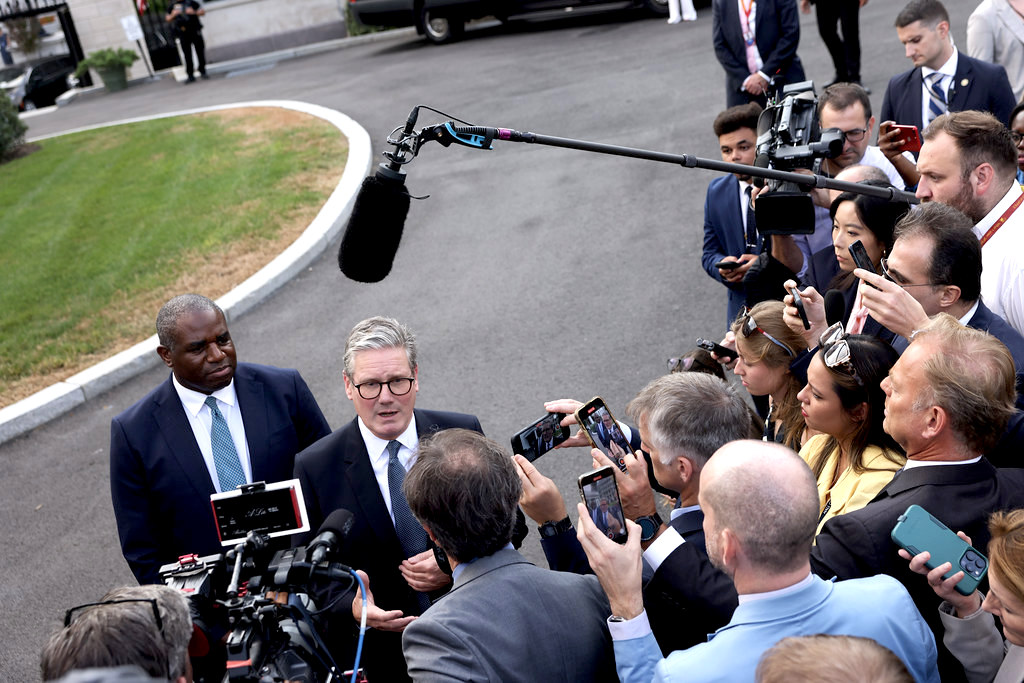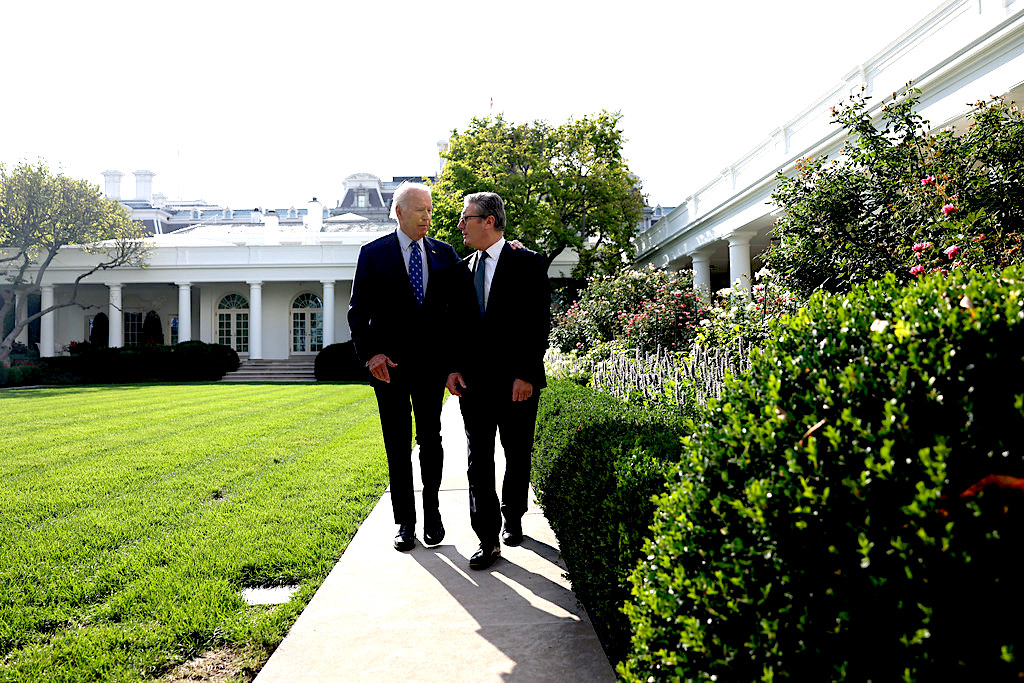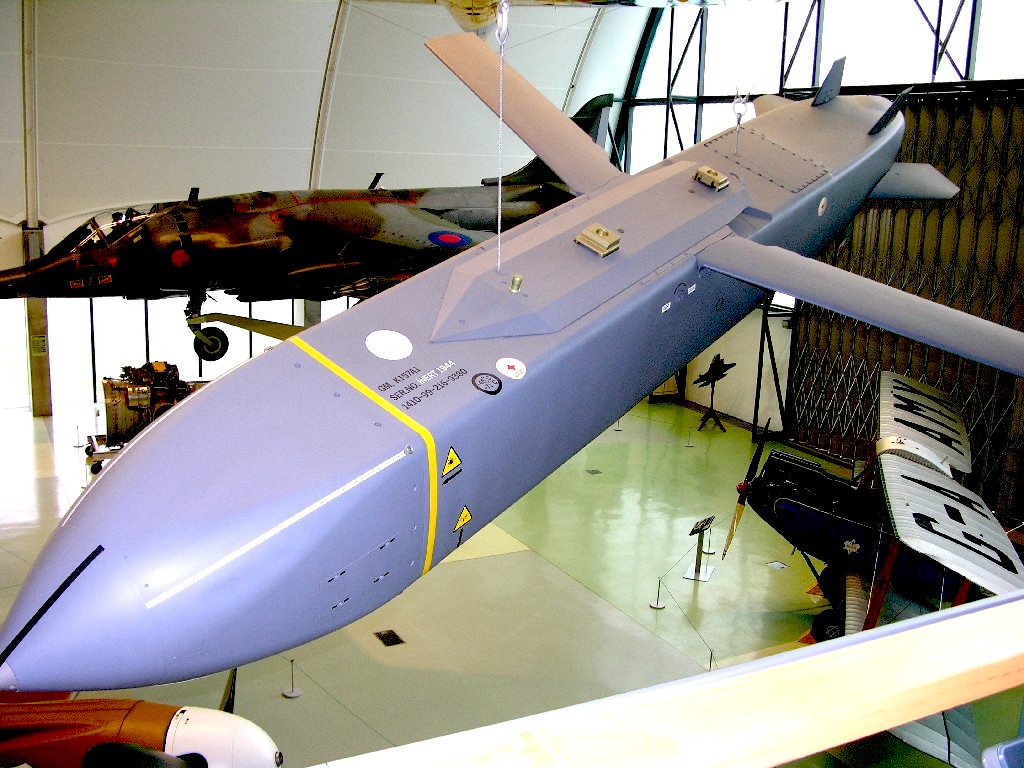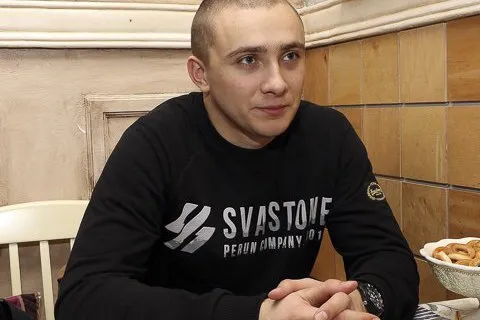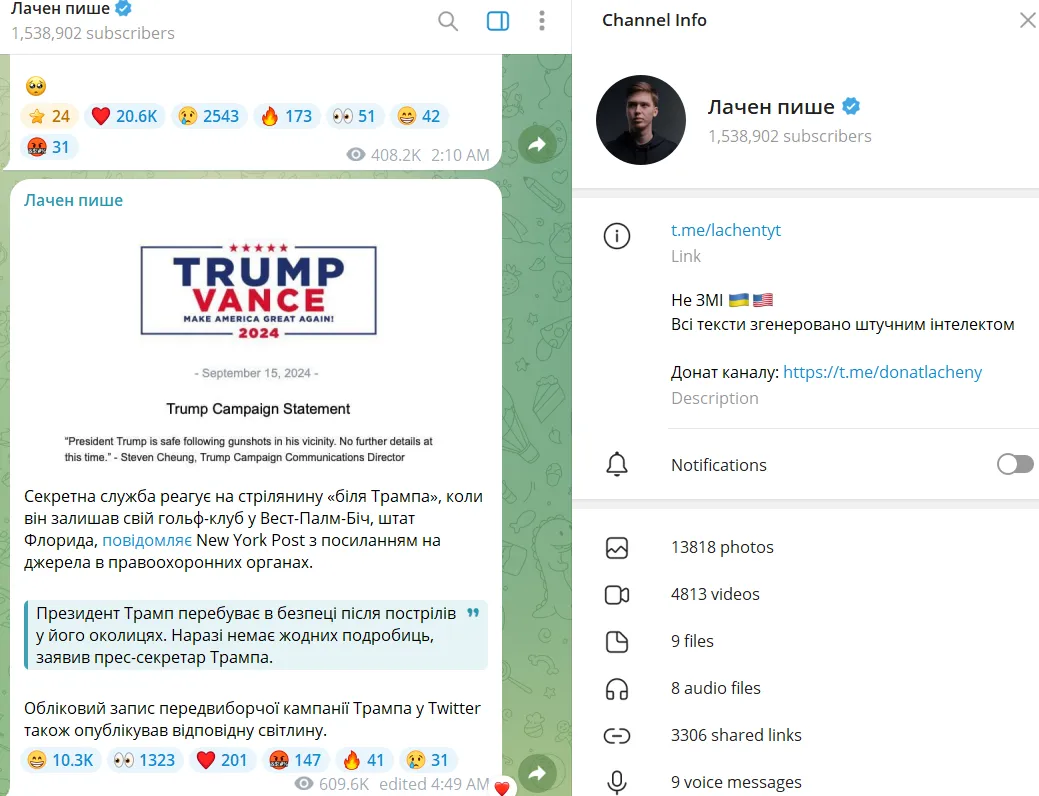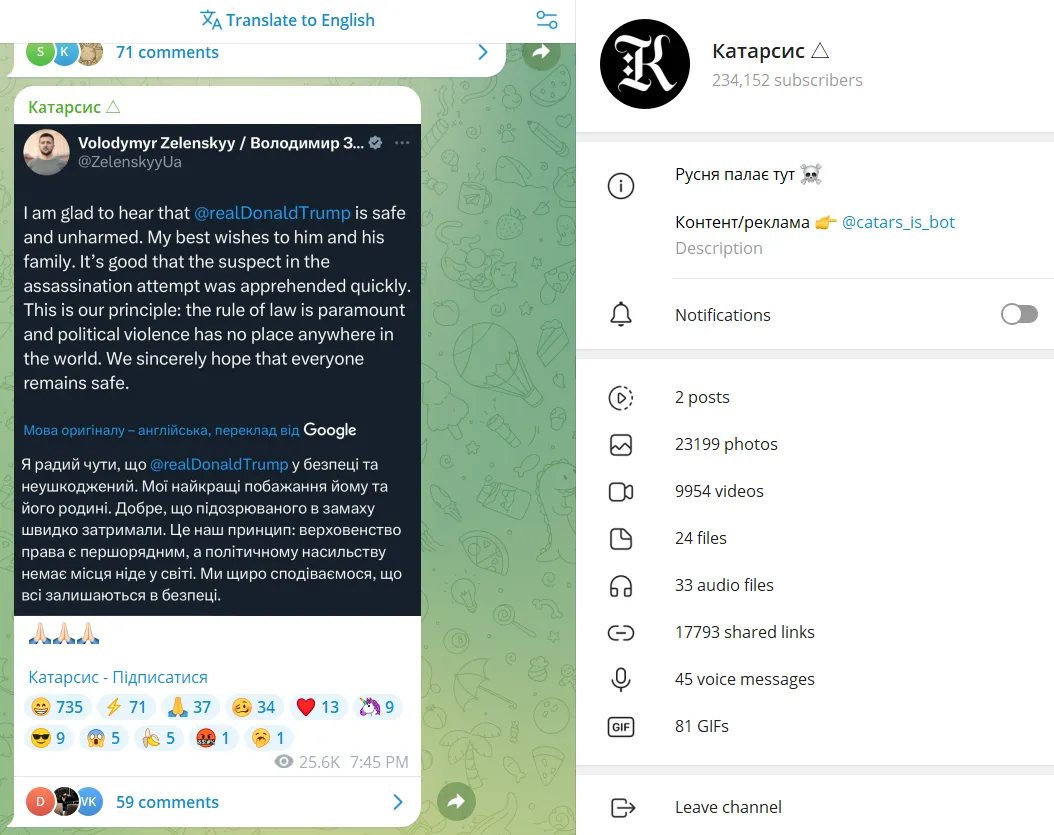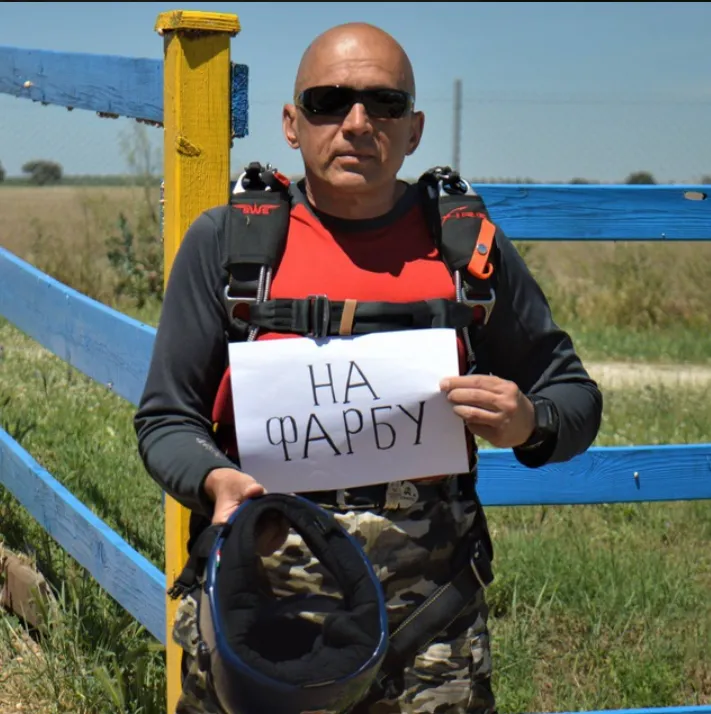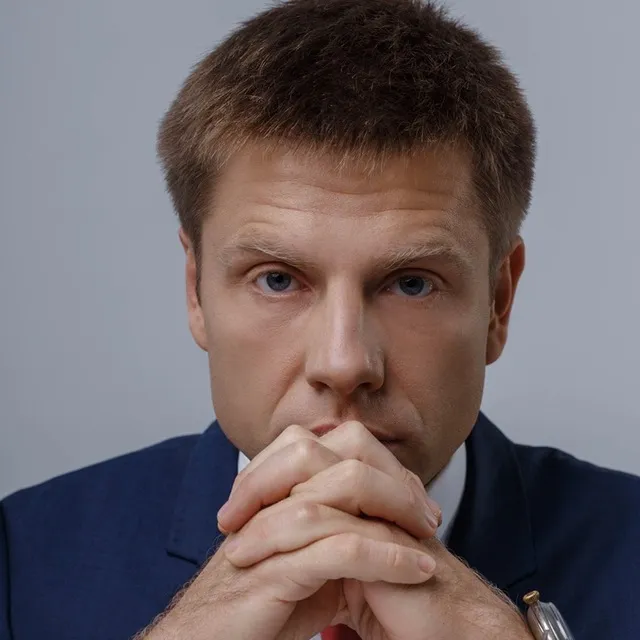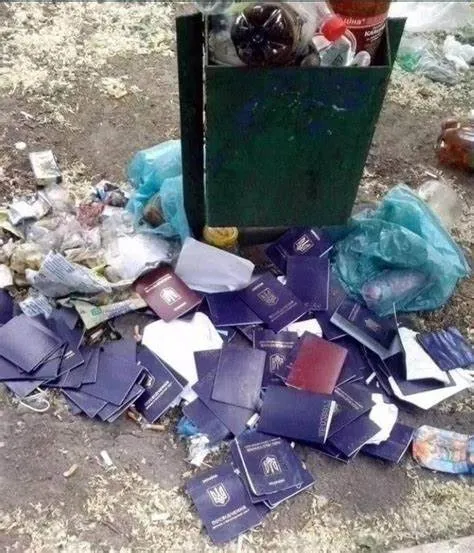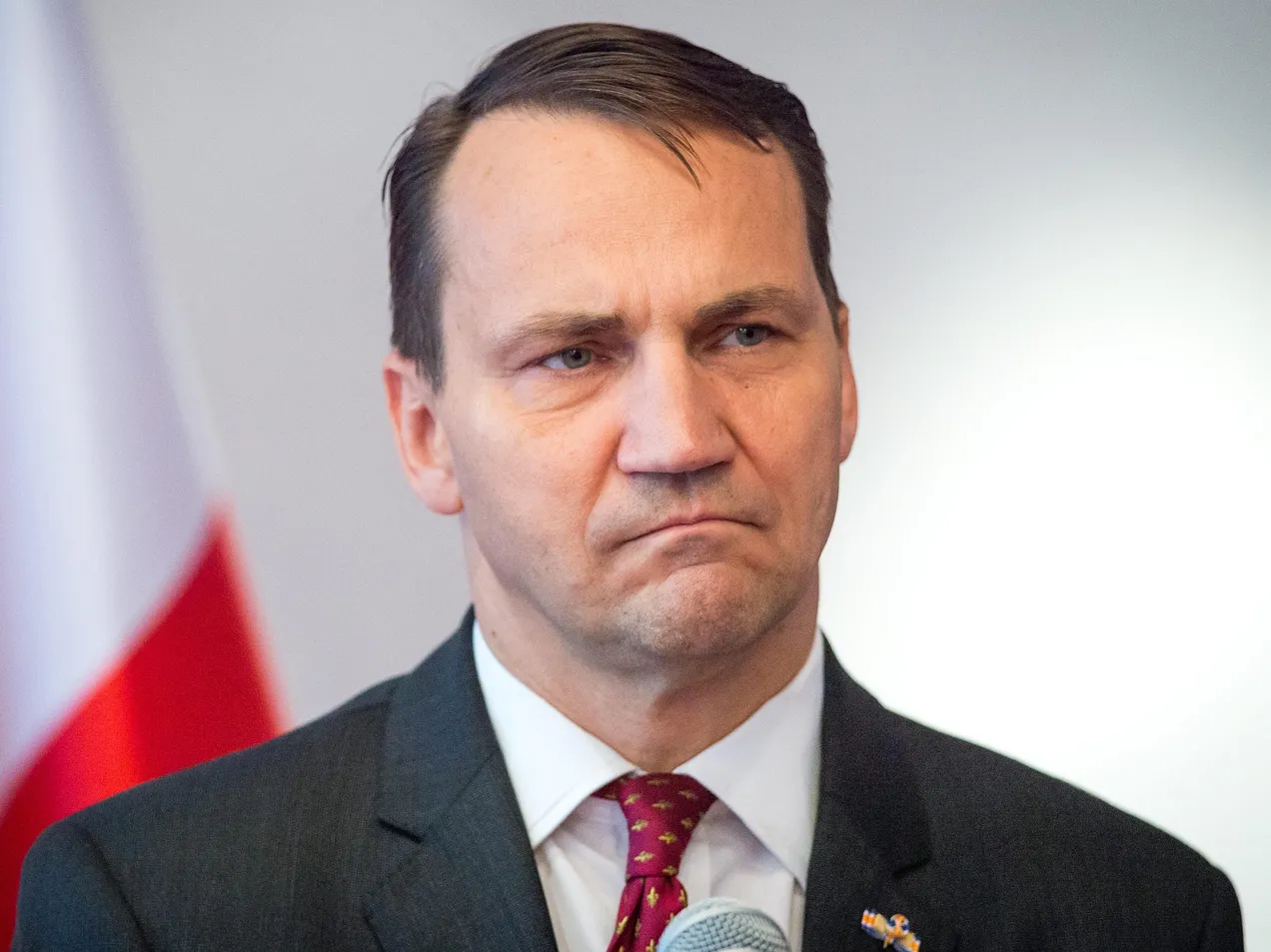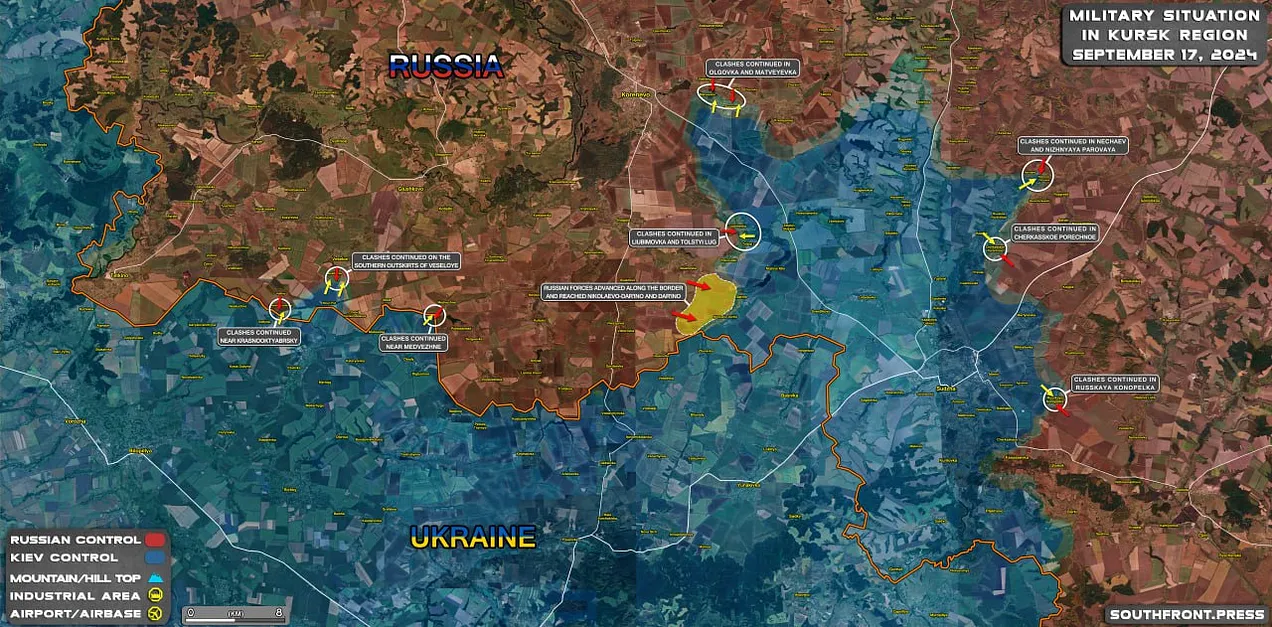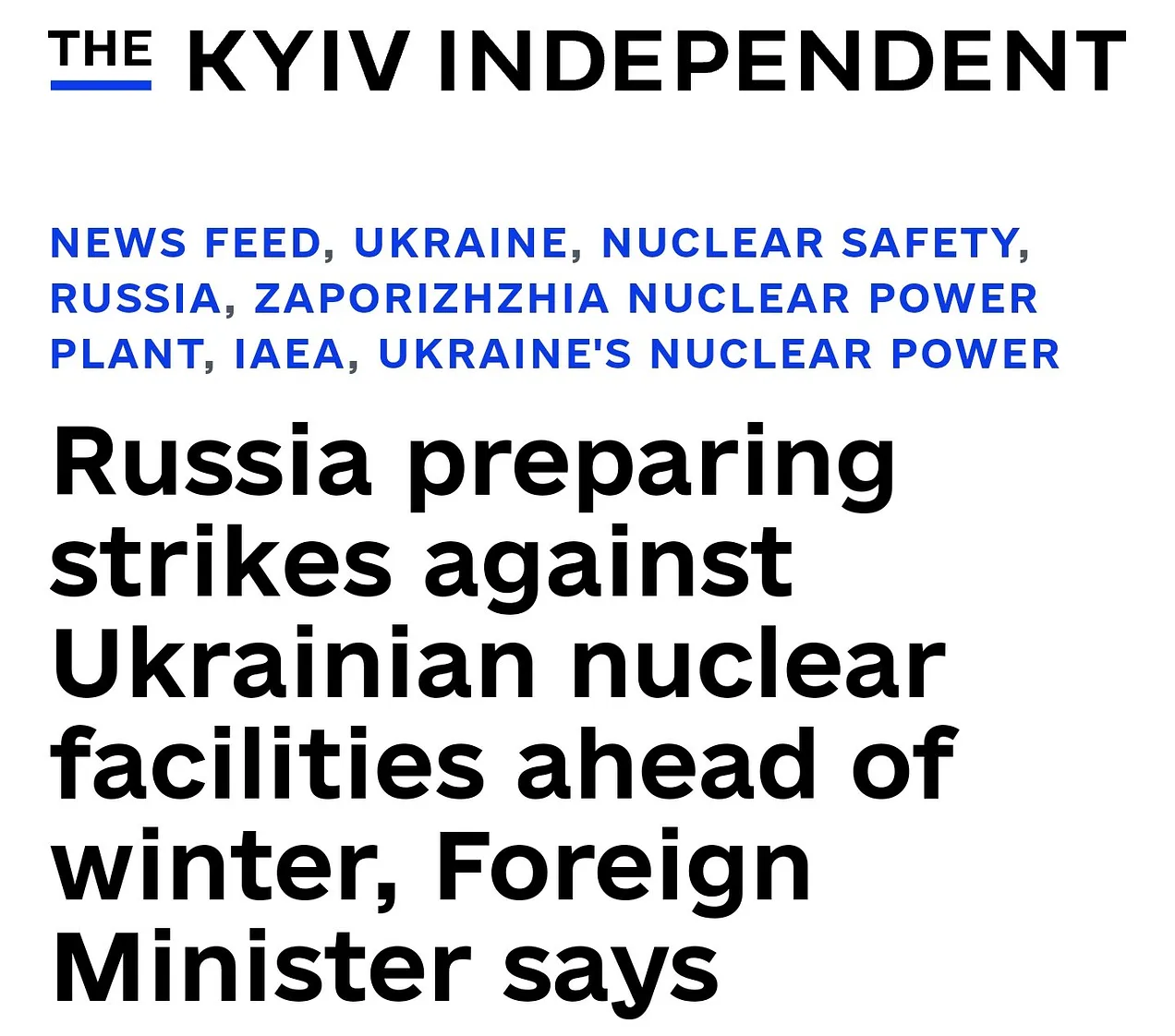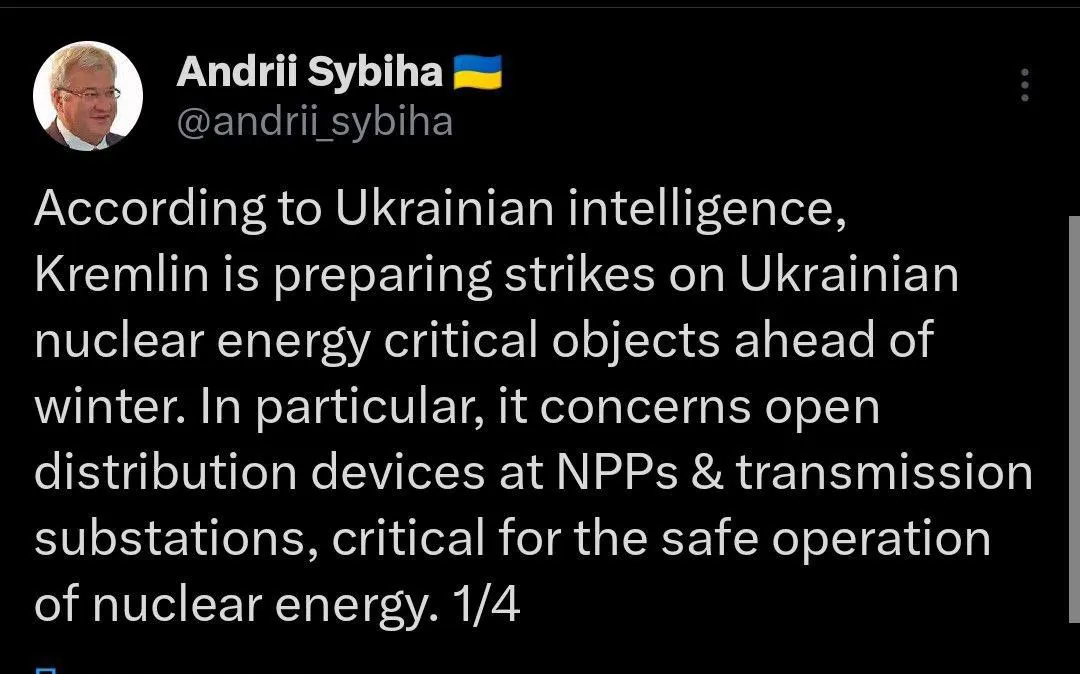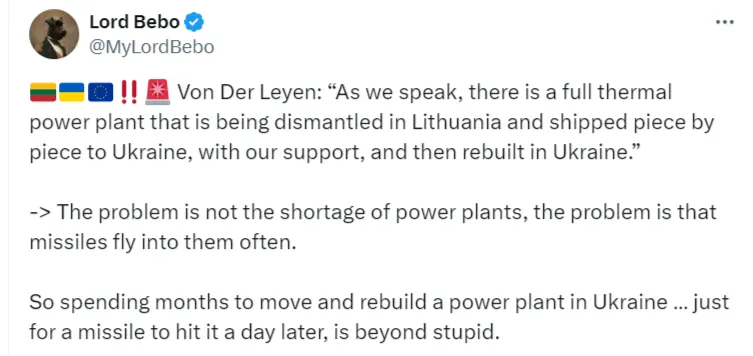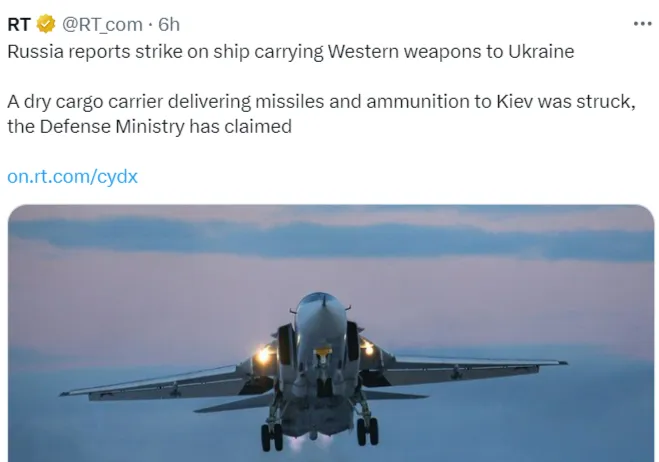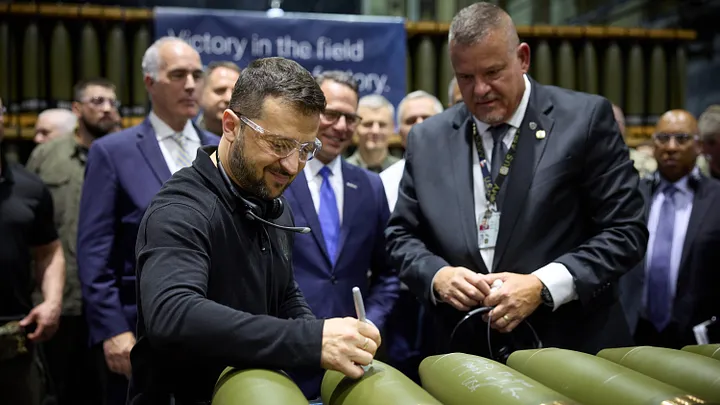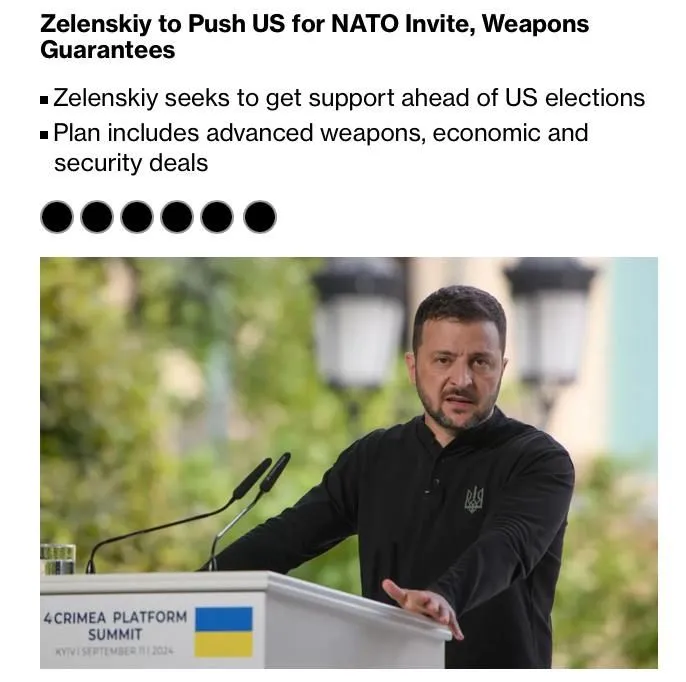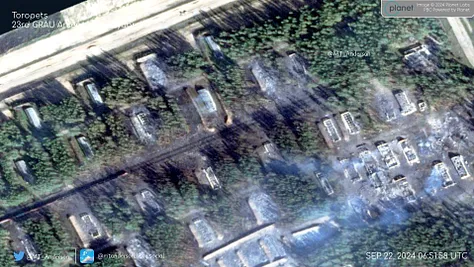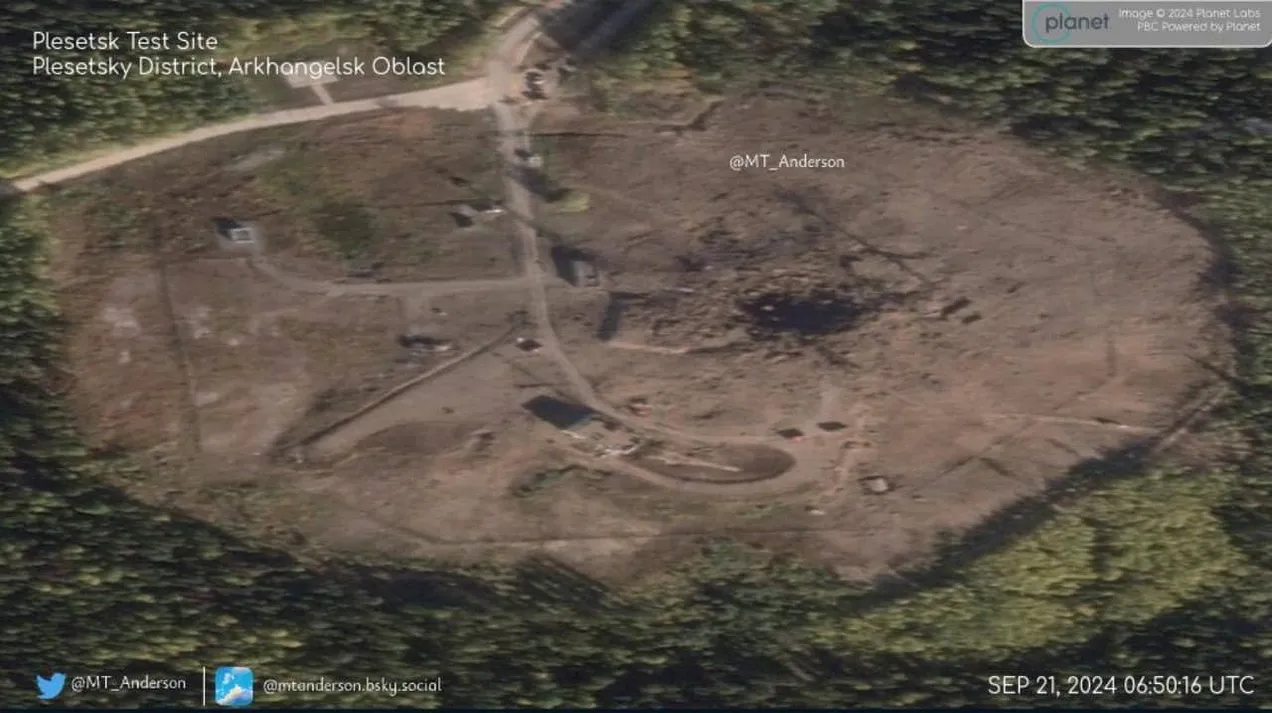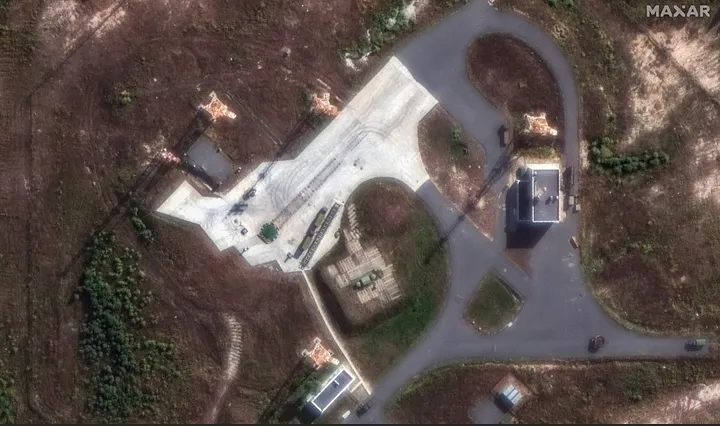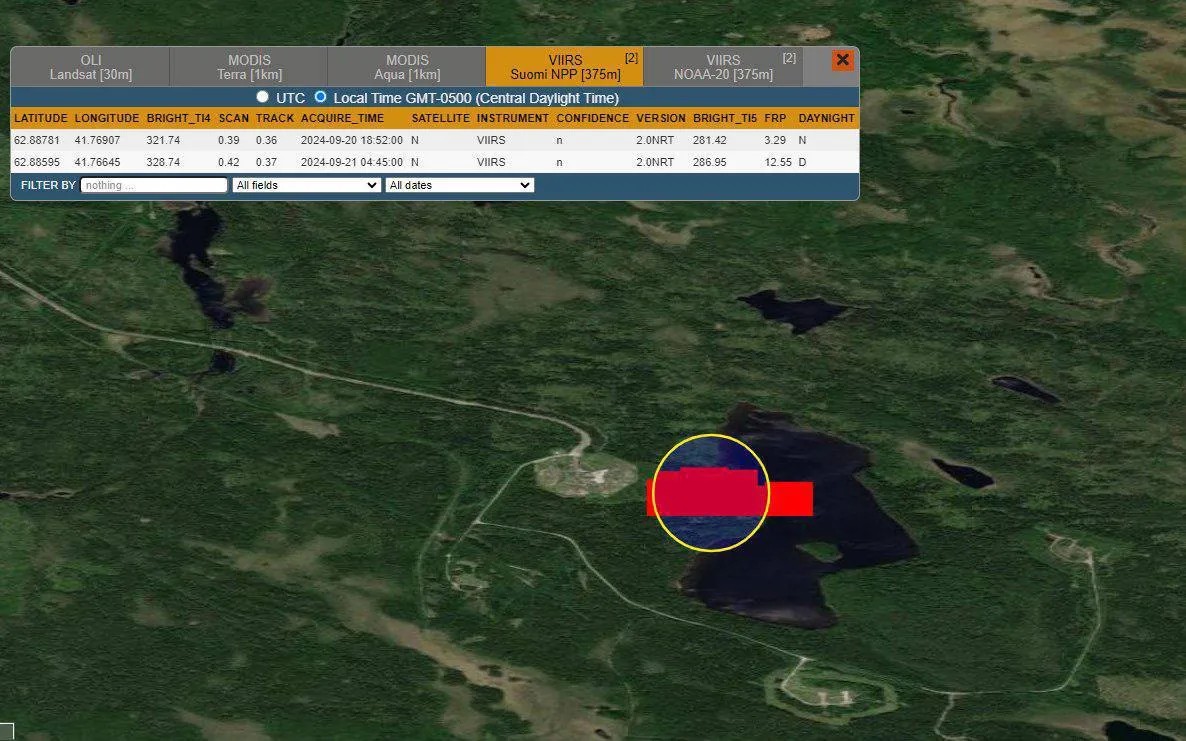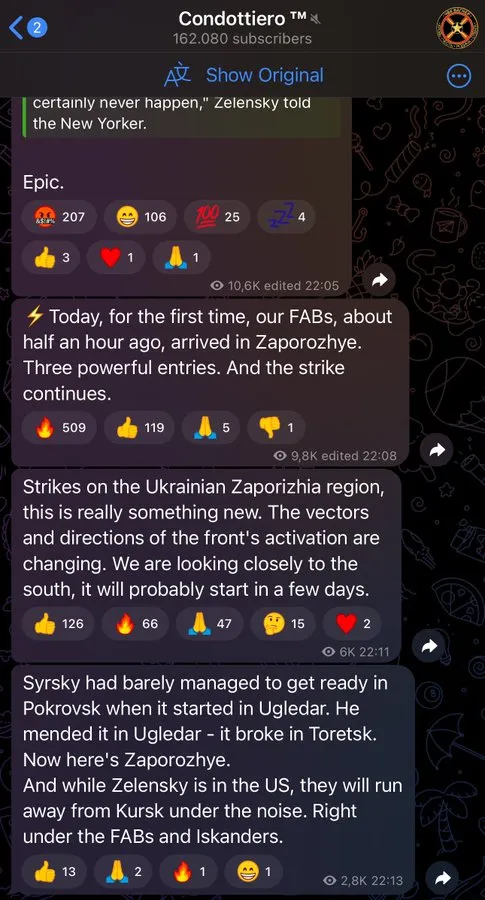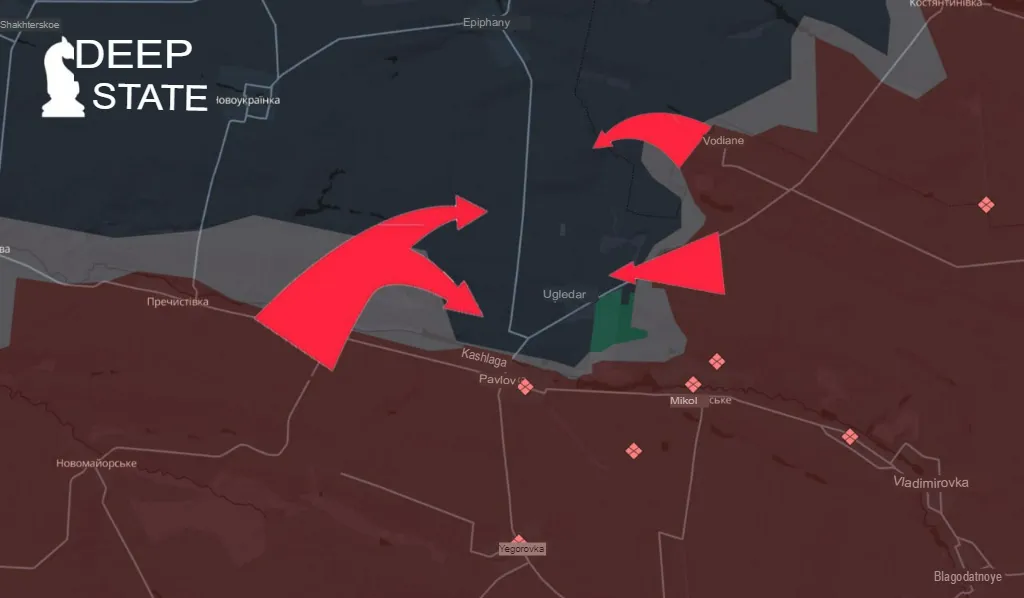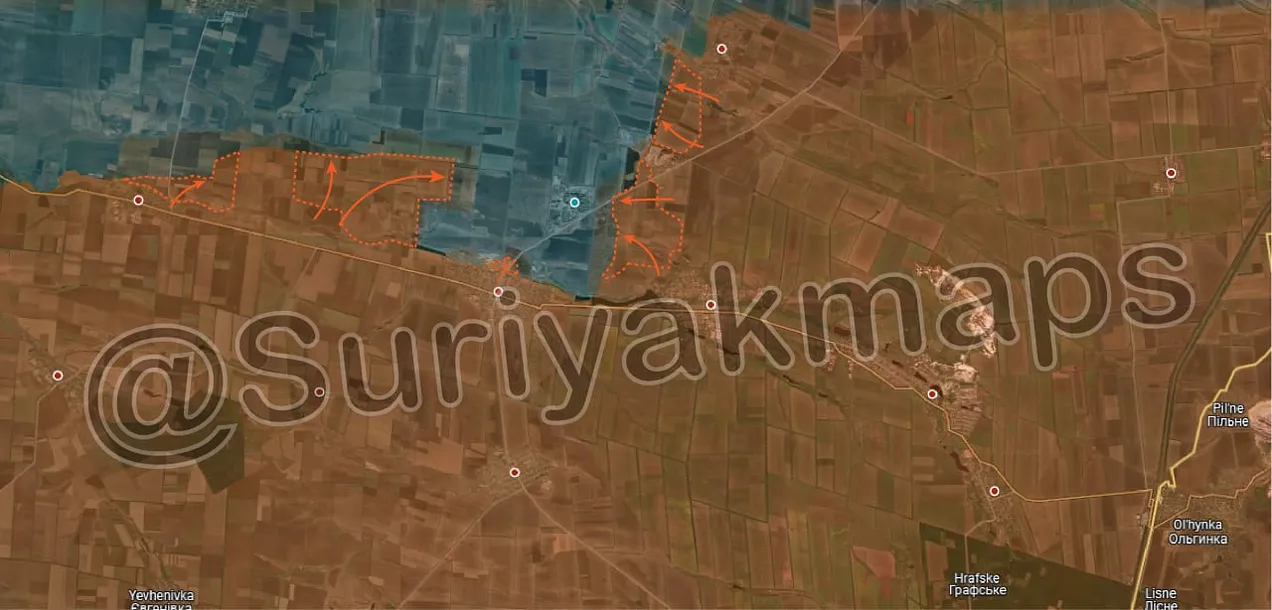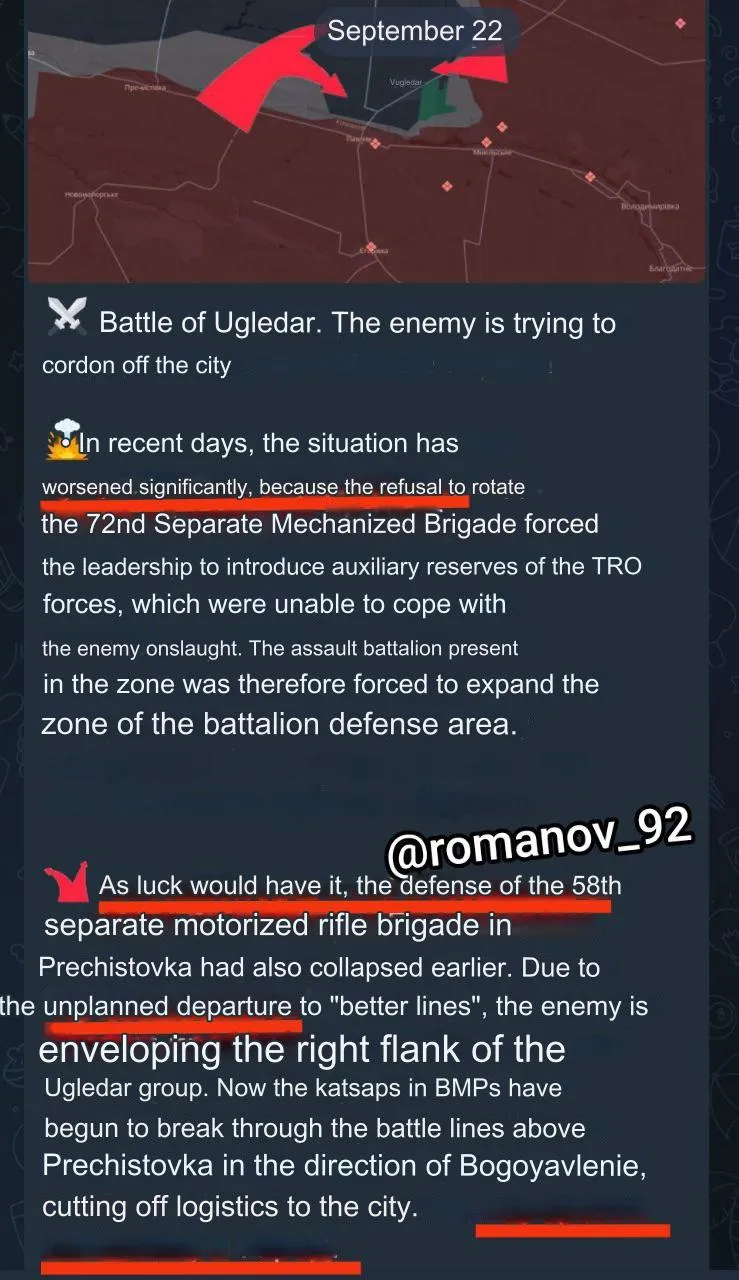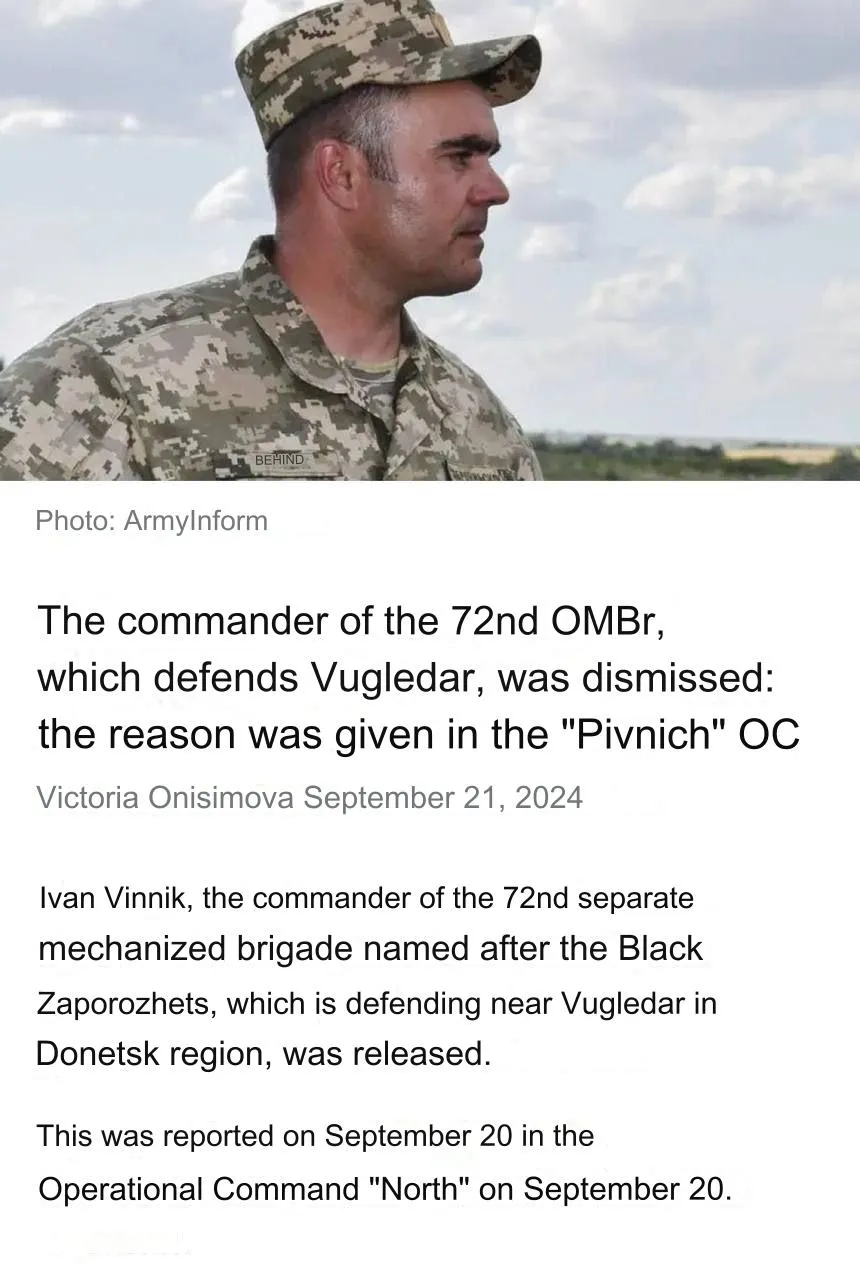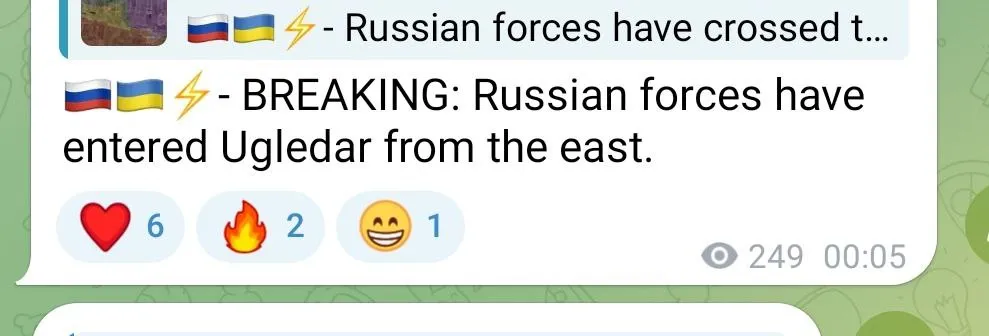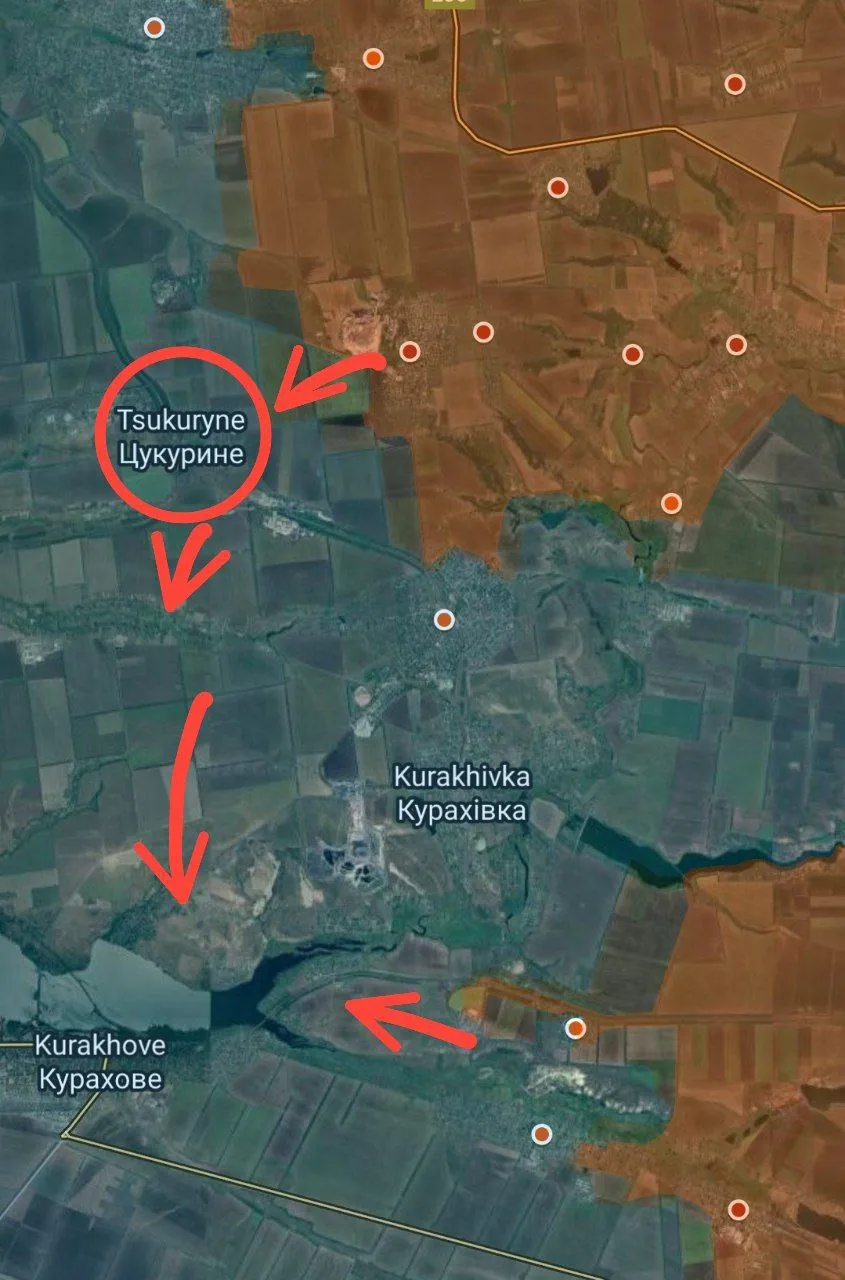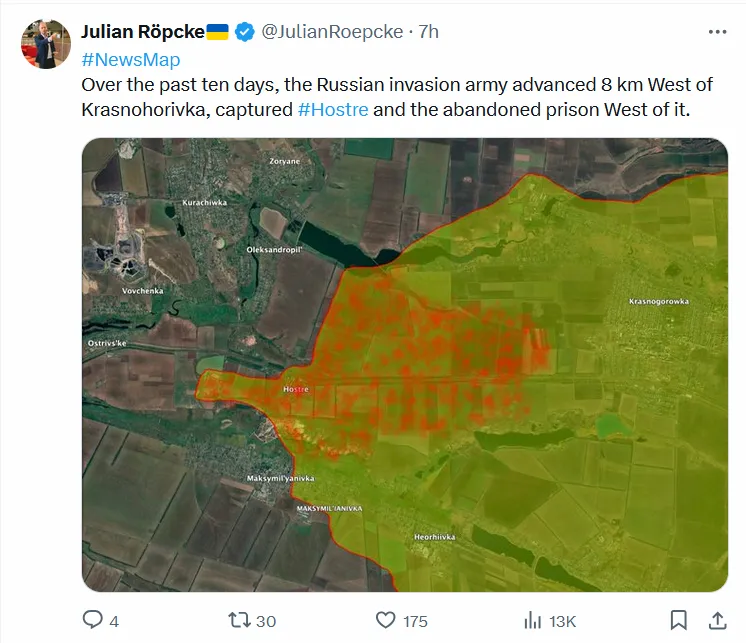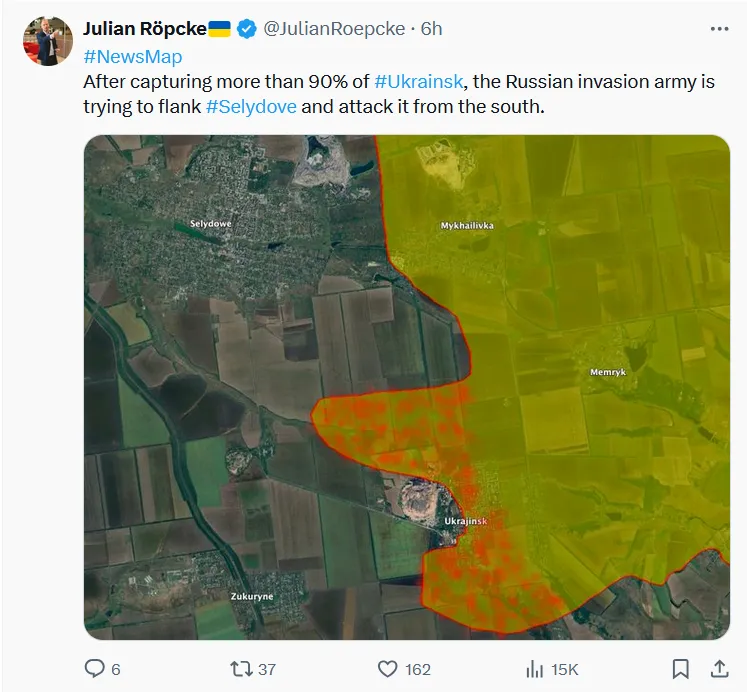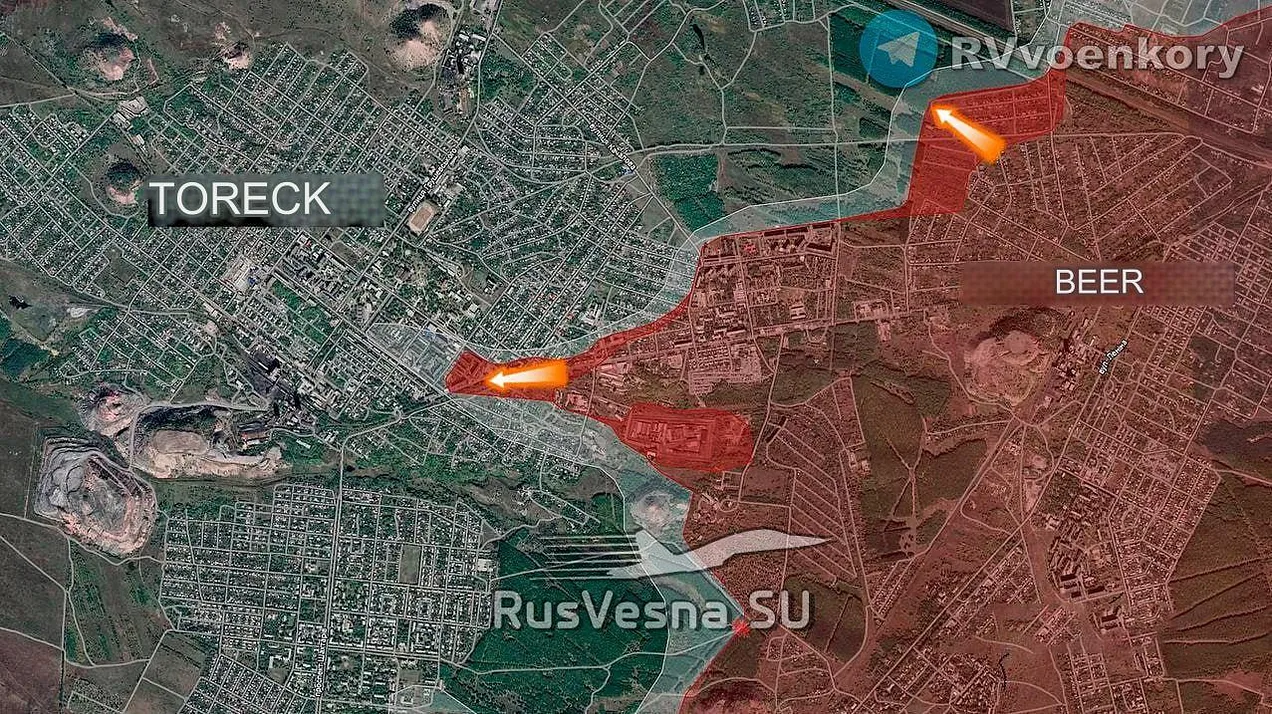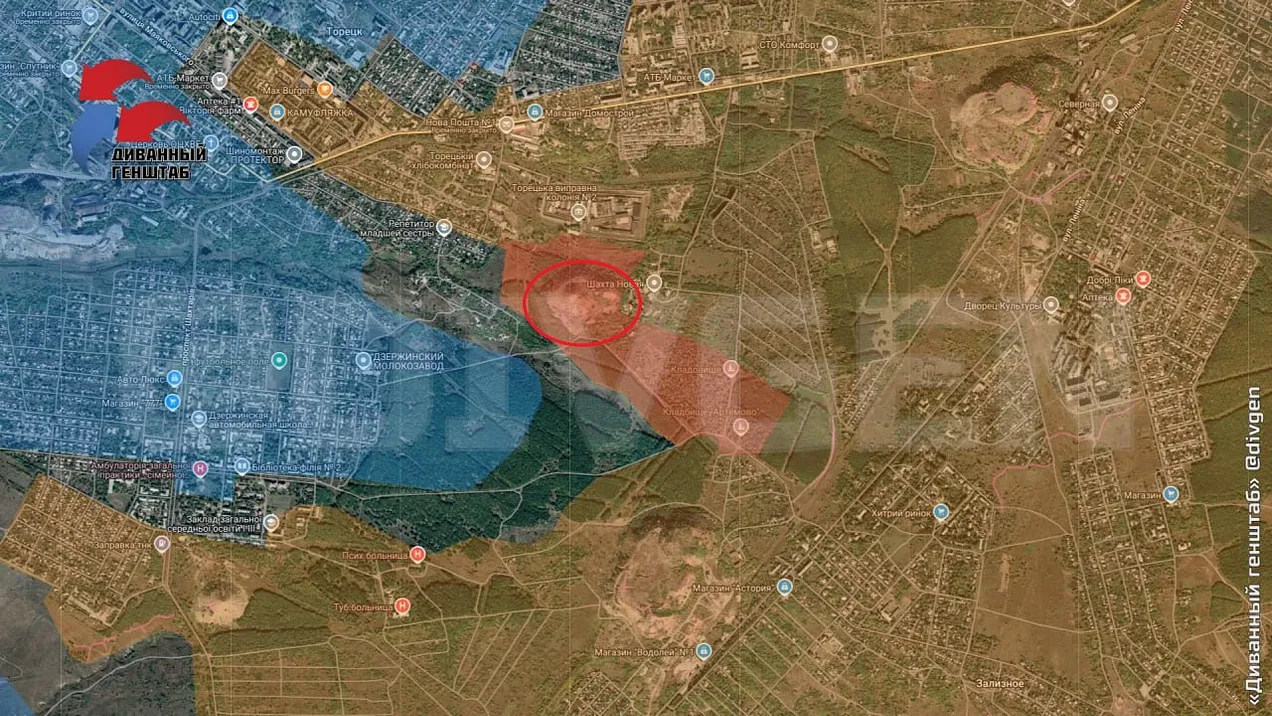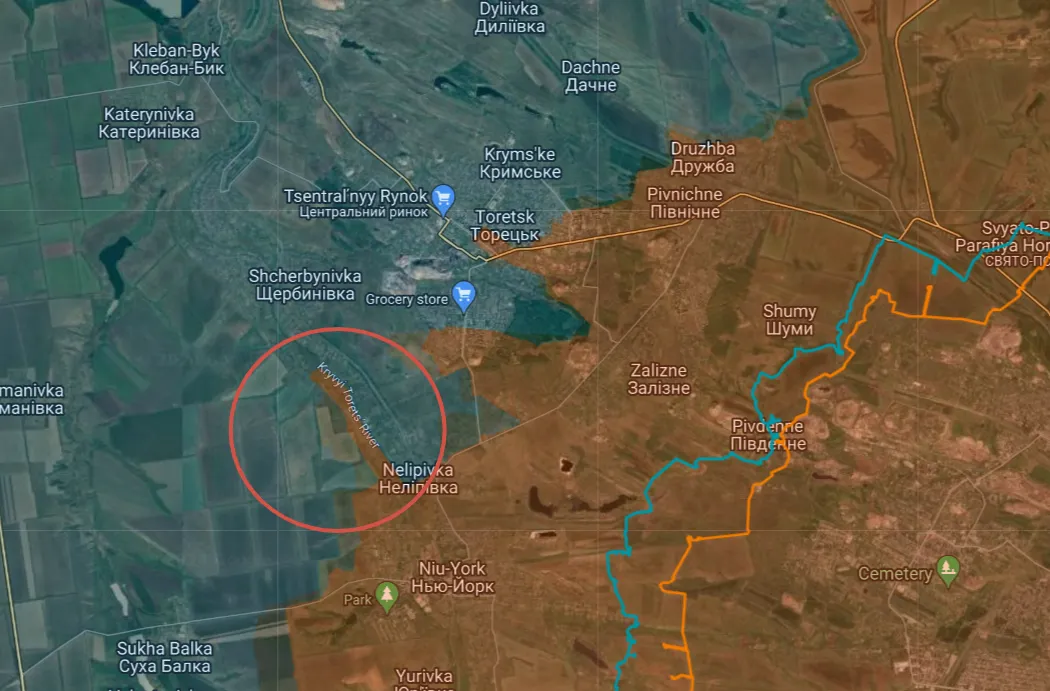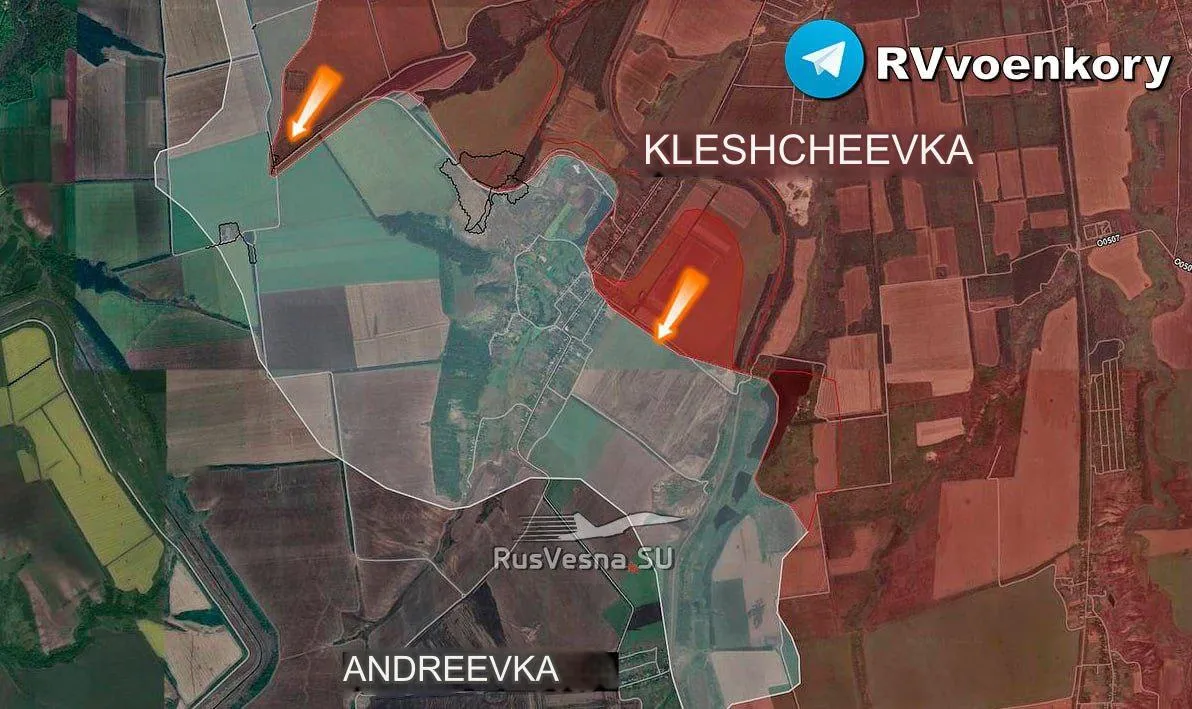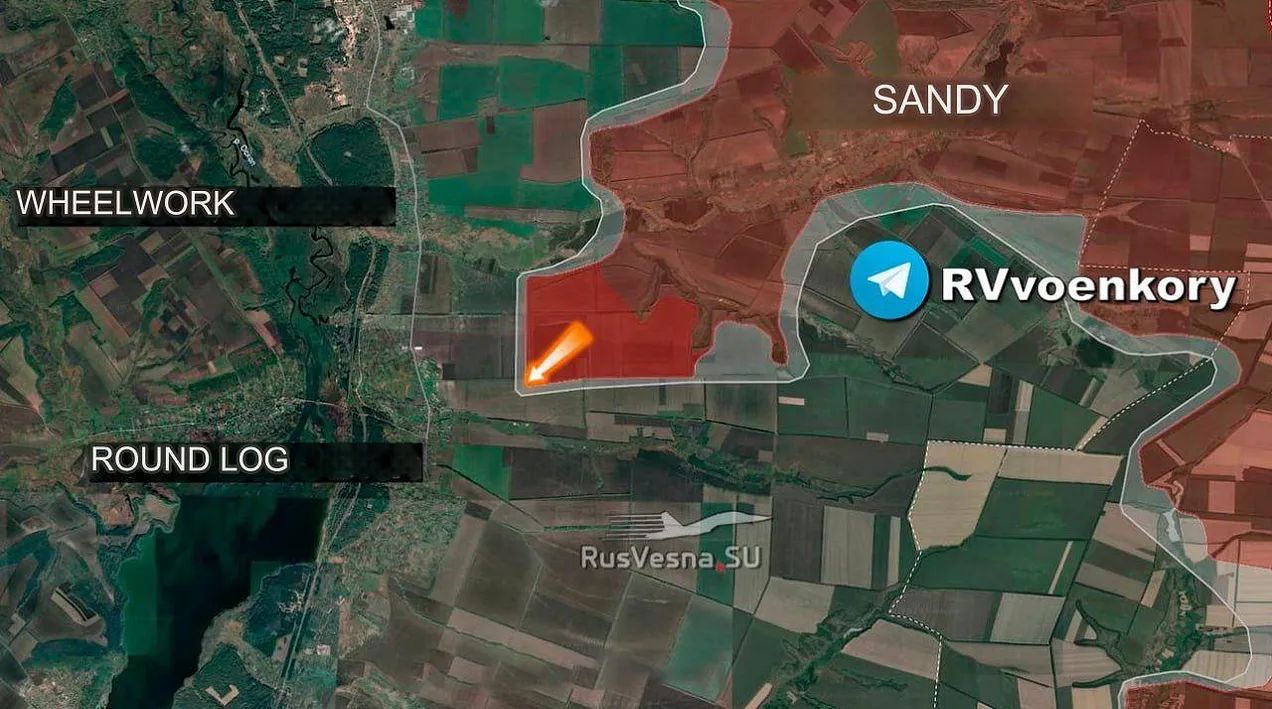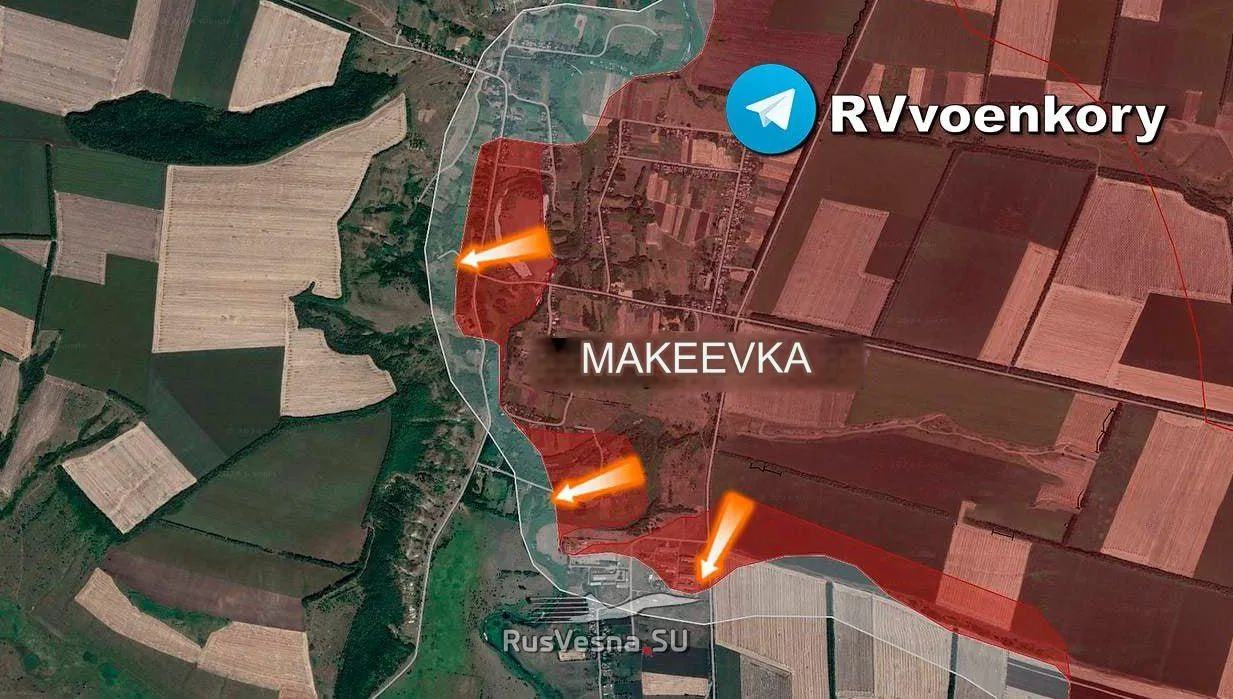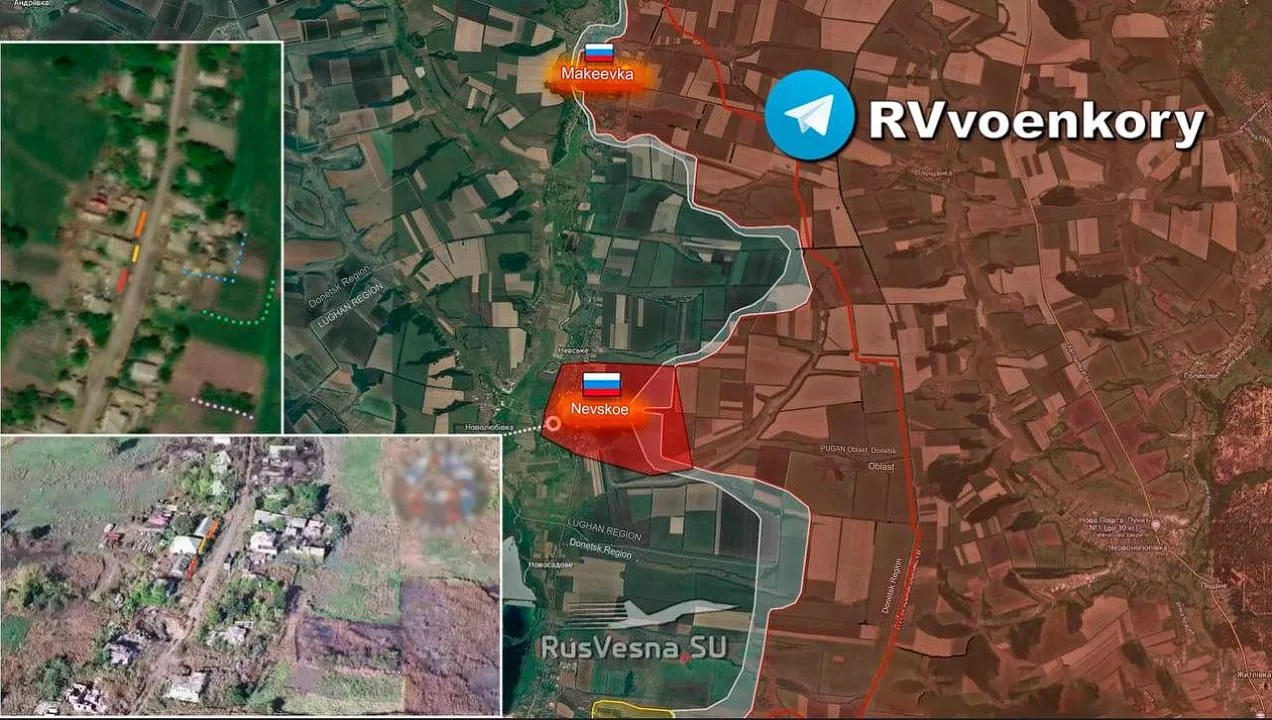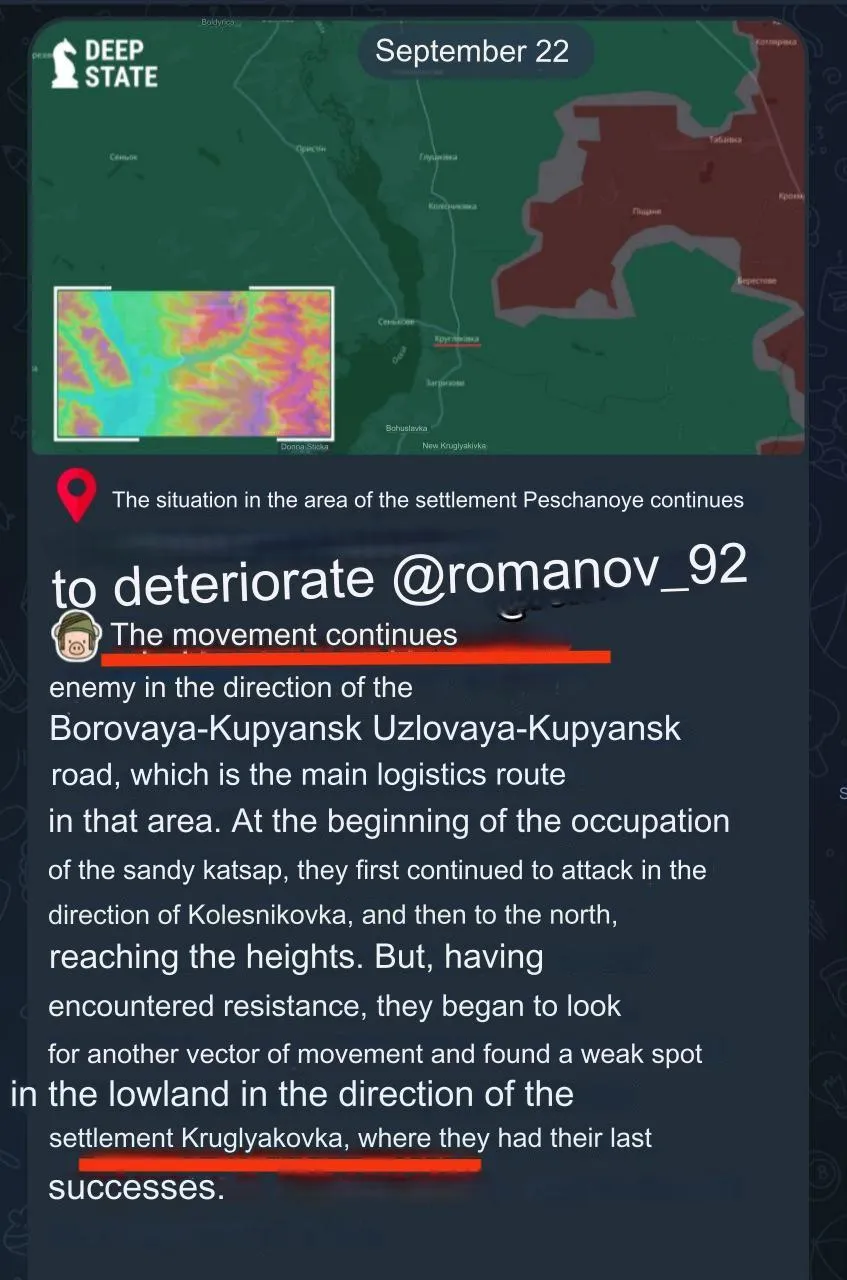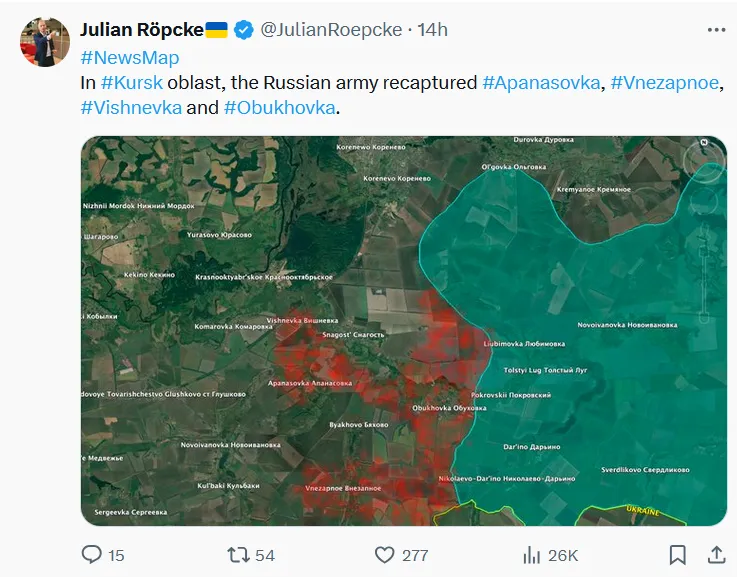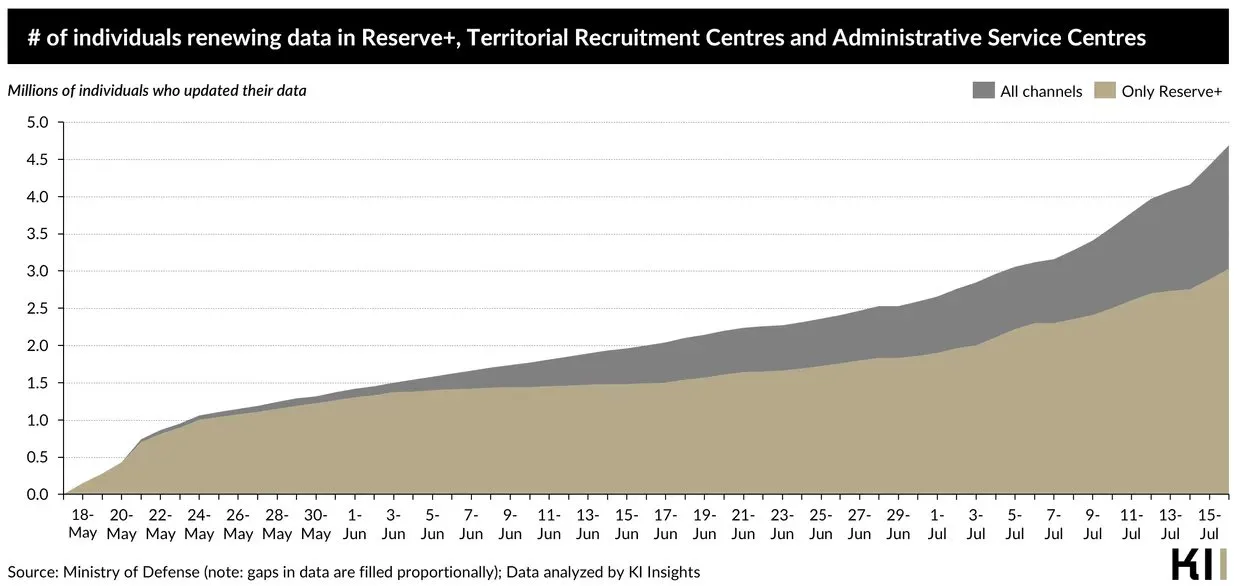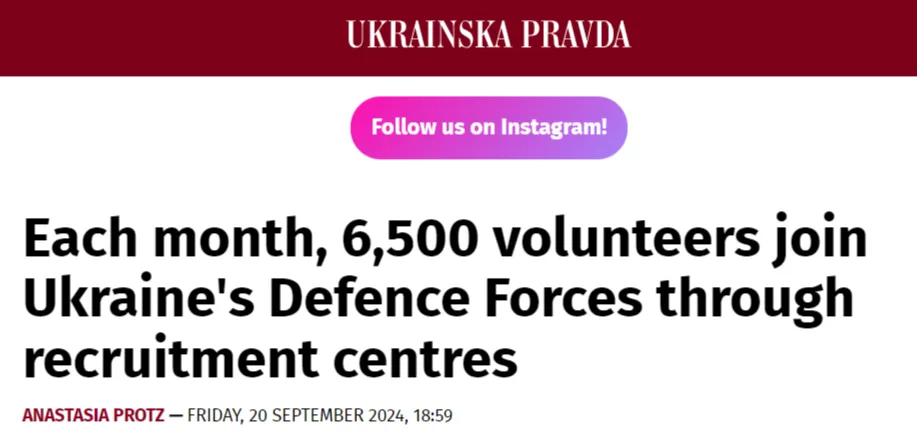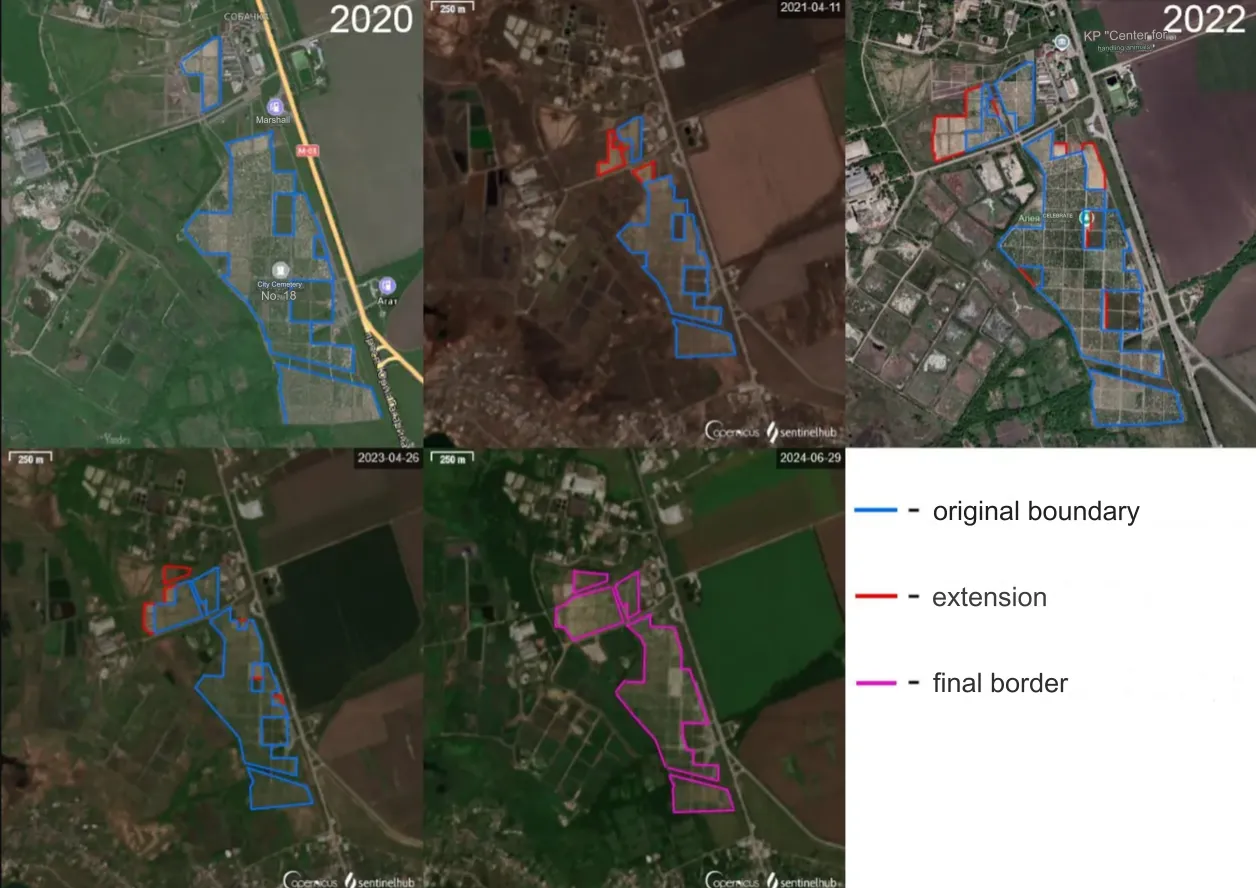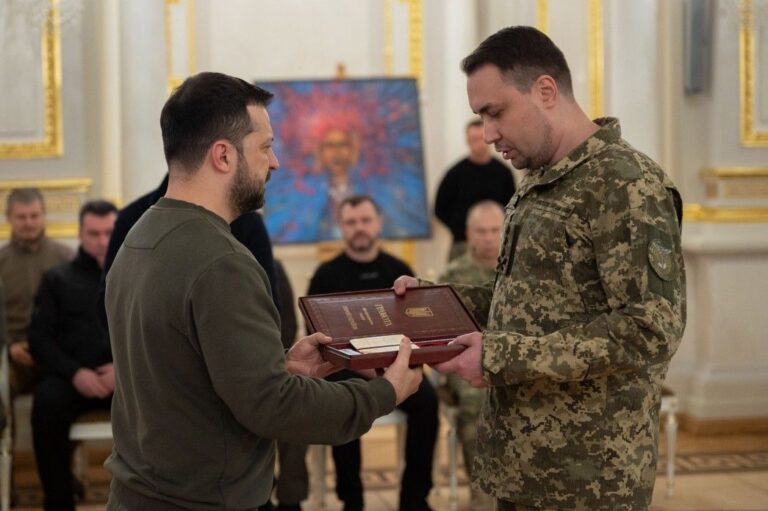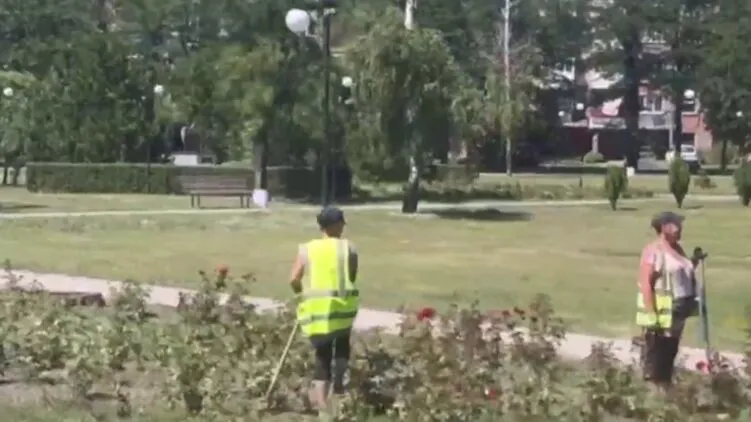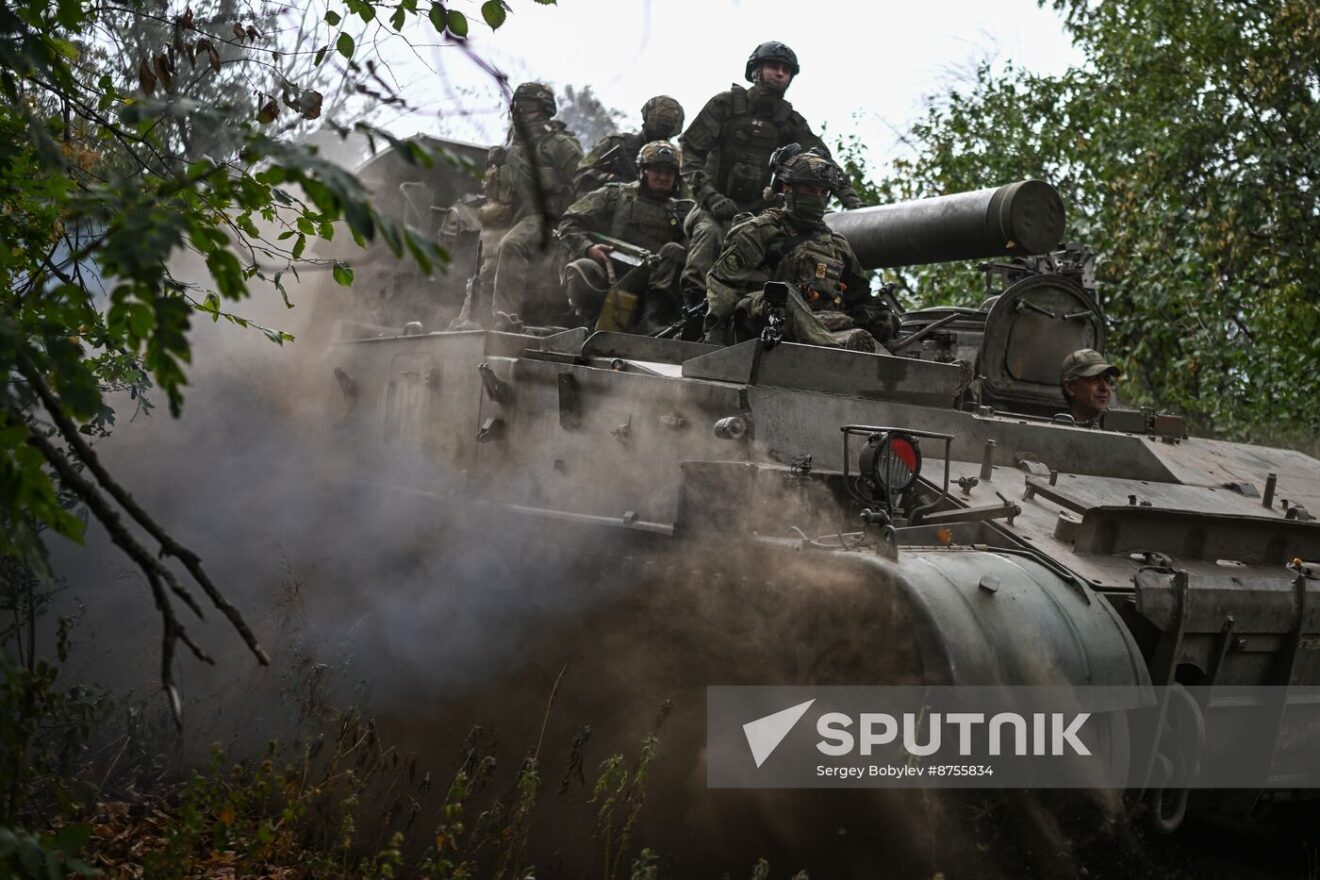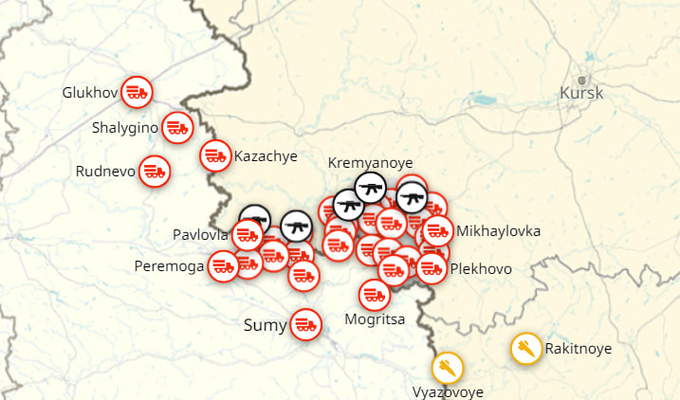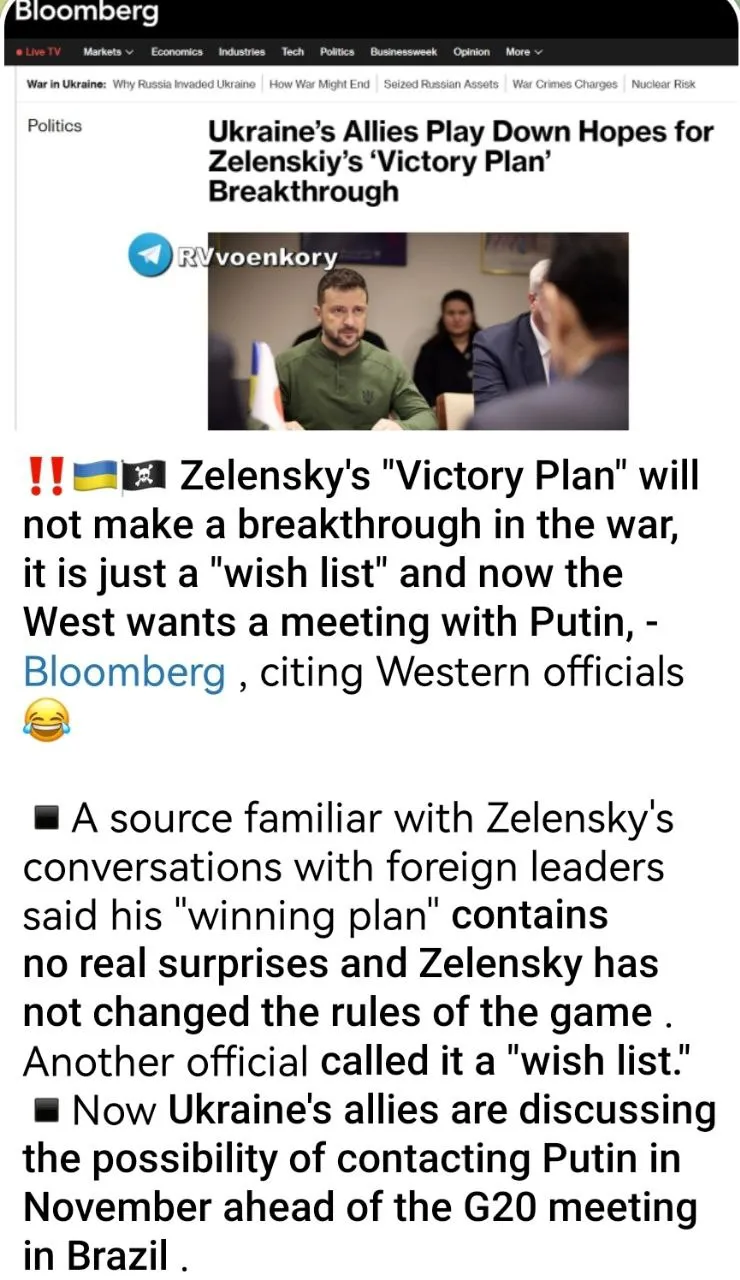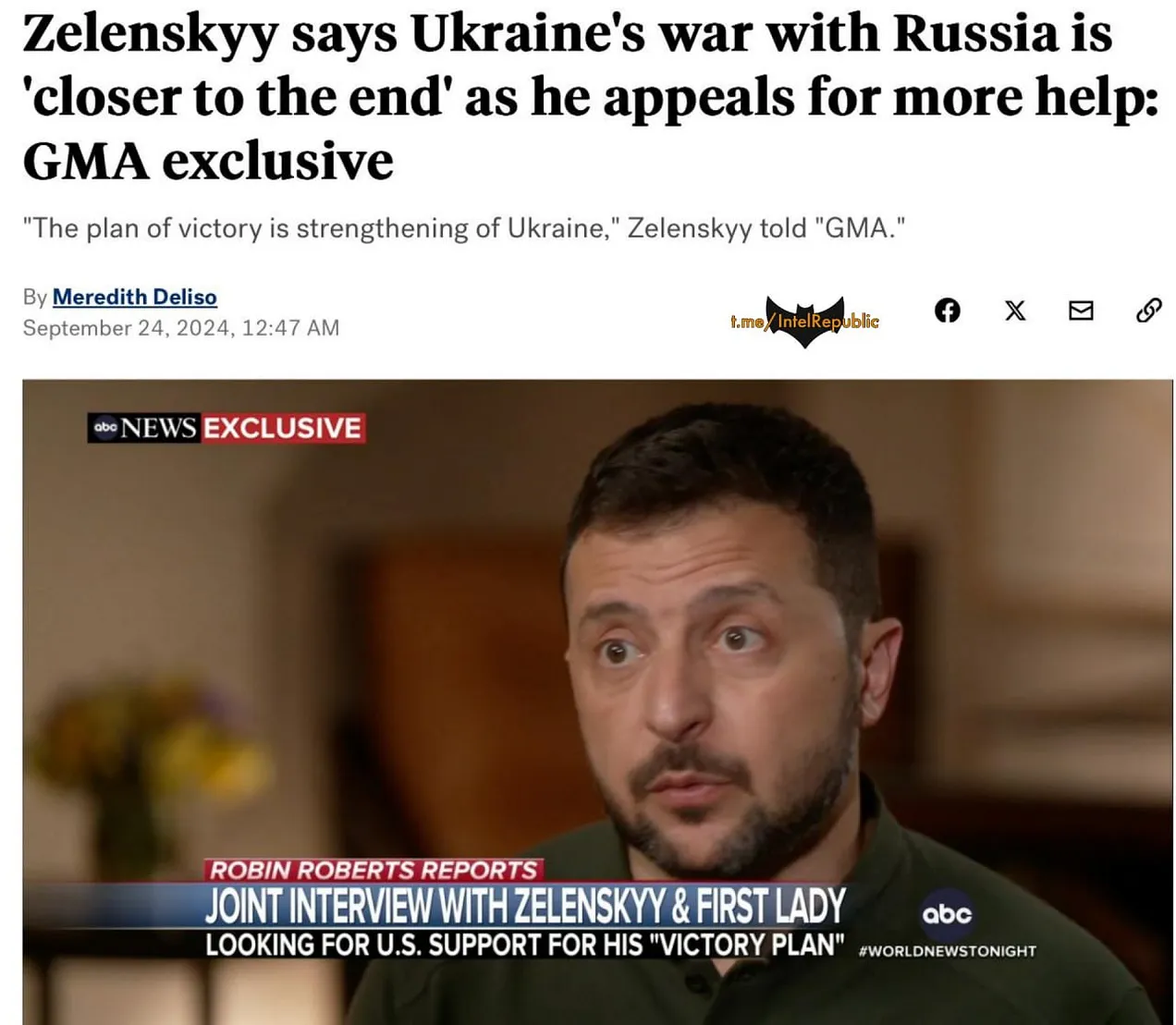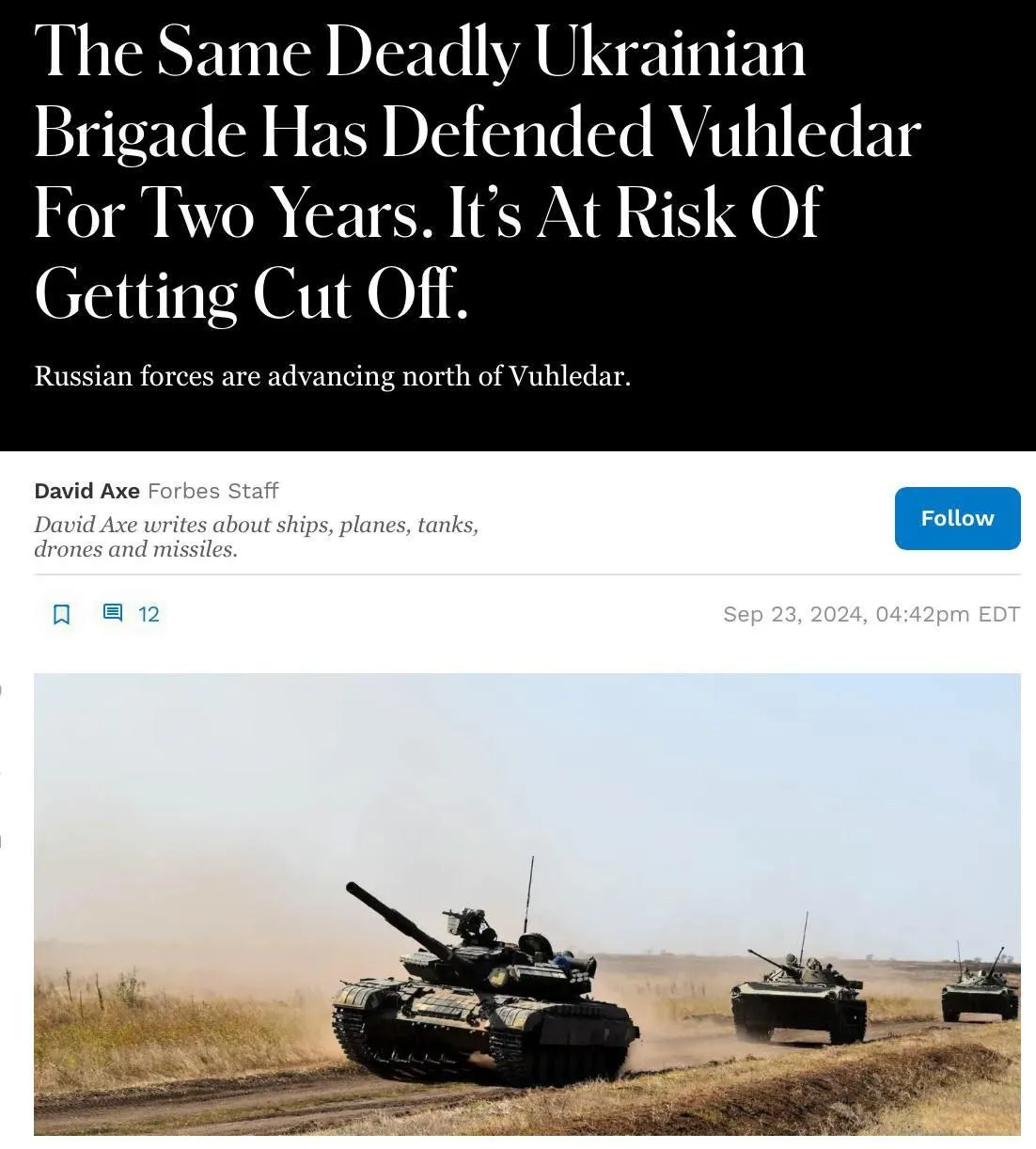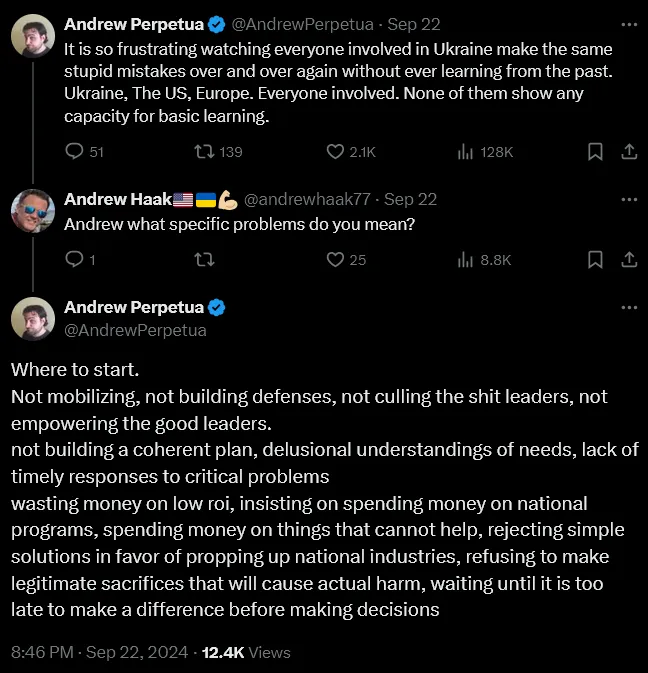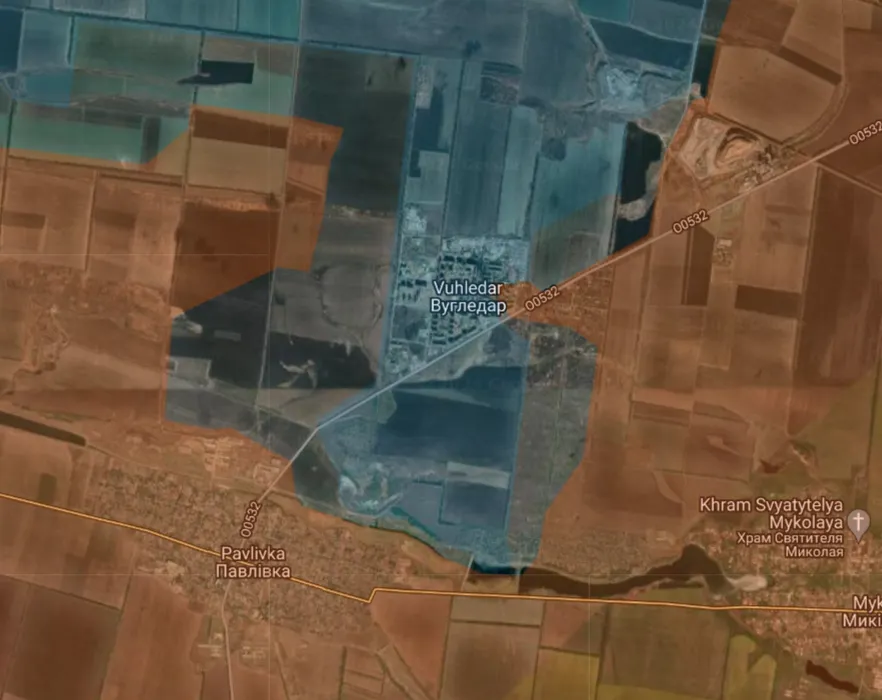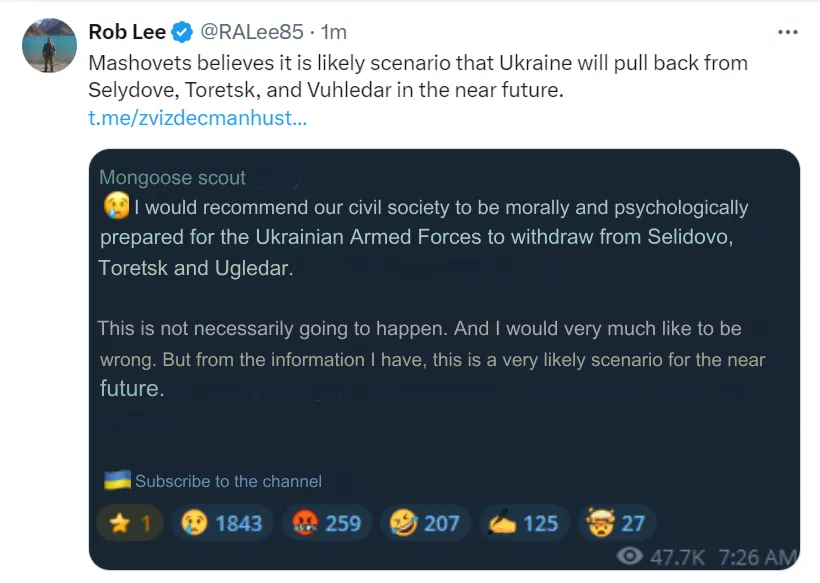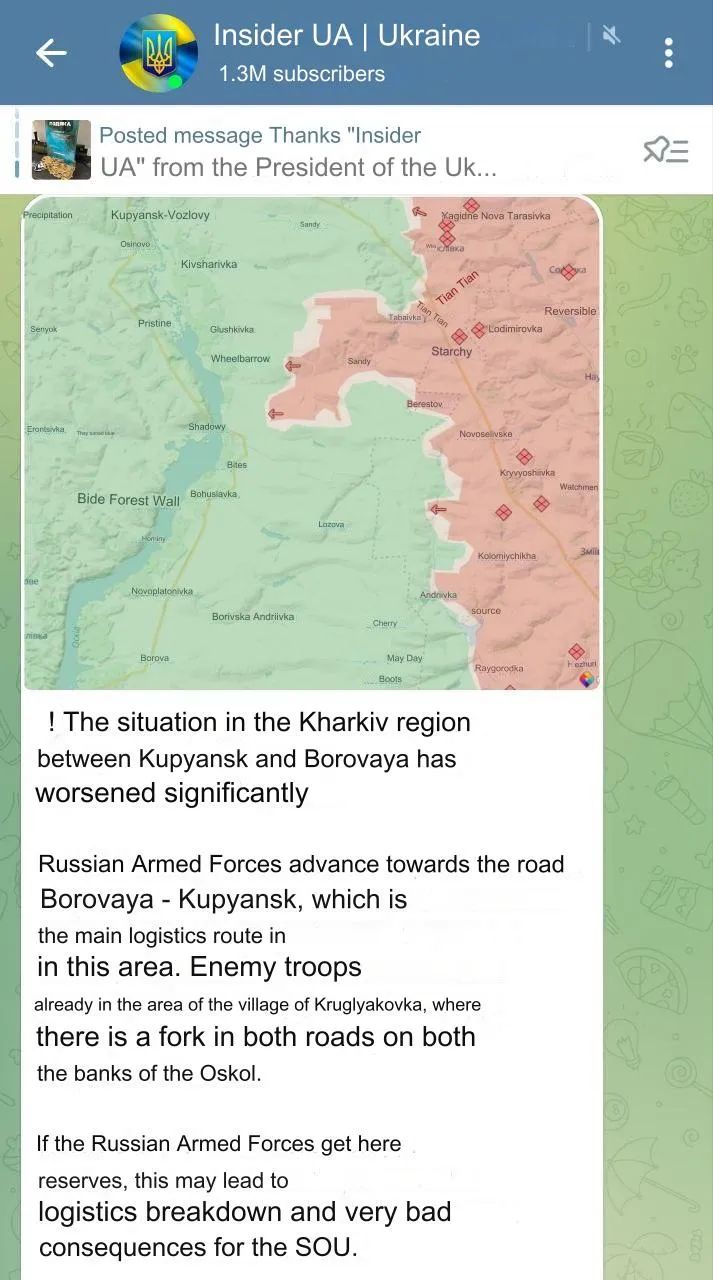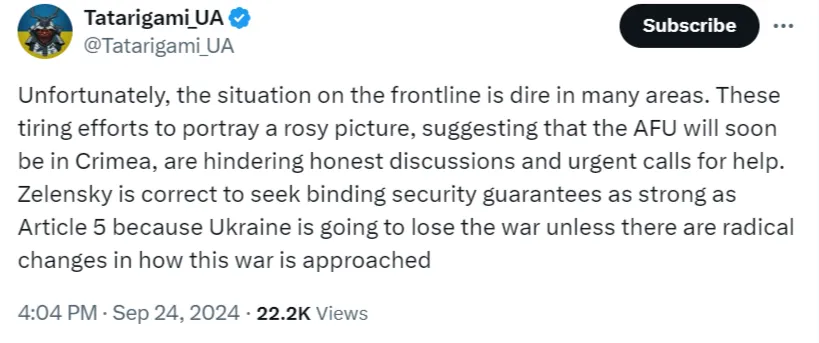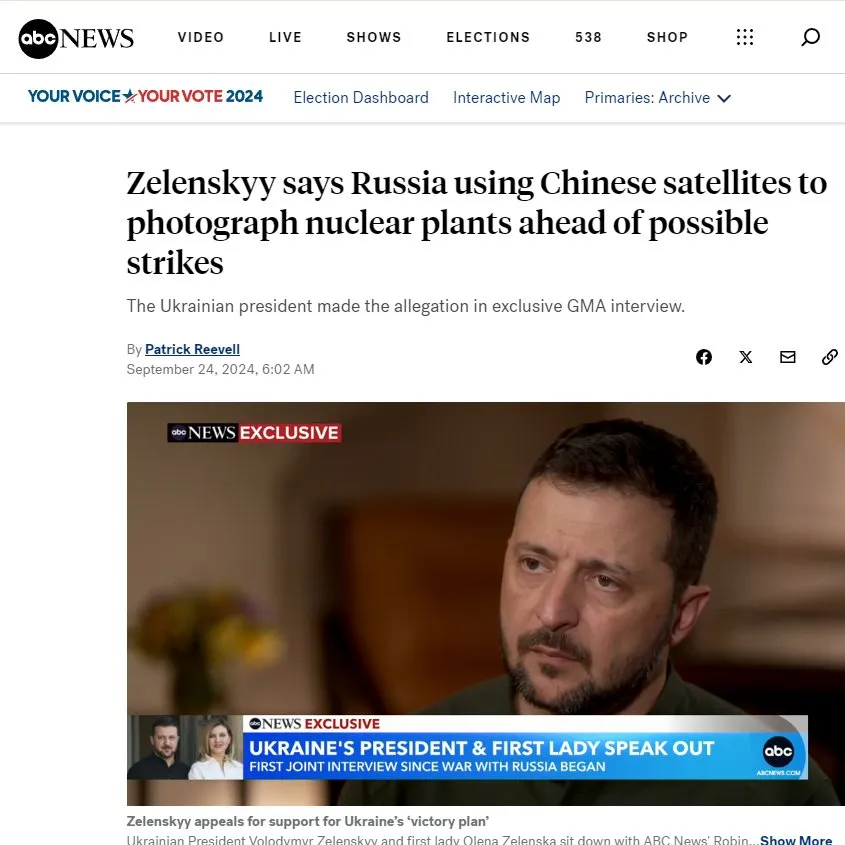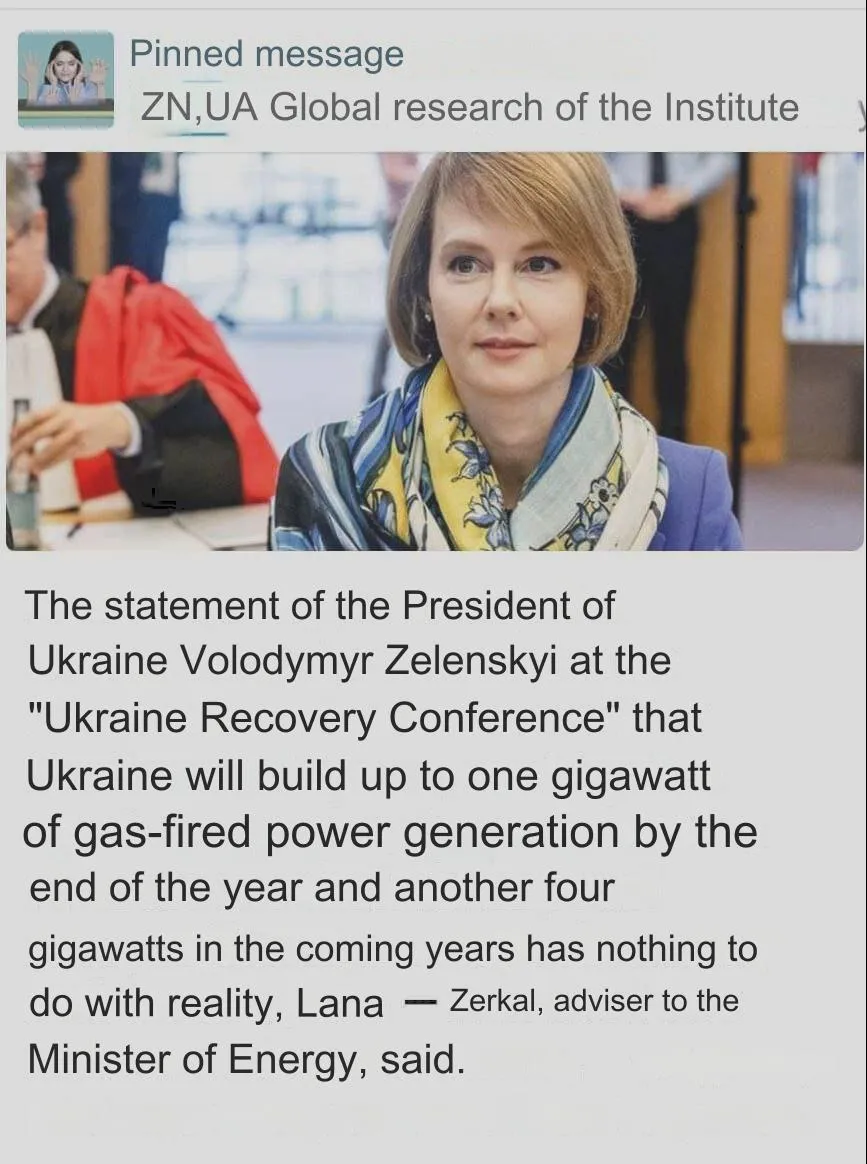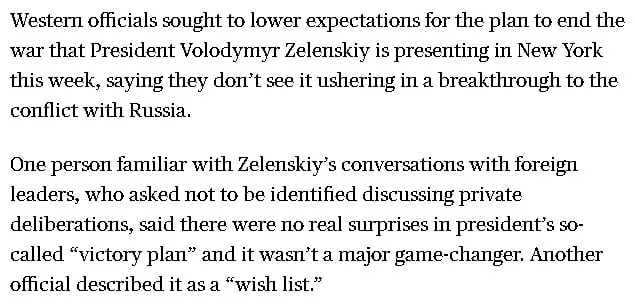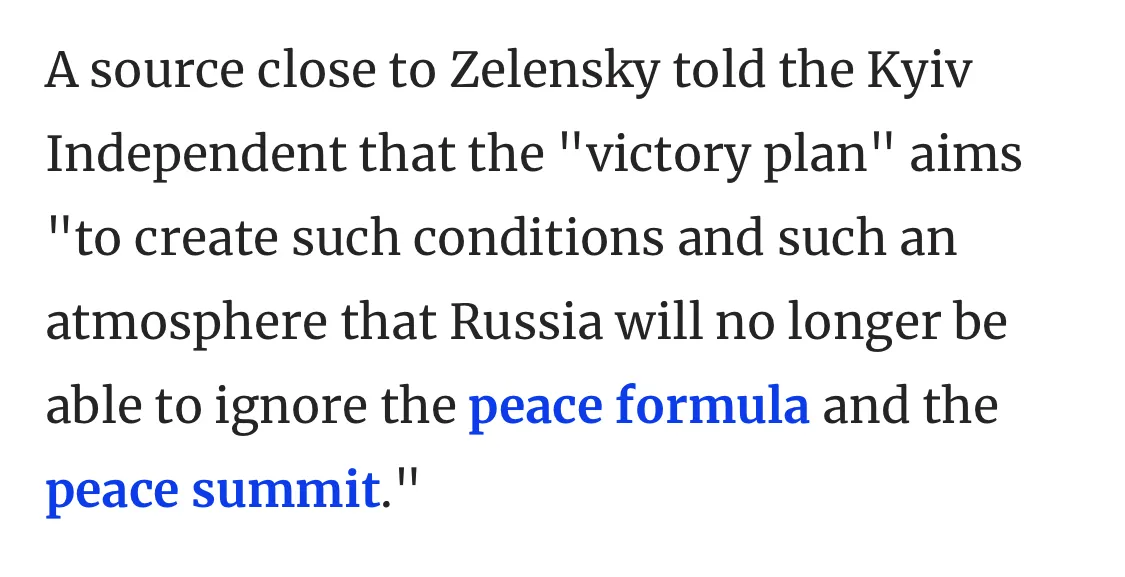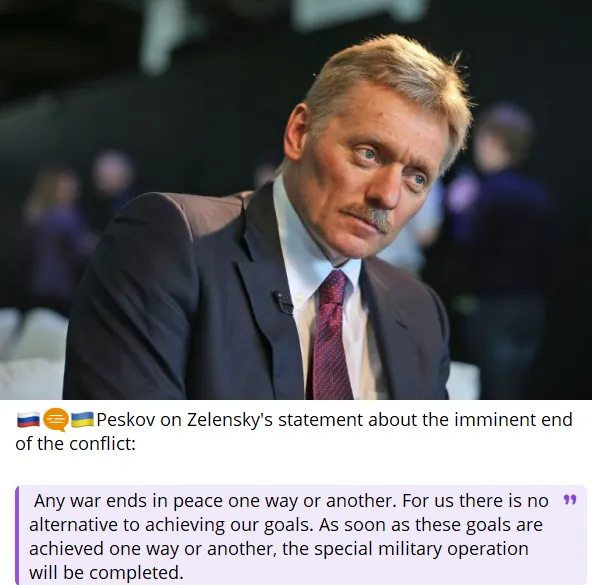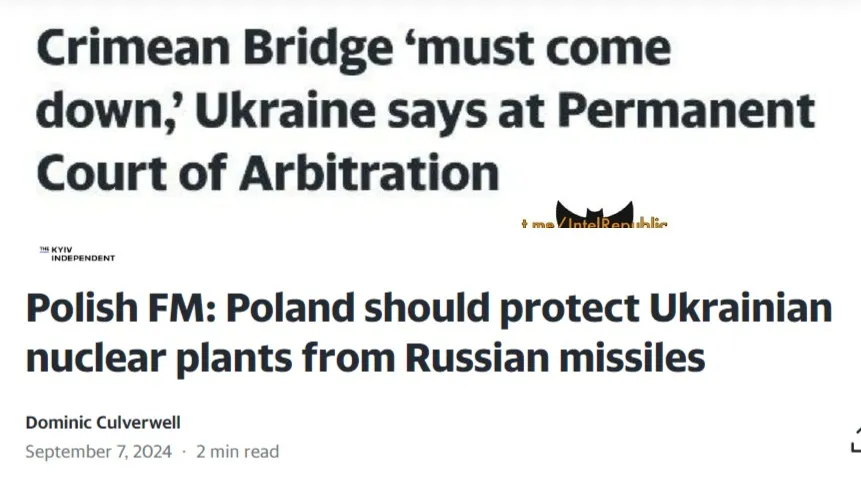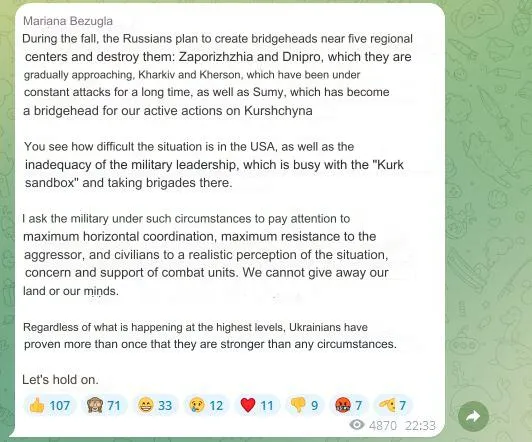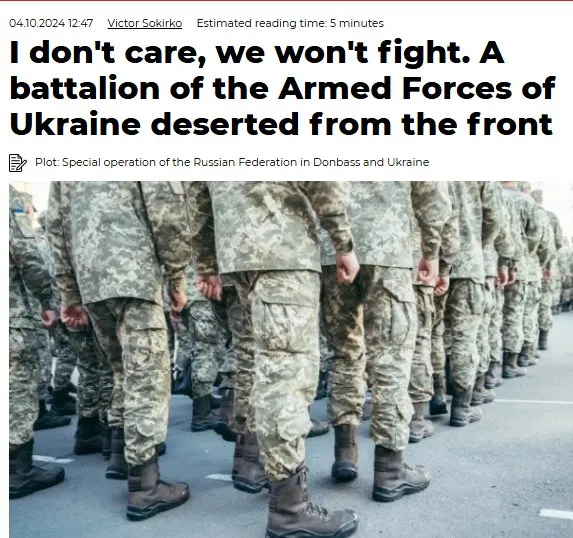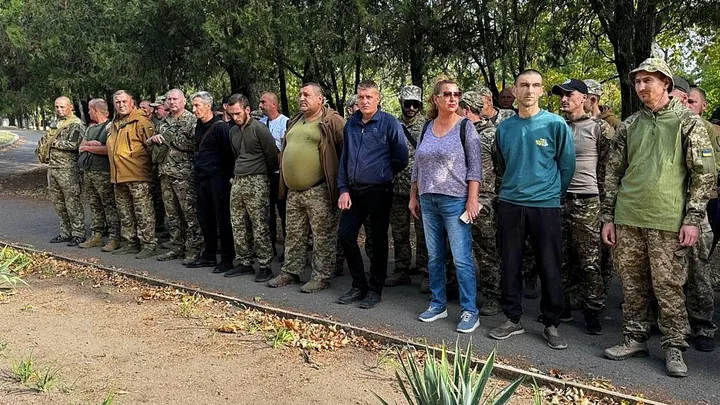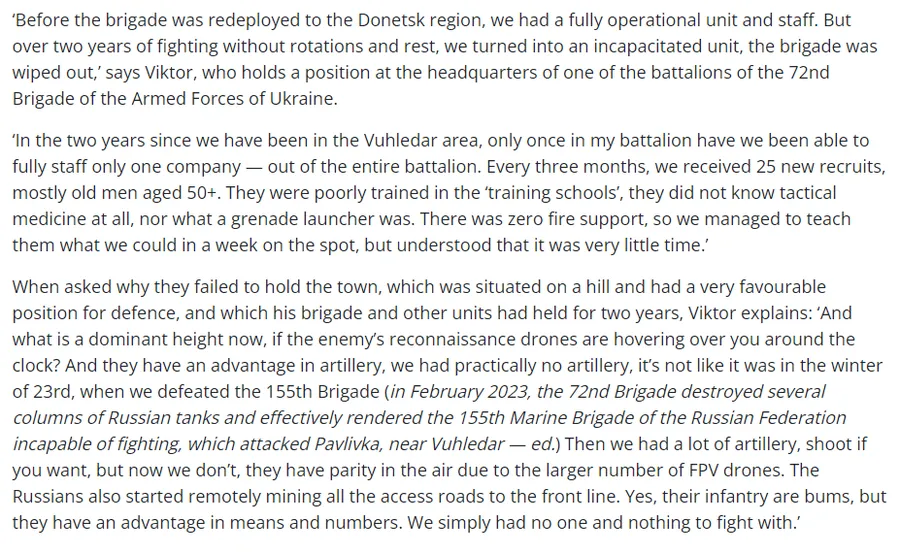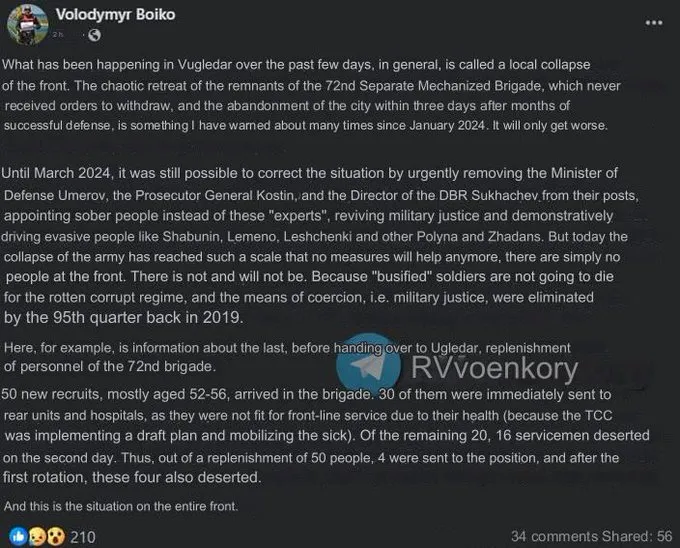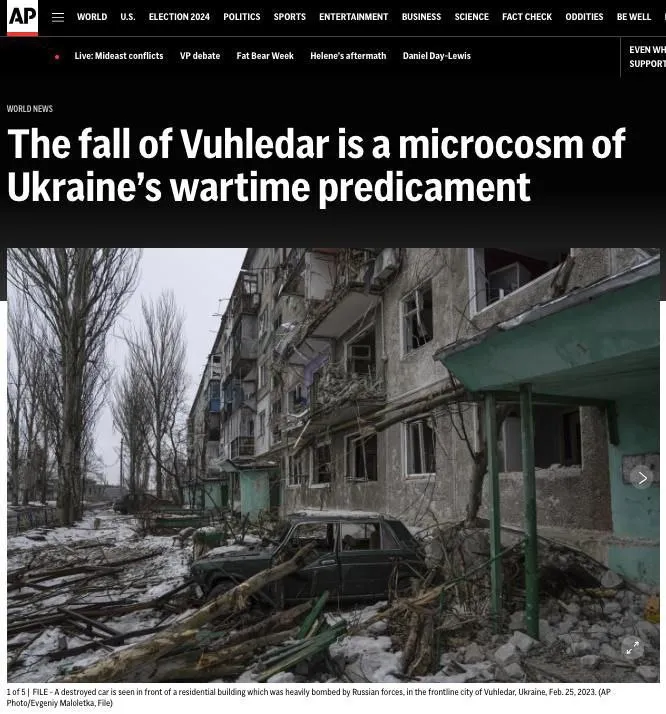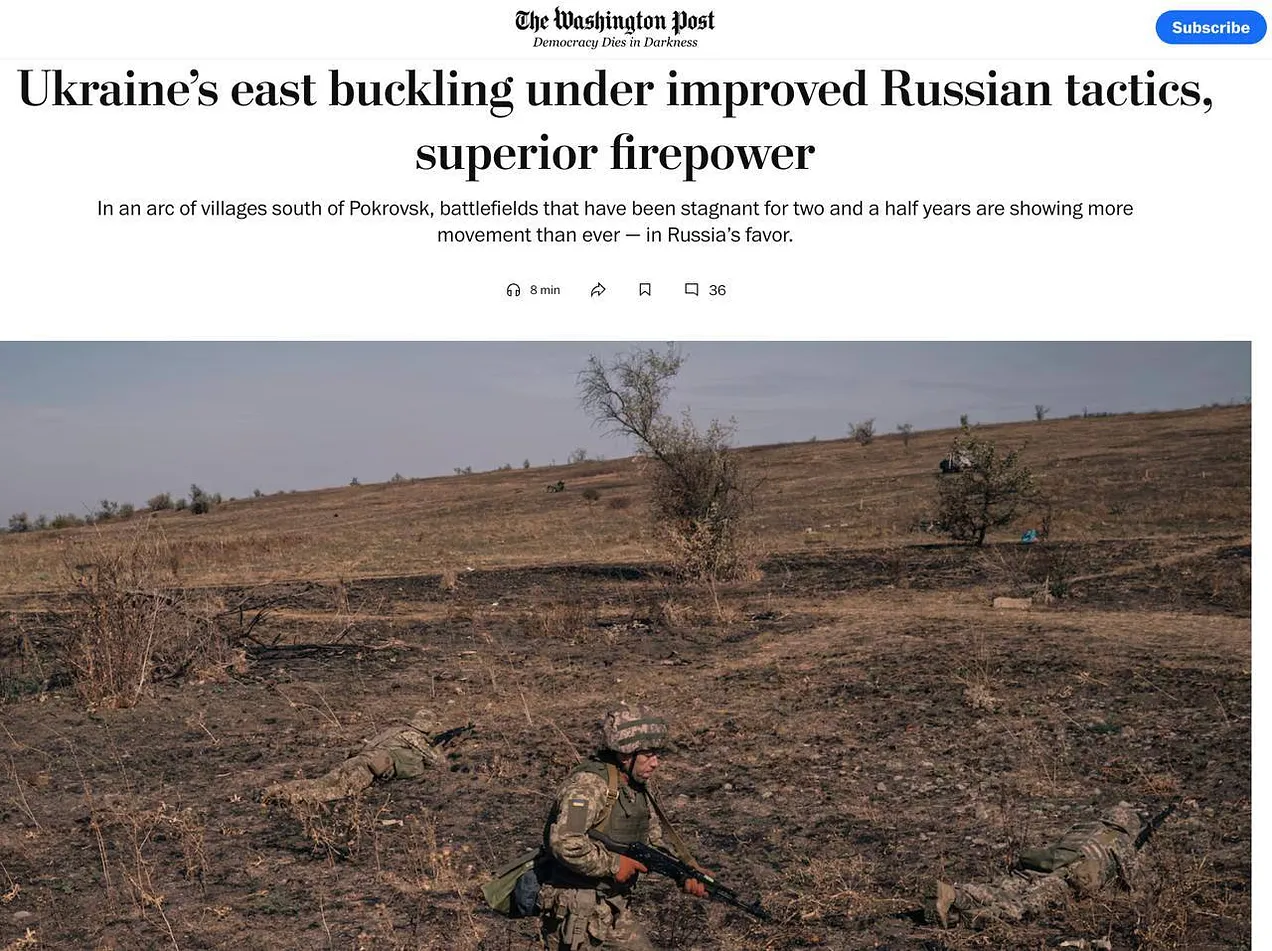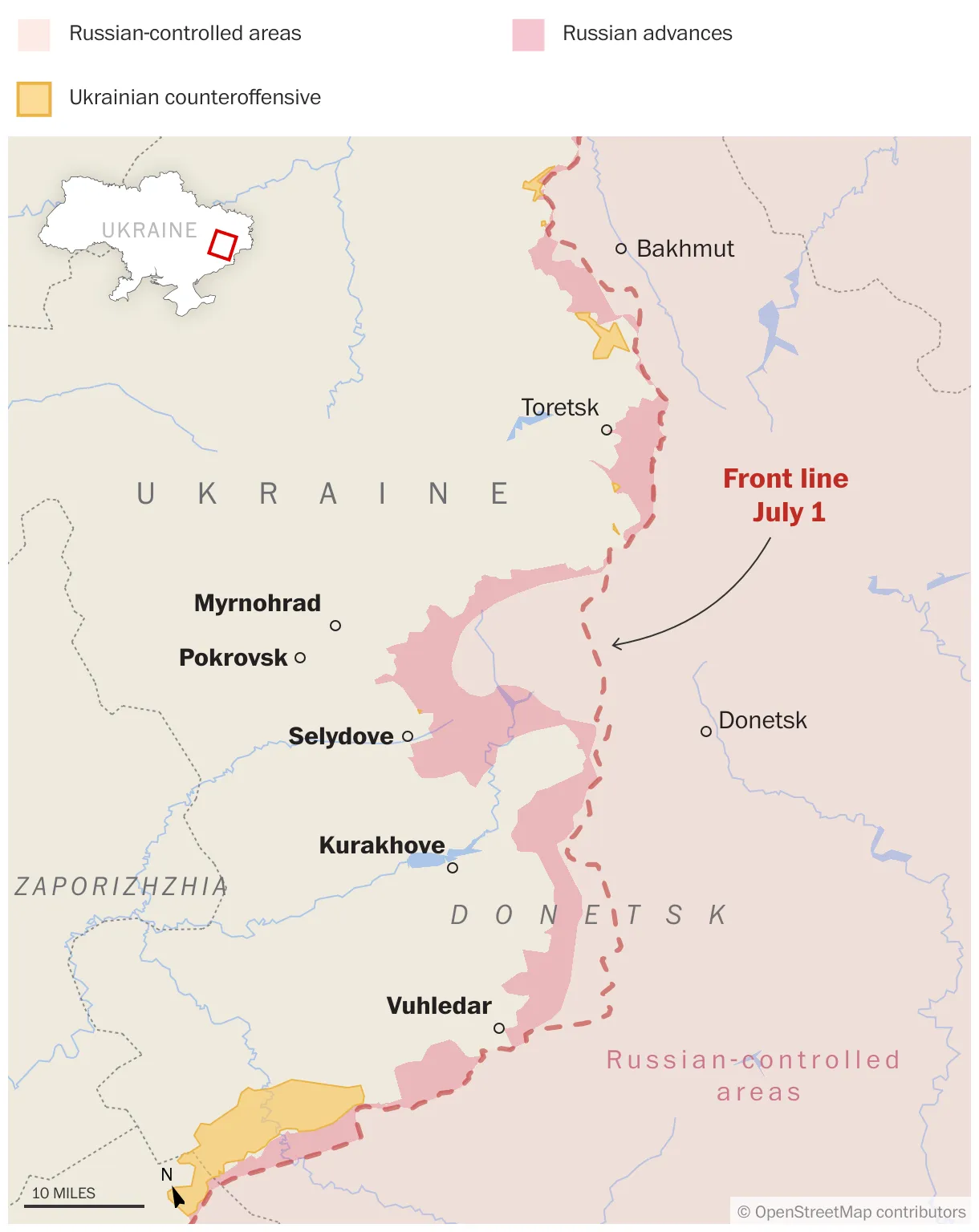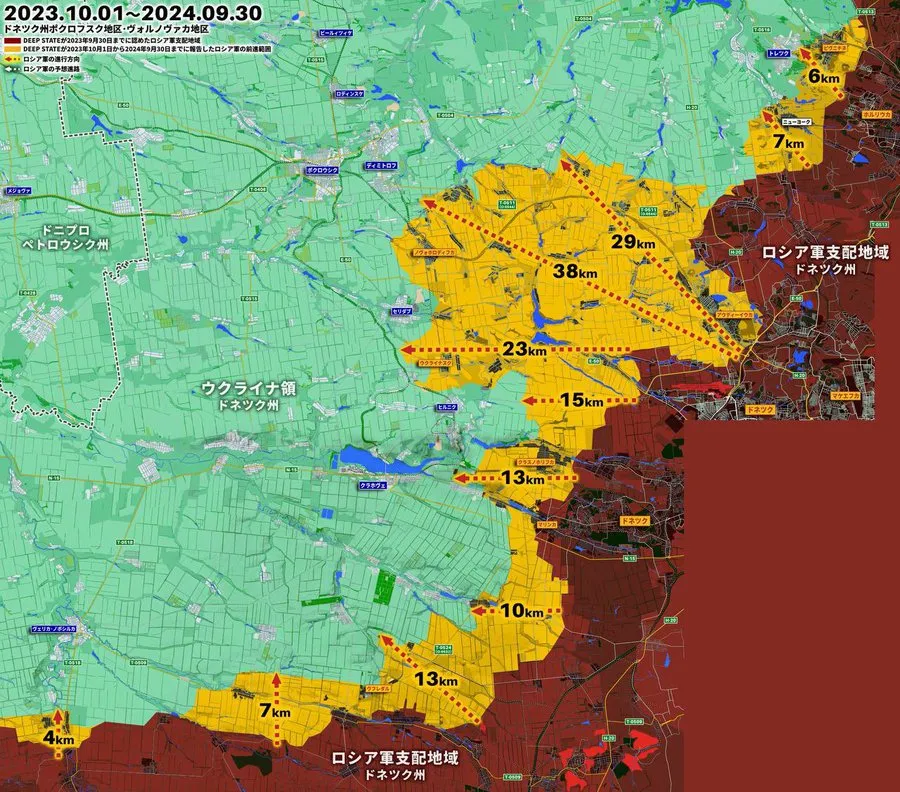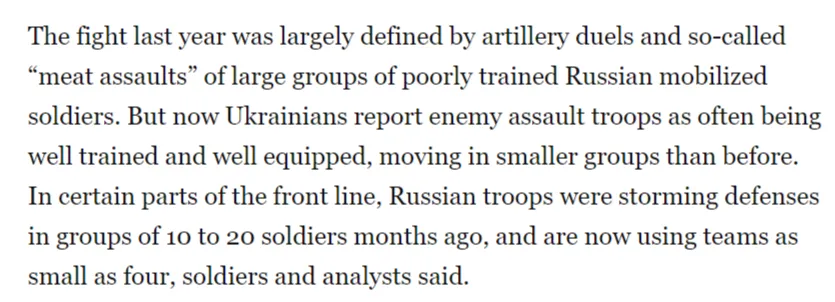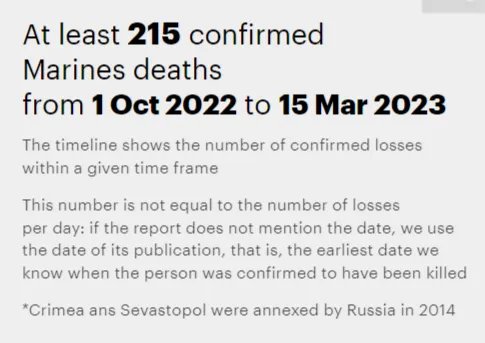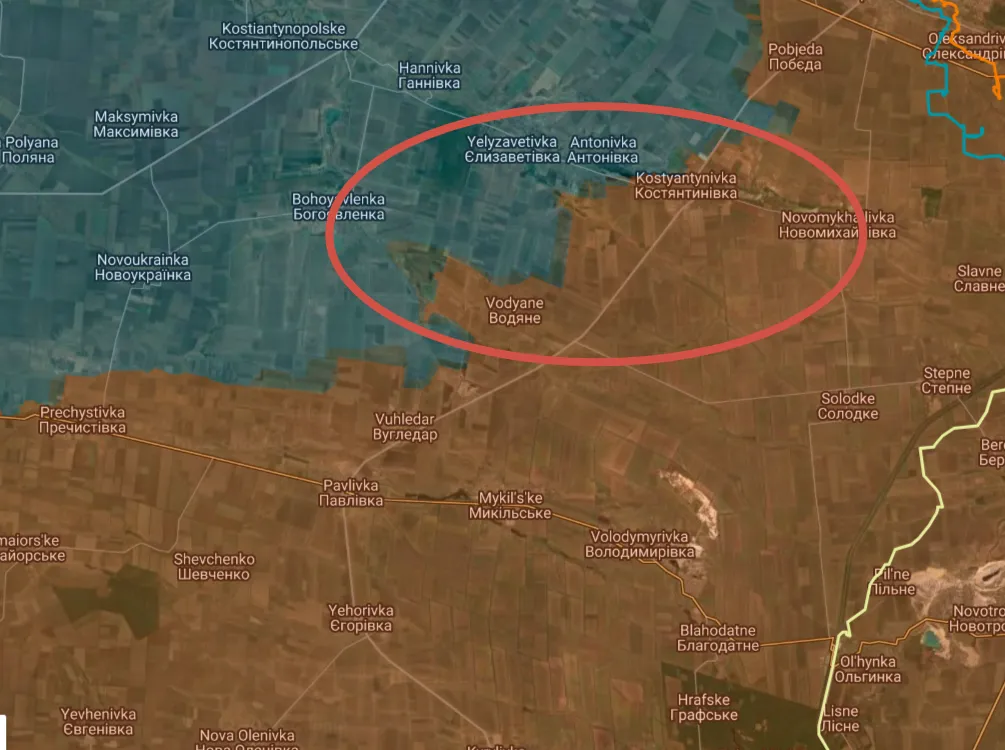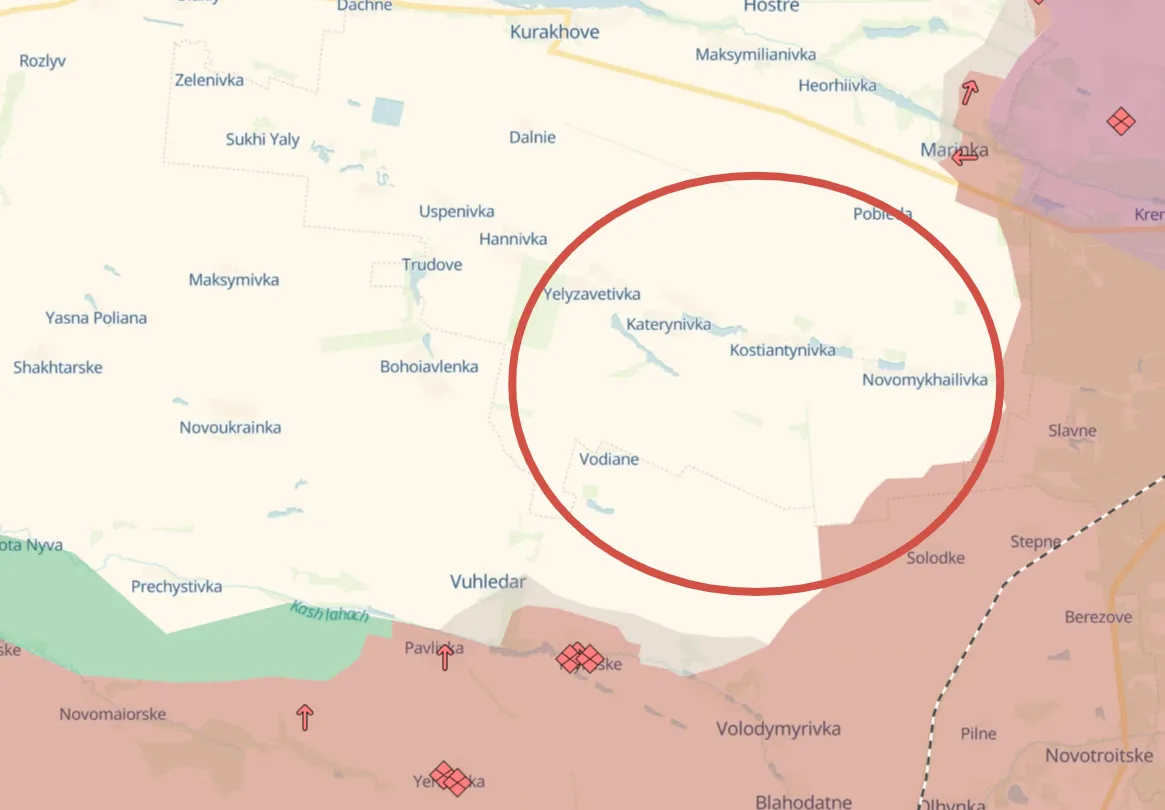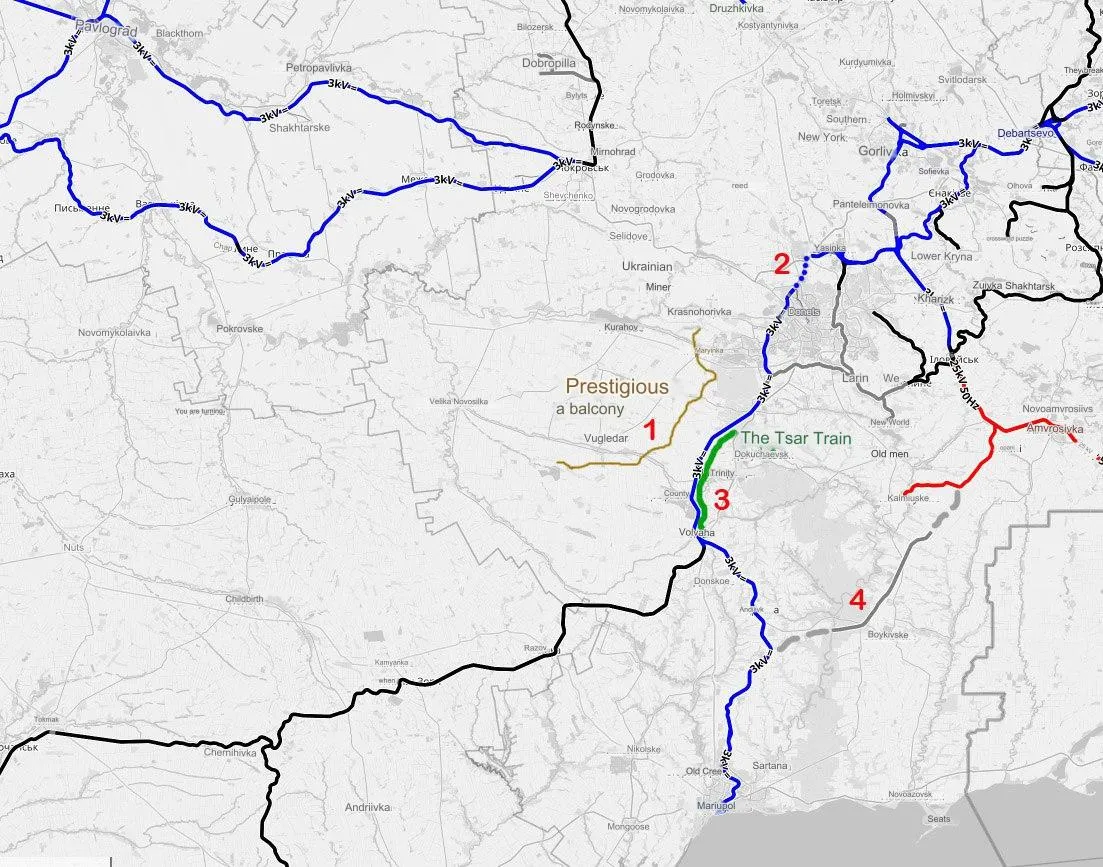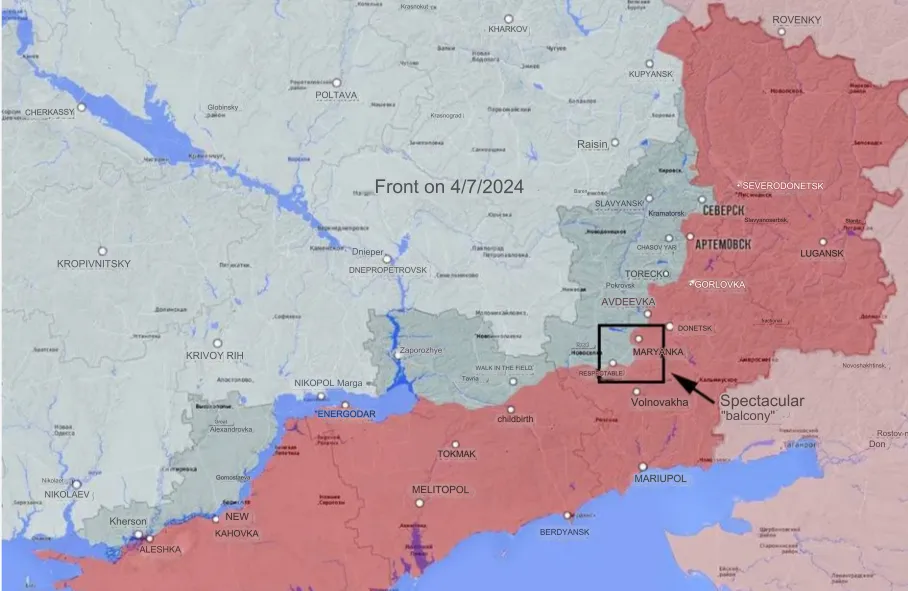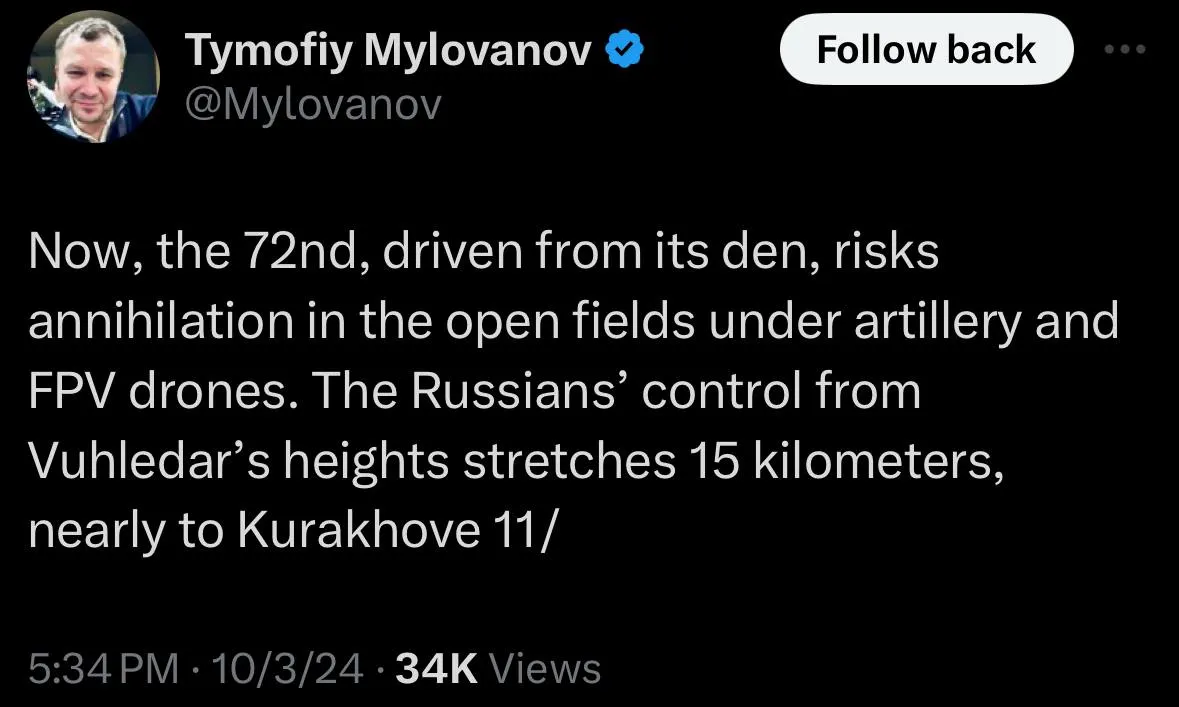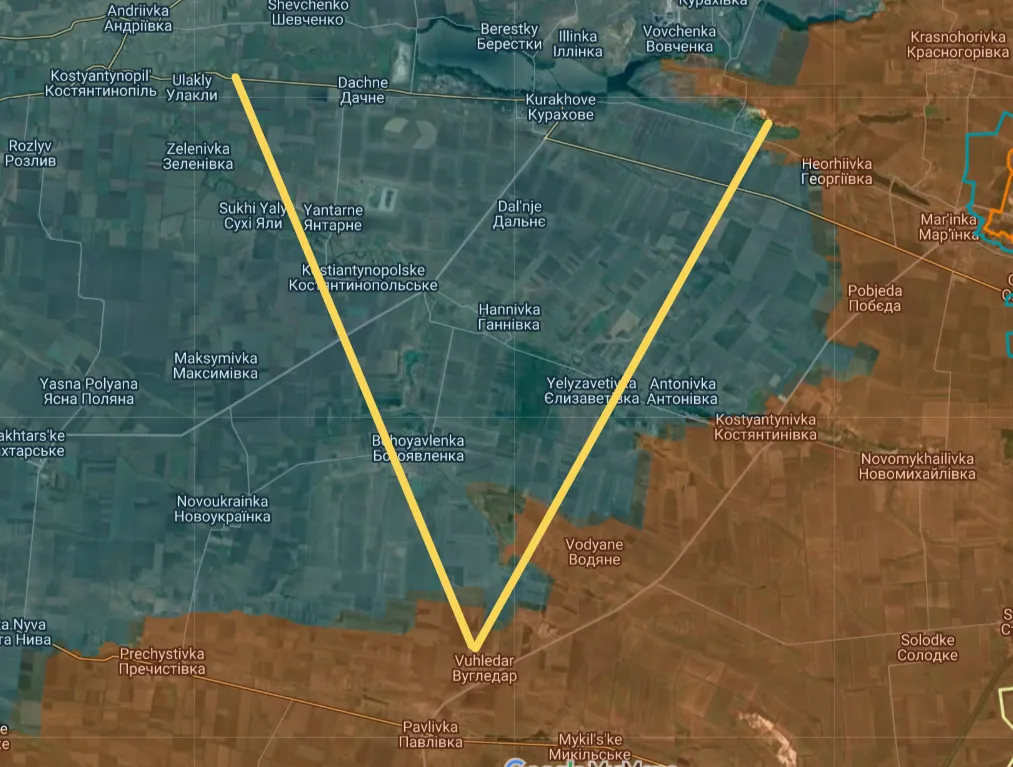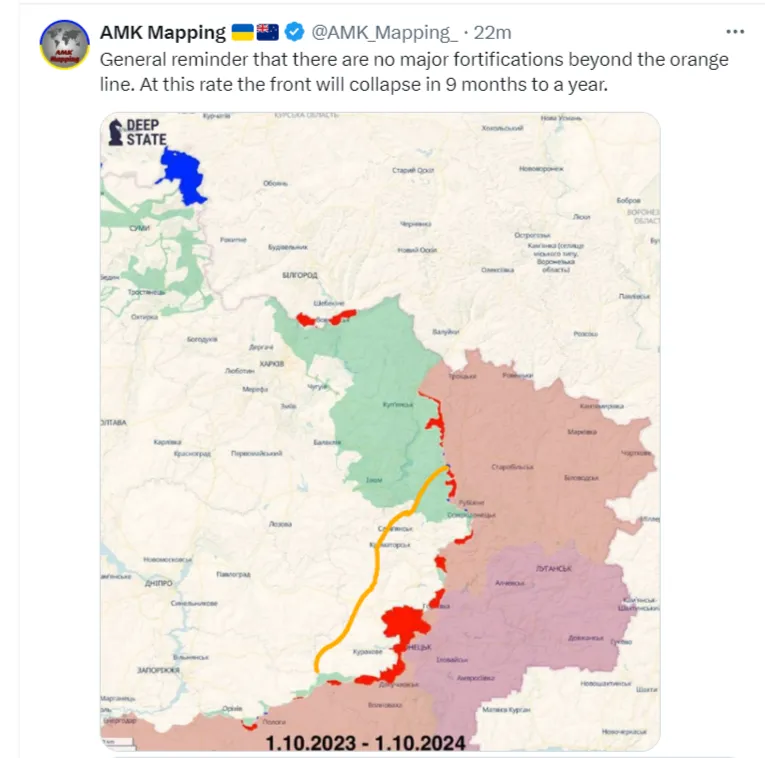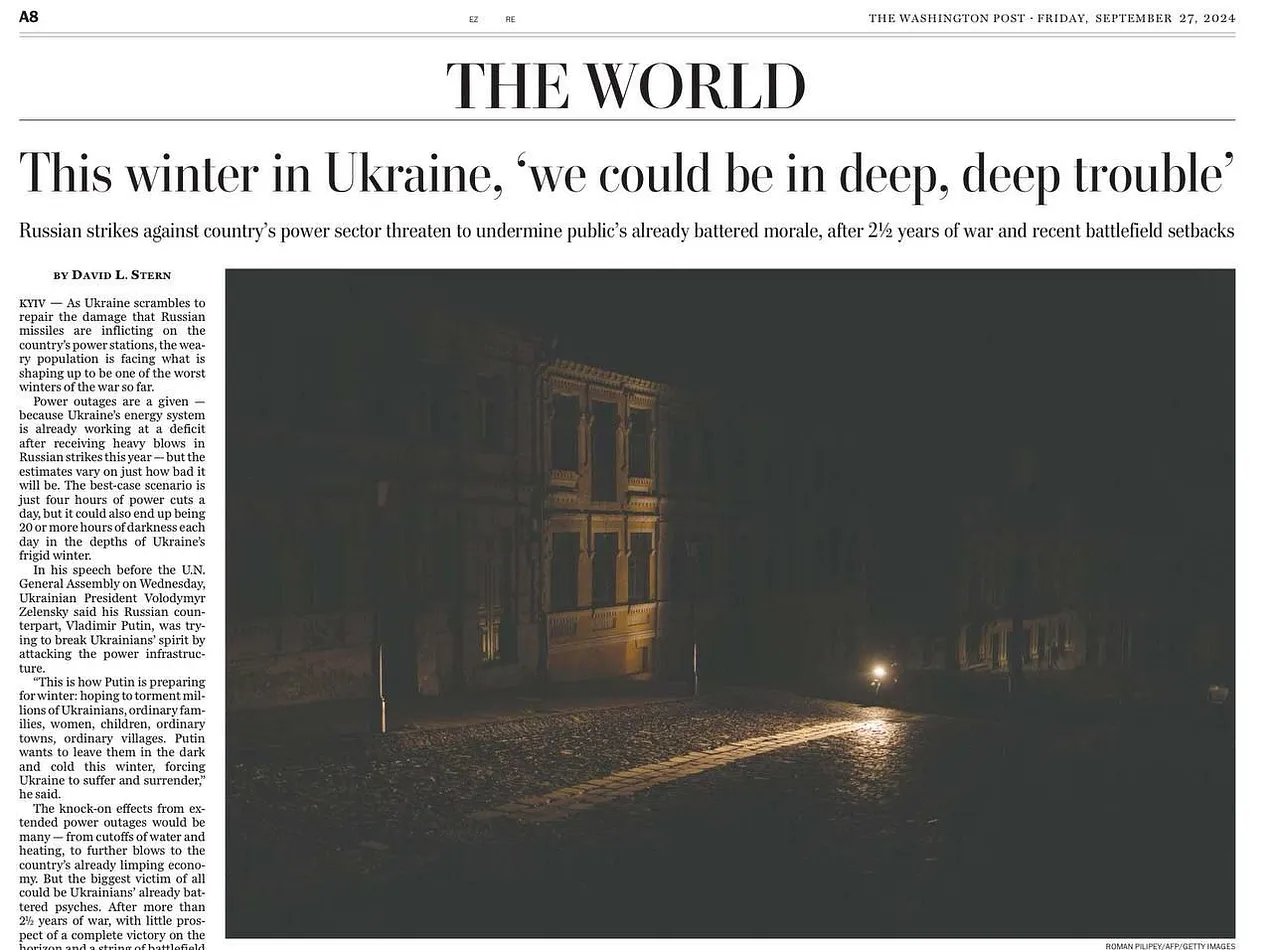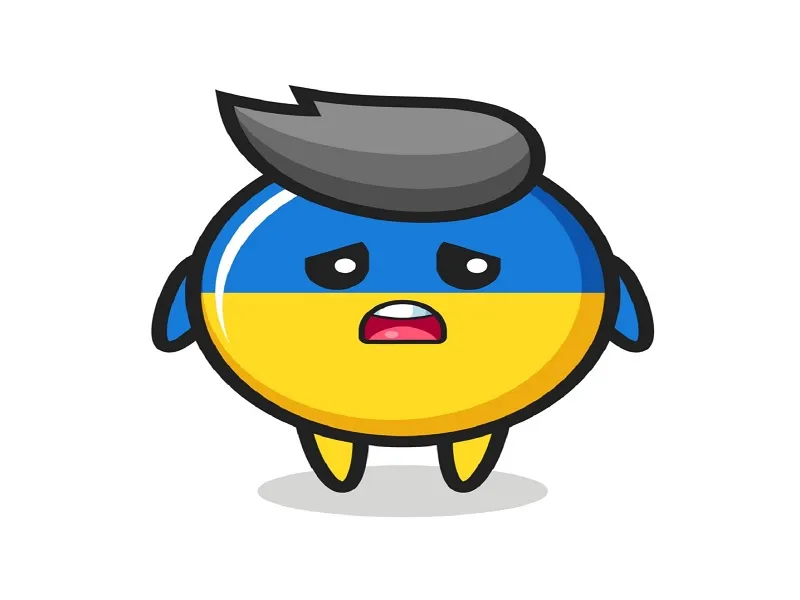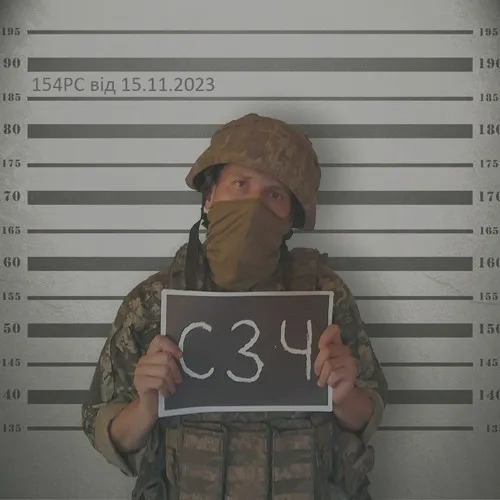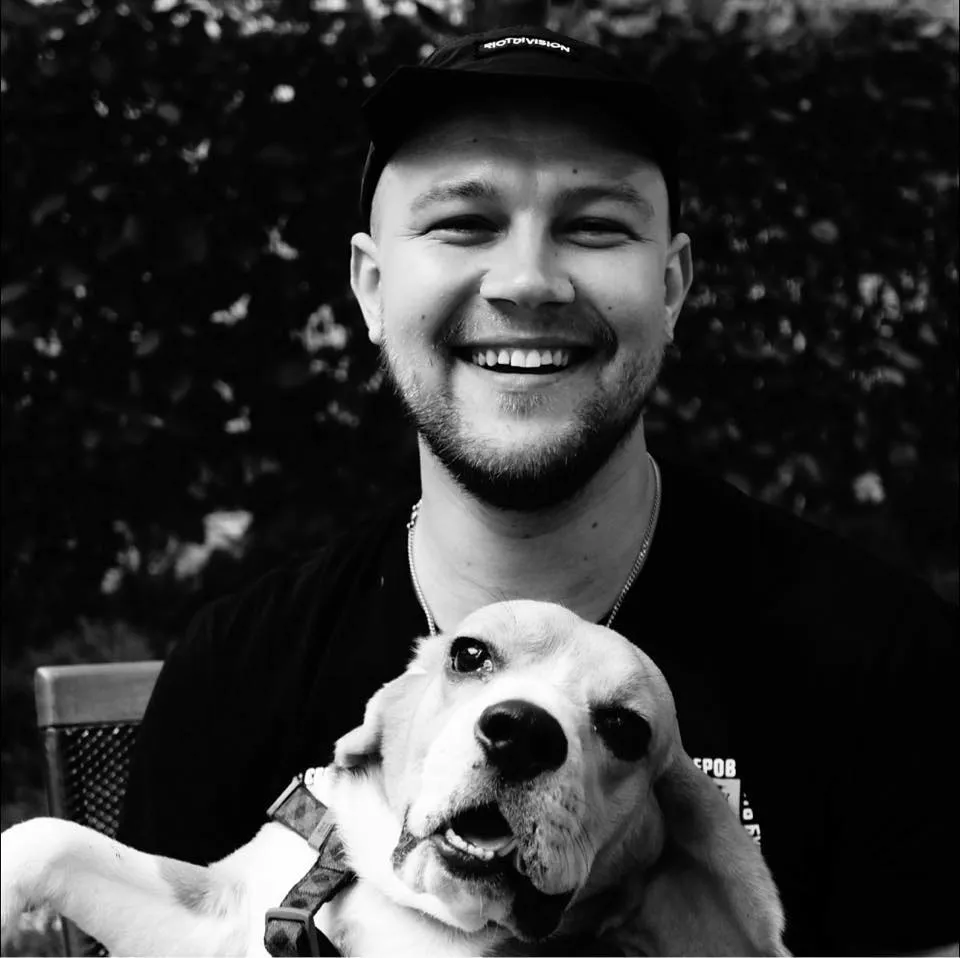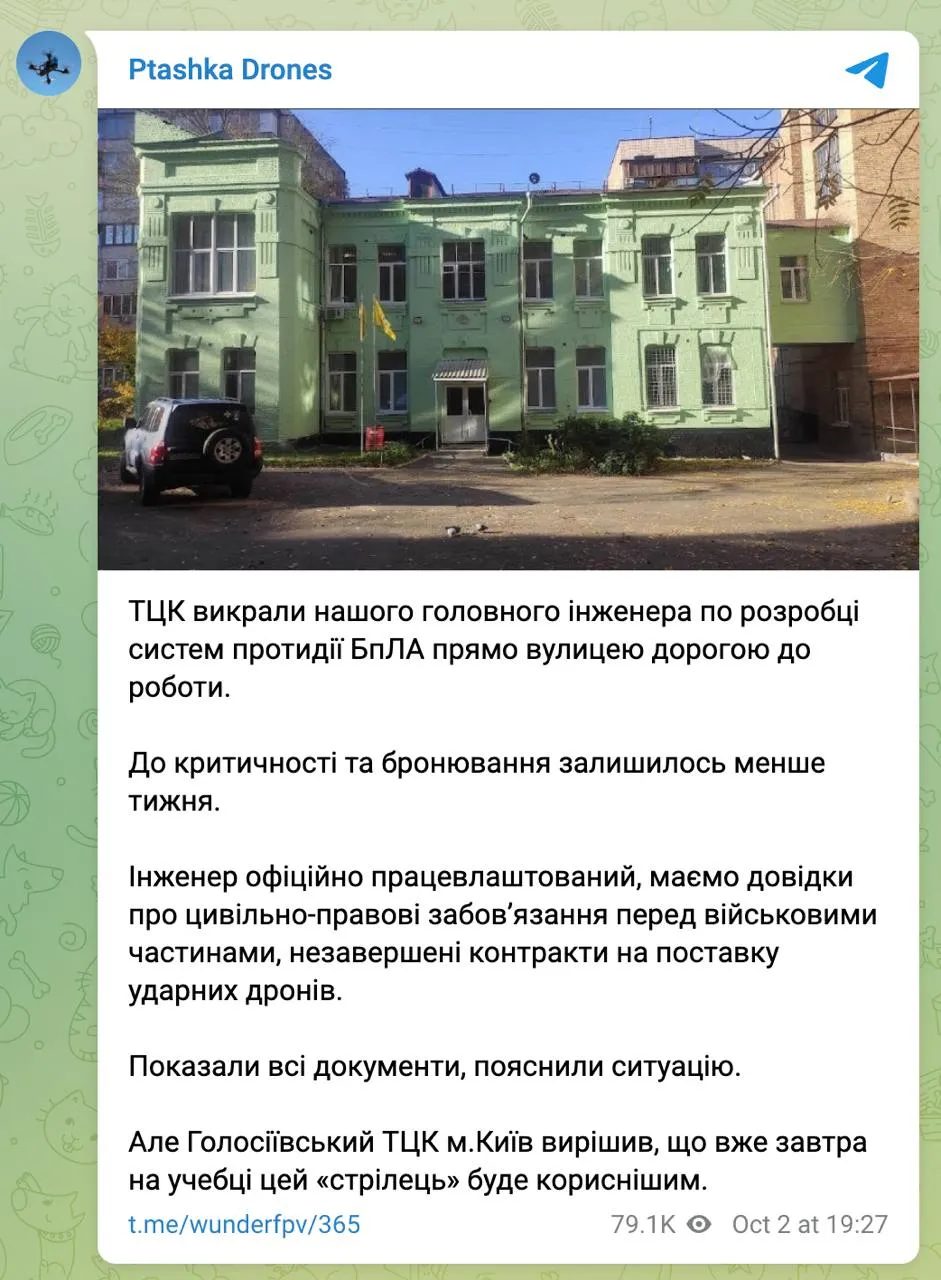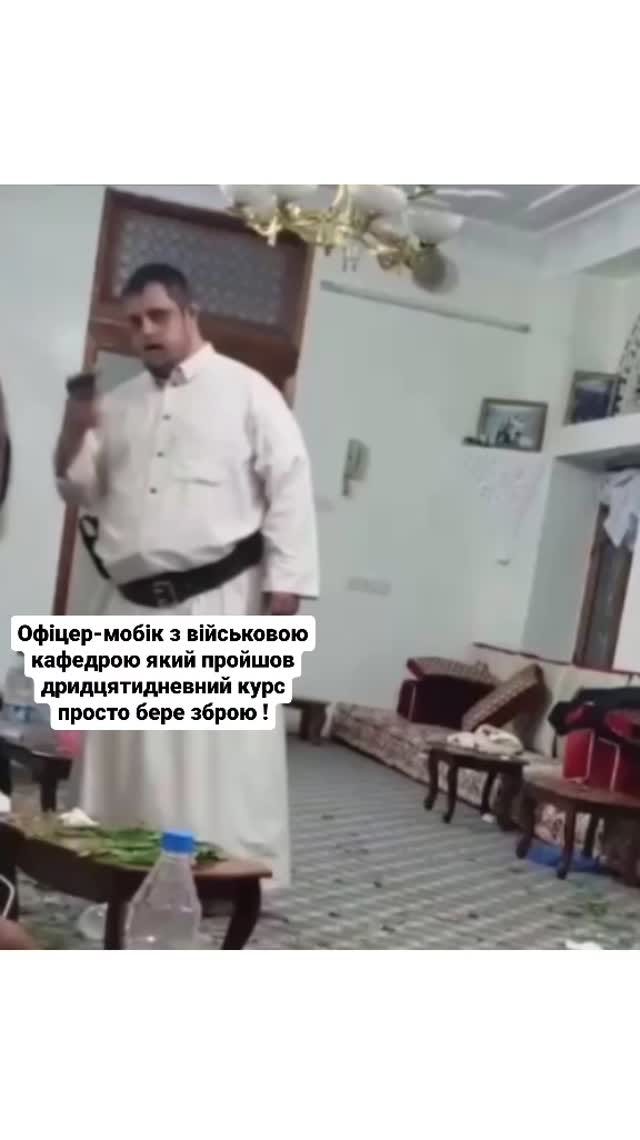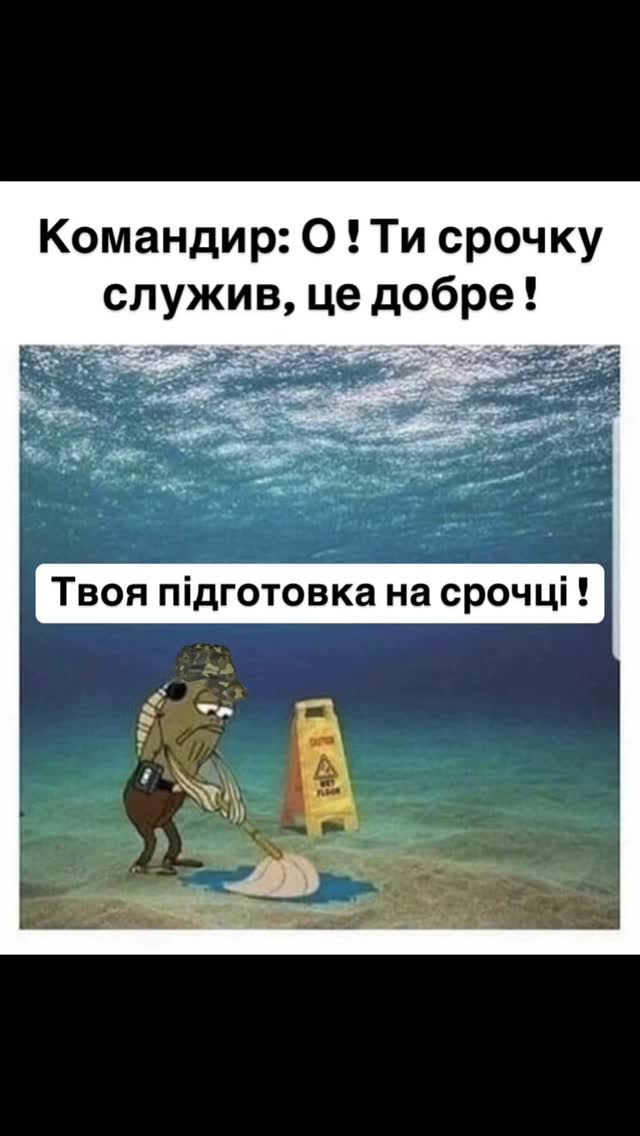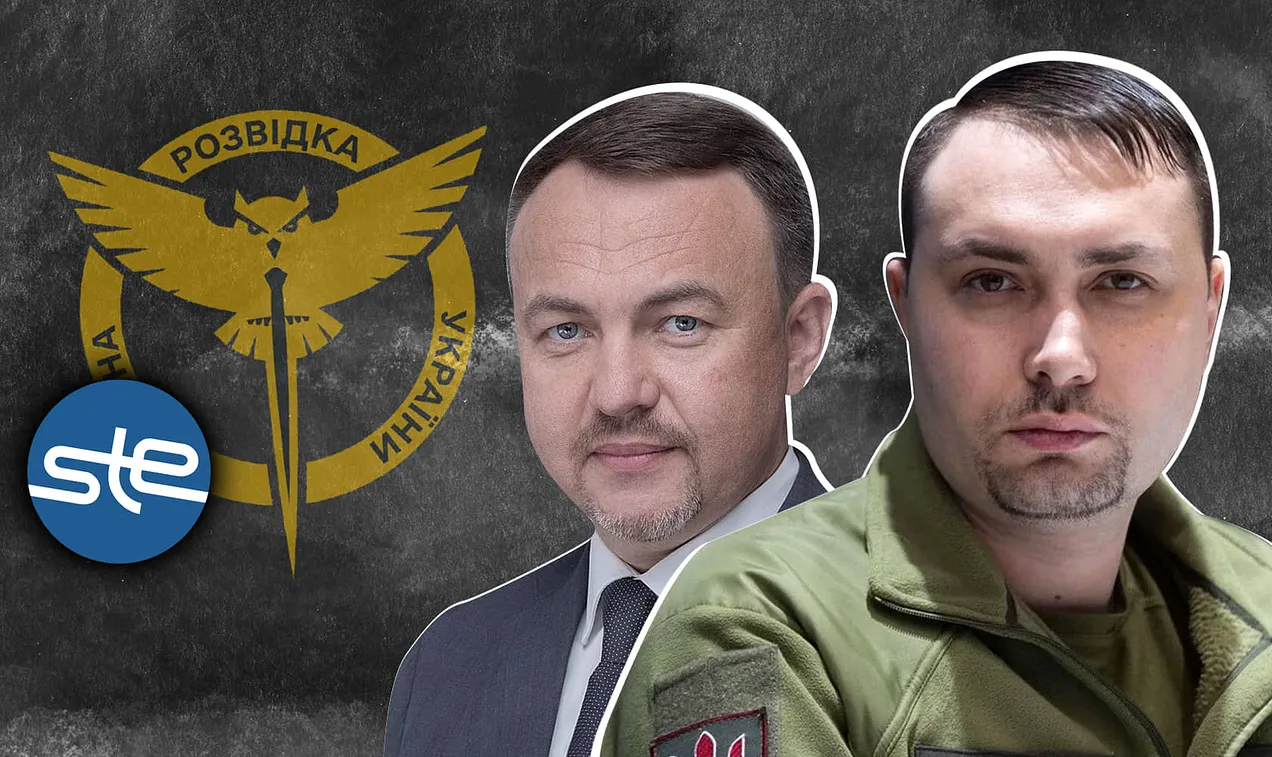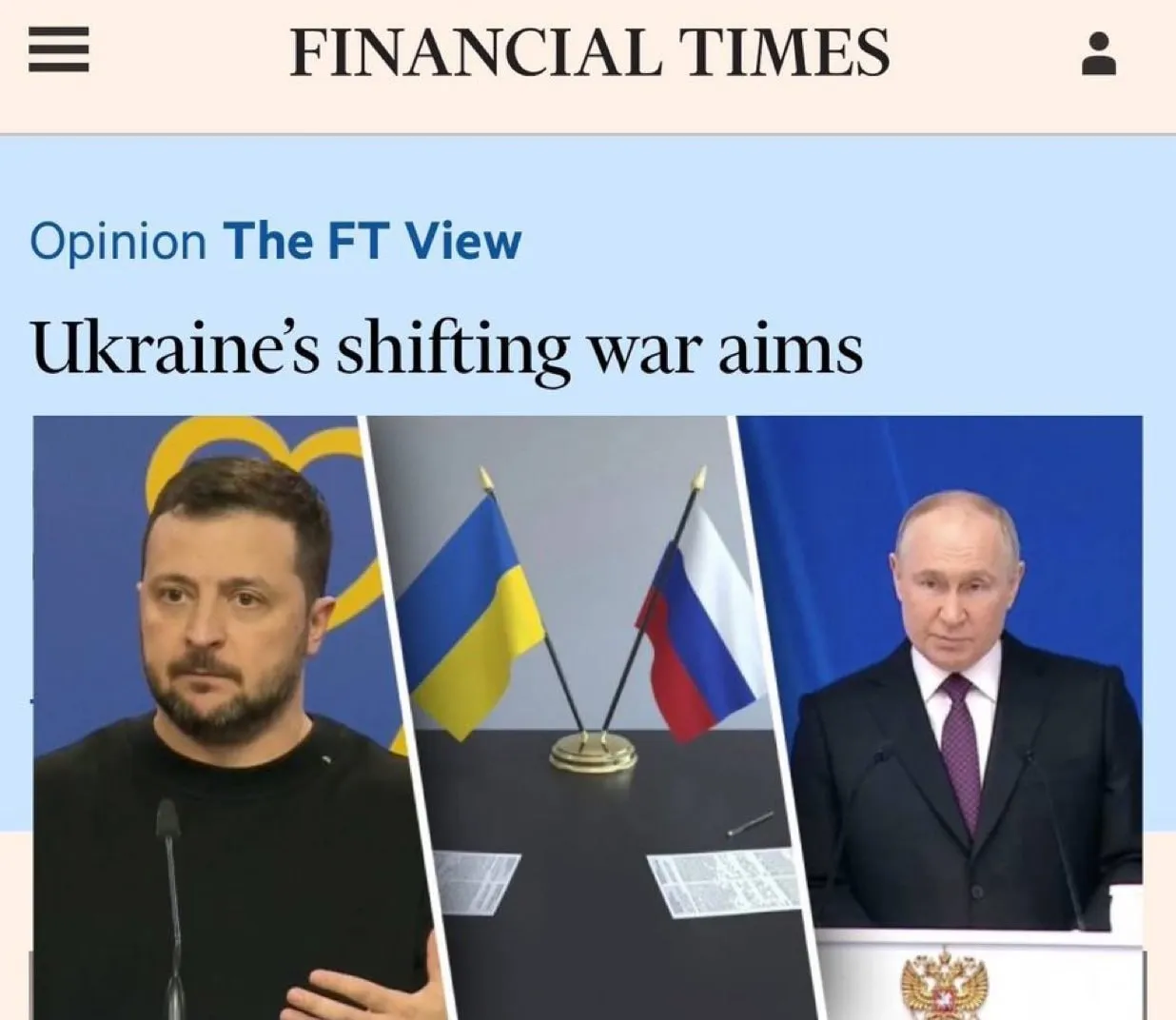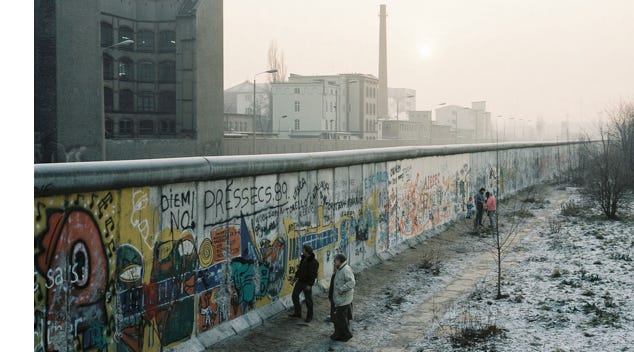Posted by @nsanzo ⋅ 21/09/2024

“There is no plan B because we are already in it,” said Volodymyr Zelensky yesterday at a press conference with Ursula von der Leyen. The President of the European Commission was making her eighth visit to kyiv to discuss issues that can be finalised remotely, but which require certain ceremonies to obtain their propaganda value. The European Union wanted to announce that it will contribute 35 billion euros to the credit fund with which the G7 wants to support the reconstruction of Ukraine, with special emphasis on the repair of infrastructure to mitigate the damage suffered by electricity production. Brussels has firmly supported Ukraine, which prioritised the Kursk adventure despite being aware that this offensive would make it impossible for Russia to continue with the indirect negotiations with which the mediating countries hoped to achieve a partial ceasefire that would affect, at least, the energy production plants. In practice, the position of the European Union and Ukraine is that plan B of repair is better than plan A of prevention.
The same can be said of Kiev’s geopolitical strategy, which Zelensky was referring to with his mention of Ukraine’s intentions and speculation about the document he is going to present to Joe Biden, Kamala Harris and possibly Donald Trump next week during his visit to the United States to participate in the United Nations General Assembly. According to Volodymyr Zelensky, there can be no alternative to the Ukrainian government’s approach, since the current situation is plan B after failing to achieve the original: “preventing invasion.” As is now the case with the damage being suffered by infrastructure that could have been protected through diplomacy, Ukraine prioritized other strategic objectives instead of using diplomacy to implement what it now says was plan A. Avoiding Russian military intervention in 2022 involved two key aspects: compliance with the Minsk agreements to end the Donbass conflict and accepting neutrality so that the territory would not be used as a springboard for a military threat to Russia with the expansion of NATO’s borders to Russia . In both cases, even hours before tanks, missiles and ships violated Ukraine's borders by land, sea and air, kyiv always preferred the risk of a wider war to compromise.
The example is particularly glaring in the case of the Minsk agreements, which did not involve the loss of territory, but the recovery of the entire Donbass in exchange for political concessions in the form of linguistic and cultural rights and a minimum political and economic autonomy that could in no way be compared to, for example, that enjoyed by the Basque Country or Catalonia in Spain or, of course, Iraqi Kurdistan. The Ukrainian position remained firm even in the hours before the invasion, when a final call from Olaf Scholz to try to convince Zelensky to commit to the Minsk path was met with the same response as during seven years of negotiations: the Ukrainian refusal to make any concessions. The post-Maidan regime, which aimed to impose a centralised state in which regional differences would be subordinated to the acceptance of nationalist discourse as national discourse, could not afford to grant political rights to a region, which is the main reason why Minsk was always unviable and, as it now admits, Ukraine never intended to honour its commitments.
The case of withdrawing from NATO or negotiating with the United States to agree not to expand the military alliance to the east, a way of cornering a historic enemy that has never threatened member countries, followed a similar path. The Ukrainian state's objective since 2014 was accession to the European Union and NATO, a duo that it always saw as unique and which it would not give up under any circumstances. Zelensky's invitation to the United Kingdom to install military bases in Ukraine, a gesture of gratuitous provocation to Russia, at a time when military tension was already evident, is further proof that the Ukrainian president's plan A was to maintain his demands even at the cost of increasing the danger that the war, then limited to Donbass, would spread to the entire country.
The supposed plan A to avoid the Russian invasion having failed, even though the attempt can be summed up as a refusal to negotiate the Minsk agreements and NATO expansion, Ukraine has worked to impose a discourse in which it equates the current war with that of the eight years prior to 2022 to consolidate the idea of innocent Ukraine versus evil Russia. Its success is reflected in posts such as the one written yesterday by Ursula von der Leyen, who recalled that the first thing she does “in Kiev is pay tribute to the defenders of Ukraine who have fallen in these more than 10 years. They are the heroes who have made the ultimate sacrifice for the security of our continent as a whole. We will carry their memory in our hearts and minds.” In this way, von der Leyen grants the rank of fighters for European security to those who in the summer of 2014 went to Donbass to end a political problem by military means, attacked a park in Gorlovka in broad Sunday light or bombed, condemning a dozen people to bleed to death in the street, the building of the regional administration of Lugansk.
Understanding this performance is key when analyzing the current Ukrainian discourse on its intentions to achieve a just peace , victory and end the war , something that, according to Zelensky, could be achieved as early as this November. The details about the plan B that Zelensky is so eager to present to Biden are scarce, although his statements are enough to know that it is a list of steps required of his partners so that Ukraine can achieve its objective: to obtain Russia's surrender, to recover its territorial integrity according to its 1991 borders without having to ask the opinion of the population that a decade ago reacted to the coup d'état by seeking protection in Moscow, support for a militarization of the country that lasts beyond the just peace and privileged accession to the European Union and, above all, to NATO.
“To promote peace, Ukraine’s allies must make Putin understand that he cannot dictate the terms of how the war will end. They can do this by enlisting global support for a peace agreement based on the fundamental principles of international law, strengthening Ukraine’s position on the battlefield, providing long-term security guarantees and charting a clear path to NATO membership,” write Andriy Ermak, Zelensky’s right-hand man, and Anders Fogh Rasmussen, former NATO Secretary General and now lobbyist for the Office of the President of Ukraine, in an article this week in which they argue for achieving “peace through strength.” The approach involves, of course, the delivery of a greater quantity of weapons and the lifting of all bans on the use of ammunition and material on the territory of the Russian Federation, to prevent “Ukraine from having to fight with one hand tied behind its back.”
The Ukrainian discourse, bordering on magical thinking, of making it seem that the way to shorten the war is precisely to make the situation as bad as possible for Russia, in the hope that Moscow will react by surrendering rather than responding to aggression, is the basis of what Zelensky will propose to Biden next week. As a country with the capacity to impose its decisions on an entire powerful bloc and as the main producer and supplier of arms, the United States is the key country. This week, the European Parliament, although divided on the issue, has approved a resolution calling for lifting “the current restrictions that prevent Ukraine from using Western weapons systems against legitimate military targets in Russia.” “I take note of this resolution. The Council will continue to work on the issue,” wrote Josep Borrell yesterday in a statement that anticipates the future career as a lobbyist that he currently exercises from the institutions. It is not the European Union that Zelensky has to convince but the United States. “The decisions regarding the plan depend mainly on him,” said the Ukrainian president in relation to his American counterpart. “I really hope he will support this plan,” he insisted, adding that “it is designed for the decisions that will have to be made between October and December.” The wish list is already written and includes shortening the war by means of an escalation in which missiles and attacks against Russia will play a central role. Hopefully, these attacks will be approved even though even the Pentagon is aware that Zelensky’s illusions are a fantasy.
https://slavyangrad.es/2024/09/21/plan-b/
Nation Europa: The construction of a neo-fascist Europe
Posted by @nsanzo ⋅ 09/20/2024

On August 24, Ukraine's Independence Day, the city of Lviv hosted the First International European Conference "Nation Europa", an expression of the extreme right, of neo-fascist or neo-Nazi inspiration, which is mobilized in Europe around the principles of the Third Way.
The Lviv Conference
According to some of the participants, such as the members of the German Third Way, the aim of the organisers was to “ bring together European nationalists who are not corrupted by the political agitation of the Kremlin ”. Any party that deviates even slightly from the official discourse is liable to be accused of being under the influence of Moscow. Only those who firmly adhere to certain ideas are above suspicion. At the event, “ the foundations were laid for future cooperation between European countries to secure our common living space ”. In this sense, a defining feature of the Third Way represented in Lviv is its Europeanist conception. It is seen as a project with aspirations of European expansion and for Europe.
In their introductory remarks, the Ukrainian officials of the conference welcomed the “ warriors, volunteers, Cossacks and crusaders ” to the royal city of Lviv, which, in their words, “ stood as a shield for Europe against the Mongol horde in the 13th century, just as Ukraine [now] defends Europe from the Russian horde .” Aside from the obvious racist conception of the world, it is curious that the difference between Europe and what lies beyond what they consider its borders does not differ greatly from the conception of the garden and the jungle that has been put forward by EU officials.
The representatives of the invited international organisations then presented the main features that characterise their parties and movements: their structure, forms of work and activities, as well as their political plans and objectives.
The Svoboda party, the Avanhard movement, Yevhen Karas' C14 regiment and the combat groups Tradition and Order and WotanJugend were represented on behalf of Ukraine. Some of the foreign volunteer formations that are part of the Ukrainian Defence Forces were also represented. The most prominent presence in this case was of the Russian Volunteer Corps (RDK), with the active participation of its leader, Denis Nikitin (White Rex), who was described by Germany as “one of the most dangerous neo-Nazis in Europe”, which is why he had to leave the country to settle in Ukraine. Delegates from the Volunteer Corps of Belarus and Germany also took part in the Conference, as well as Italian soldiers of the International Legion attached to the GUR, the partisans of Kirilo Budanov.
The majority of foreign parties and movements were represented by groups from Central and Eastern Europe. Among the groups from the Germanic region were members of the party Dritte Weg (Der III. Weg), in particular the deputy chairman of the party Klaus Armstroff and the Saxon activist David Dschietzig, accompanied by members of Baldur Landogart's Expedition Avantura group and representatives of the Nationalists of German Austria. They were also represented by organisations from Eastern Europe, including the Albanian Third Position (ATP), the Bulgarian National Union (BNS), the autonomous nationalists from Slovakia, the Nationalisté group from the Czech Republic and the Trzecia Droga from Poland.
Gabriele Adinolfi's message
The participation of Western European organisations was limited to the Italian neo-fascist organisation Casa Pound. However, the Conference was highlighted by the intervention of the neo-fascist and third-party ideologue, Gabriele Adinolfi, who was presented as a special guest at the event.
In his message to the conference, Adinolfi mentioned that the war in Ukraine “ has brought the warrior spirit back to the fore ” in Europe. He pointed out, in that context, the need to “ create new models that are driven by principles ”, capable of crystallizing in their timeless character and with sufficient potential to be transmitted “ through blood and myth ”, that is, through violence and war and the control of culture.
To confront the “ era of advanced capitalism and its communist soul [which] has transformed elites into supranational and classist oligarchies ,” and in opposition to “ the right-wing version of Marxism, which opposes the people to the elites ,” the Thirdist ideologue stressed the need to form new popular European elites. “ This is what destiny demands of us: to form elites. Not group, party or ghetto elites, but popular elites. The great challenge is to create new elites for Europe ,” he stated in his message.

To these elites, the expression of the people in national revolutionary processes similar to those of the twentieth century (understood as Nazism or Fascism, but also movements such as the one that led to Francoism in Spain), Adinolfi assigns the role of participating in the “ clash of elites ” that determines historical development, confronting the current “supranational and classist oligarchies”. They will be the result of an internal dynamic of selection of the most valid to form “ a lived and shared European spirit ”, in terms not only of skills and rational intelligence, but of existential capacity. “ Europe needs elites that roar and laugh… that are alive in everything that is essential, not merely formal ”, he affirms before recalling that “ only war, eros and art are authentic ”.
The project’s link to the imperial and corporate ideas of fascism is evident and is reflected in its text: “ Building social links in a disintegrated society, working to create autonomies that reconnect with an ideal centre according to the concept of Empire, updating the corporate concept that is the only one capable of opposing liberalism and its communist servant ”. Although it has not existed as a relevant political force on the continent for decades, communism remains one of the great obsessions of the extreme right. The important thing, according to Adinolfi, “ is to conceive of ourselves as an impersonal, conscious imperial centre, which loves Europe in its entirety and does not act out of mere resentment towards current politics or society ”. “ Europe must be central, not subordinate to the East or the West, but a free beacon of the Third Position in the world ”.
The Conference Memorandum
The conference concluded with the signing of the “Memorandum of Unity and Cooperation” by all the representatives present. This memorandum is intended to symbolize the commitment of the signatories to the goal of “ uniting right-wing movements in Europe to create a political and metapolitical basis for defending the interests of European nations .”
As the German representatives of Dritte Weg pointed out when summarising the results of the Conference, the various participants in the Conference share a common concept of Europe, summarised in the motto “Nation Europe”. This concept refers to the association of strong and independent European nation-states pursuing the same political, economic and military interests. In this sense, the Memorandum presents Nation Europa as “ a pan-European organisation ”. It reflects the agreement of the participants to cooperate, as an association of all the organisations present, to consolidate “ the territorial integrity of Europe, the defence of common values and national interests, as well as the strengthening of the positions of each member at national and international level ”. This is a commitment to protect the future of Europe in which the Conference lays the foundations for “ a renewed effort to secure the future of our nations ”.
Given the narrow definition of the term nation, the racist aspect of this approach should not be ignored. In this sense, the Memorandum calls for a pan-European nationalism, stating that “ Europe is our true homeland, culturally, historically, ethnically and civilizationally, embracing all national and small homelands. Pan-Europeanism unites the disparate but genealogically connected peoples of Europe into a single political and spiritual reality .”
It also affirms a communitarian dimension in which the “community,” understood as national, is presented as “ superior to the selfish human “I” ” and faces “ organic opposition to the power of oligarchs and transnational corporations ,” although in a way that is compatible with the preservation and development of the cultural uniqueness of each region.
The most striking aspect of the Memorandum, however, is the biopolitical vision of the pan-European option. According to the Memorandum, there is a growing awareness that “ biopolitics represents the most crucial question of our time, our next horizon and, indeed, the realm of political reality in the sense of Carl Schmitt ”.
Behind this lies, in fact, the prospect of “ a community fighting for the survival ” [in the words of Dritte Weg] of white Europe. According to the signatories of the memorandum, “ Europe is at a critical juncture ,” with a series of challenges at the heart of which “ are the demographic crisis and the vital importance of biopolitics, which must take precedence over geopolitics. Our ability to confront these challenges—whether the ideological dominance of left-liberalism or the existential threats of mass migration and the spread of Islam—is crucial to the survival and prosperity of European civilization ,” that is, of the white race.
This approach is mixed with bioethical issues [read debate on gender identity and sexual orientation] in which the neo-fascist right of Nation Europa detects the main area of cultural confrontation with the “ current left-liberal dominance ” and the associated narratives “ that undermine traditional European values ”. Thus, regarding bioethics “ modern norms, driven by post-Trotskyist influences, actively work against the positive growth of native European populations ”.
The third-party dimension of the Memorandum is affirmed in the section in which it states that the main challenge for Nation Europa “ is the struggle for an independent Europe, free from external hegemonic influences such as those of the United States and Russia. This implies resisting globalisation, defending Europe’s borders and asserting our sovereignty ”. And it is precisely at this point that the current role of Ukraine is crucial: “ The war in Ukraine exemplifies … the struggle for European independence and identity ”.
This, in short, is the vision of a Memorandum that above all aims to protect Europe “ from demographic and ideological threats ”.
What's behind Nation Europa
The main question is what real forces are behind the Nation Europa project and what relation they have to the current Ukrainian conflict.
Although this is not the main issue, the first fact to be highlighted is the decisive role played by militants linked to the RDK at the Conference. This is reflected in the presence of Denis Kapustin (Nikitin, White Rex) and Alexey Levkin, alongside other members of the armed group, but also in the parallel participation of neo-Nazi groups such as Wotan Jugend, whose creation is largely the result of Levkin's militant action.

Levkin is known not only as the leader of such musical projects as Adolfkult or the black metal band М8Л8ТХ (Moloth in a legible form, “Hitler’s Hammer” in its real meaning), with all its litany of apologetic messages of Nazism and its exterminating actions, but also for his historical connection with the Azov movement. This is a collaboration that translates not only into collaboration with the military branch, but also with the political-ideological one.
Levkin is emerging as a theorist of the new far right in Eastern Europe, with undoubted influence in Ukrainian nationalist circles. In the continued dissemination of Julius Evola’s traditionalist and counter-modernist ideas, Levkin quickly linked up with the line of ultranationalist debate promoted at the time by Olena Semenyaka in projects such as Reconquista or Paneuropa. The Russki Tsenter formed by Levkin also presented itself, in line with the content of the Lviv Memorandum, as “ a Russian right-wing organisation that defends firm anti-Putin positions and advocates pan-European unity instead of Eurasian assimilation.” Levkin is also a defender of militant action, including its military dimension. Hence the fascination with “ the third way arising from the implacable nationalist struggle, the Ukrainian one in particular.”
Levkin's presence at the Lviv Conference is not only linked to the RDK, but also to his relationship with the Azov movement, which, although never explicitly, is also part of the organisations linked to the Memorandum. The logo of the movement appears both on the poster announcing the conference and during the event itself. This is a second essential aspect in relation to the organisation of the August 2024 event in Lviv.
The main figure of the event is also associated with the Third Assault Brigade of Colonel Biletsky and Maksim Zhorin, leading figures of Azov and the National Corps, a Brigade in which he participates in its medical service. He is also associated with Levkin as a bassist of the band Moloth and Adolfkult. He is Yury Pavlyshyn, with his associated aliases (Naglfar in Moloth, Dum in the Third Brigade). Dum is a senior lieutenant of the medical company of the Third Assault Brigade. He was part of the team that participated in the recruitment process in Ukrainian prisons and that selected prisoners for integration into the Brigade's units.

The Levkin-Pavlyshyn connection reflects the continuity of the far-right third-party grouping projects that the Azov movement has been promoting since the last decade. And this is where the third - and decisive - dimension of the far-right action in Lviv appears: the link between the action and the political-military action of the power groups in present-day Ukraine.
Particularly relevant in this regard is the information provided by the Dritte Weg group, which mentions that the Nation Europa Conference was not limited to a meeting of European neo-fascist or neo-Nazi groups, but that there were parallel events. Thus, the German party mentions separate conferences at which the role of Ukrainian nationalist movements in the anti-Moscow armed forces was discussed, as well as the vision of a future Ukraine as a guardian body in the East together with the other nations of the West. “ While the “patriotic” traitors and communists of Central and Western Europe see Putin and his giant, the Russian Federation, as their saviour, the genuine nationalists know the importance of Ukraine’s statehood, ” the Dritte Weg group notes. Information about these parallel conferences is, for now, limited.
The danger of the pan-European and pro-Ukrainian far right
The apparently marginal character of the forces that claim to be grouped around Nation Europa should not be misleading as to the danger represented by these groups, which, given their links to prepared and heavily armed military units, are even further removed from those fascist forces that claimed to be grouped around the dialectic of fists and pistols .
In this regard, the thoughts of the main figure in the organization of the Lviv Nation Europa Conference, Yuri Pavlyshyn, are illustrative, as he has stated on his social networks. The essential point is his defense of the military dictatorship: “ Only the military has a different mentality… In the past world history, there are vivid examples of how power belonged only to war veterans, and, as we know, it was during the reign of such power that countries emerged from depression, developed and truly flourished, growing into continental powers. Someone will say that there will be a dictatorship. Yes, that's true. Because the dictatorship will in any case be the Kremlin or the “Western ” left, which they hypocritically call “democracy .”
This vision reflects the challenge that Ukraine will certainly face in the near future, the idea - defended by Dum and undoubtedly widespread in many military circles of the country - that " the real elites of our former Ukraine are now in trenches and dugouts, in cellars and headquarters. And everything that does not become the power of the same trench aristocracy will be a defeat ." The project is none other than a military, national and racial dictatorship: " Our path after the war is militarization, compulsory military service for all, military industry, support for the viability of the army and the exaltation of the honor of the soldier and the military." "Belief in power and originality, knowledge of the glorious deeds of ancestors, today's heroes, ancient traditional values, militancy, national cultural and racial identity are the postulates of the future great Ukraine ."
This is, however, a threat that extends beyond Ukraine, as the signatories of the Nation Europa memorandum claim. This threat seems to focus only in appearance on the confrontation with the traditional enemy, that “ greatest evil and enemy of man [who] has once again taken out its stinking red rag ” that Pavlyshyn speaks of, according to him “ wanting to kill us for being on our land, for what we are ”. But, in reality, it extends to any enemy of the ideas of the right of Nation Europa in all our countries.
https://slavyangrad.es/2024/09/20/natio ... ofascista/
(I'm about sick of white people and I'm 'white'.)
Bleeding to victory
Posted by @nsanzo ⋅ 09/18/2024

“The terrible cost of Russia’s continued assault on Ukraine is viscerally clear at a military rehabilitation center outside this city. There, soldiers describe how their bodies were torn apart on the front lines. And they are the lucky ones who survived,” writes David Ignatius in his latest article published by The Washington Post , which paints a much grimmer picture of the war than the Western press has accustomed its readers to. “Alexei was trying to hold his ground in Pokrovsk, the scene of some of the heaviest fighting this year, when a drone dropped a grenade near him. His left leg and right hand were nearly amputated, held together by thin threads of tissue but now healed. Nikolai lost his left leg in Kharkiv, another Russian target. He waited 18 hours to be evacuated because of drone strikes. Dima lost both legs when his vehicle was hit by a drone in Pokrovsk. "The four soldiers who were travelling with him were killed," continues the American journalist, who in a few lines shows the difficulties that the Ukrainian Armed Forces are suffering: high casualties and problems both in holding the front and in covering the soldiers' basic needs such as rapid evacuations.
Ignatius's picture of the situation is consistent with the dynamics shown by maps and data on the intensity of the battle. Just yesterday, soldiers of the 114th Brigade raised their red flag with a hammer and sickle over one of the mines in Ukrainsk, the most recent of the towns captured by Russian troops in their sustained advance on the most important front. It is clear that Russia has increased its pressure in Donbass and also in a part of Kharkiv that was thought to be practically forgotten, Kupyansk, where Ukraine believed it had finally expelled Russian troops in its lightning offensive in September 2022.
But neither the frank description of a catastrophic situation for soldiers on the front nor the headline of the article, “Ukraine is bleeding to death. It cannot fight forever,” should be misleading: the aim of the article is not to advocate a search for peace through diplomatic means or an attempt to achieve a ceasefire that would allow Kiev to recover, but to defend the line of escalation proposed by Volodymyr Zelensky. Given the certainty that the coming winter will be particularly hard for the civilian population and that the difficulties in the ground war will continue, or even worsen for Ukraine, Ignatius, explicitly aligning himself with the speeches given at the YES (Yalta European Strategy) summit, adheres to the thesis of missiles as a saving weapon for a Ukraine that is willing to continue fighting, but cannot do so weighed down by the lack of decision - or by the weakness, according to the sources cited in the article - of Joe Biden and the Democratic administration in the White House. “I came away from the conference thinking that the United States should take more risks to help Ukraine,” insists Ignatius, who in previous paragraphs admits that Washington’s main task must be to avoid a war with a nuclear power. However, the journalist adds that “it matters how this war ends. If Putin prevails,” he insists, personalizing the Russian Federation in a single man, “it will harm the interests of America and Europe for years.”
Friends of Ukraine who advocate the option of escalating the war, which is to allow the use of missiles on internationally recognised Russian territory, care little about the certainty of a Russian response. By focusing the possibility of retaliation solely on the nuclear issue, Ukrainian experts, journalists, politicians and officials conceal the fact that Zelensky's plan to bomb Russian territory implies an escalation of the war that will undoubtedly occur in Ukraine as well. The increase in attacks on energy infrastructure, for example, has been Russia's response to the growing use of Western weapons in Crimea and the threat of their use on the Russian mainland. The well-being of civilians seems to be so irrelevant that the possibility of, for example, the destruction of bridges over the Dnieper - which Russia, though not Ukraine in the case of Kherson, has so far respected - or the continuation of the campaign to destroy power stations is not even considered as a factor.
“Zelensky, dressed as always in his green combat shirt, said that the adequate range of US-supplied weapons should be “enough to change the rules of the game and make Russia seek peace,” Ignatius reports, recalling that the Ukrainian president will present his plans to Joe Biden next week. “If Zelensky is wise, he will bring with him Oleksander Budko, a wounded veteran who spoke to the YES group. Although he lost both his legs in combat, the youthful-looking Budko was recently voted “Ukraine’s most wanted man” on a national television show. That is the spirit that sustains Ukraine in this dark moment, and it is touching to see it,” the journalist adds to close the article, of course, without mentioning that the soldier he recommends using as a publicity stunt in the United States enlisted in the 49th Carpatska Sich Brigade, a battalion created in 2014 for the anti-terrorist operation against the population of Donbass and directly linked to the ultra-party Svoboda. Once again, the example of Ukraine's poignant struggle turns out to be a member of a far-right faction.
Zelensky's visit to the United States has not yet taken place, but it is already the most important part of Ukraine's speech, paving the way for the introduction of the final plan, which is no longer a just peace plan but has been baptized with a much more appropriate name: the victory plan . Although these two terms, peace and victory, have long been used as synonyms, the change confirms a position that was always clear. As Mikhail Podolyak insisted yesterday in a media appearance, the plan does not contemplate either the freezing of the front or territorial concessions. The proposal that the Ukrainian president says he has 90% ready is the same one he put forward with his roadmap for peace , a list of demands for Russia's surrender and no mention of the rights of the reconquered population, and which is nothing more than the reformulation of the position that Ukraine has maintained since 2014 regardless of its level of guilt or the situation at the front. The only difference now is that Zelensky says he will present a detailed plan to achieve that goal. Everything indicates that the proposal that the Ukrainian president will deliver to Joe Biden will be the development of his peace plan , that is, a whole journey that goes from military victory, which would require a level of armament that would significantly increase the intensity of the war (and which the United States does not seem willing to deliver or capable of producing as quickly as Ukraine demands), to accountability only on the part of the Russian side, passing through the enormous economic needs for financing reconstruction. This wish list will be presented as a counterpart, a payment for services rendered when, as Lindsey Graham said, “fighting so that we do not have to.” All this to achieve his dream of seeing Russia “begging for peace” – that is, offering to surrender – something so unrealistic that it would require a number of missiles that would undoubtedly place Europe at the center of a wider war.
https://slavyangrad.es/2024/09/18/desan ... -victoria/
Google Translator
******
From Cassad's Telegram account:
Colonelcassad
Summary of the Russian Ministry of Defense on the progress of repelling the attempted invasion of the Ukrainian Armed Forces into the territory of the Russian Federation in the Kursk Region (as of September 20, 2024)
- Units of the North group of forces continued offensive operations, during which they defeated the formations of the 22nd, 41st and 115th mechanized, 17th tank, 82nd airborne assault brigades and the 1st National Guard Brigade, as well as the 112th and 129th territorial defense brigades of the Ukrainian Armed Forces in the areas of the settlements of Lyubimovka, Darino, Zeleny Shlyakh, Nikolayevo-Daryino, Tolsty Lug, Malaya Loknya and Plekhovo.
Over the past 24 hours, units of the group thwarted enemy counterattacks in the direction of the settlements of Kremyanoye, Lyubimovka and Malaya Loknya.
As a result, the Ukrainian Armed Forces lost up to 30 people killed and wounded, two armored combat vehicles, a 2S1 Gvozdika self-propelled artillery unit and three cars were destroyed . - With the support of army aviation and artillery fire, four attempts by the Ukrainian Armed Forces to break through the border of the Russian Federation in the direction of the settlements of Novy Put and Medvezhye were repelled. The enemy lost up to 60 personnel killed and wounded, two tanks were destroyed , including a Leopard tank , three Swedish-made CV-90 infantry fighting vehicles , four armored combat vehicles and an engineering obstacle clearing vehicle . - Air strikes, artillery fire and troop actions have damaged concentrations of manpower and equipment of the 21st, 22nd, 41st and 115th Mechanized, 17th Tank, 80th and 95th Airborne Assault Brigades, the 36th Marine Brigade and the 1st National Guard Brigade, as well as the 103rd and 129th Territorial Defense Brigades in the areas of the populated areas of Bogdanovka, Guevo, Dar'ino, Zeleny Shlyakh, Kremyanoye, Kubatkin, Kruglen'koye, Kurilovka, Lyubimovka, Mikhaylovka, Malaya Loknya, Mirny, Melovy, Novy Put, Novaya Sorochina, Novoivanovka, Obukhovka, Plekhovo, Tolsty Lug, Cherkasskoye Porechnoye and Cherkasskaya Konopelka. - Operational-tactical aviation and missile forces carried out strikes on the areas of concentration in Sumy Oblast and reserves of the 21st, 22nd, 41st and 115th mechanized, 82nd and 92nd airborne assault brigades of the Ukrainian Armed Forces, the 1st National Guard Brigade, as well as the 103rd and 106th territorial defense brigades of the Ukrainian Armed Forces in the areas of the settlements of Basovka, Belovody, Glukhov, Zhuravka, Kondratovka, Kazachye, Katerynovka, Mogritsa, Obody, Pavlovka, Peremoga, Rechki, Rudnevo, Sumy, Shalygino, Khotyn and Yastrebinoe.
Over the past 24 hours, the Ukrainian Armed Forces lost more than 370 servicemen and 18 armored vehicles, including two tanks, four infantry fighting vehicles, and 12 armored combat vehicles, as well as six artillery pieces, a mortar , an electronic warfare station , an engineering mine-clearing vehicle , and seven cars. One pontoon crossing was destroyed . - In total, during the military operations in the Kursk direction, the enemy lost more than 15,300 servicemen, 124 tanks, 56 infantry fighting vehicles, 93 armored personnel carriers, 780 armored combat vehicles, 471 vehicles, 115 artillery pieces, 28 multiple launch rocket system launchers, including seven HIMARS and six MLRS made in the USA, 8 anti-aircraft missile system launchers, four transport and loading vehicles, 29 electronic warfare stations, 7 counter-battery radars, two air defense radars, 15 units of engineering equipment, including 9 engineering obstacle clearance vehicles and one UR-77 mine clearing unit. The operation to destroy the Ukrainian Armed Forces formations continues.
https://t.me/s/boris_rozhin
Google Translator
******
Russell Bentley murder investigation complete
September 20, 11:17
The Investigative Committee of the Russian Federation reported that the investigation into the murder of Russell Bentley (call sign "Texas") has been completed
. The plot was as follows: 4 servicemen of the 5th Brigade of the 51st Army mistook Bentley for an American spy, tortured him, and he died from torture. When the morons realized what they had done, they put the body in a car and blew it up with a TNT block to hide the traces of the crime. Despite cries that the case would be hushed up, the Investigative Committee of the Russian Federation brought the case to court. We are waiting for the trial itself and the verdict.
https://colonelcassad.livejournal.com/9393759.html
Tesla carts in the Northeast Military District zone
September 20, 19:08

Tesla-carts in the SVO zone. Kadyrov has already complained that his personal Tesla-cart was remotely switched off by Elon Musk.

The combat value of such tachankas seems questionable, but if they exist, then why not.
https://colonelcassad.livejournal.com/9394461.html
Google Translator
(Tesla: the affectation of dipshits.)
******
Ukraine - Recent Front Line Reports Point To Systemic Failures
Two recent piece published in Ukrainian media take a look at the situation in eastern Ukraine and describe the reasons for the crumbling of Ukraine's defense lines.
The usually government friendly Ukrainska Pravda talked with units at the front line:
The Pokrovsk front didn’t just crumble overnight. Since 15 February 2024, when they withdrew from Avdiivka, Ukraine’s defence forces have been retreating towards Pokrovsk – sometimes faster, sometimes slower – almost every week.
The first difficulties arose when the 3rd Separate Assault Brigade, which had been holding the line in the vicinity of Orlivka and Semenivka (not far from Avdiivka), was replaced by the 68th Separate Jaeger Brigade. The rotation of military units is one of the most vulnerable defence areas in general, and[/img] for the Ukrainian army in particular, and the Russians took advantage of that.
Rotations are a complicate business. The unit that gets relieved is supposed to wait until the replacement unit has completely arrived. Only after explaining the positions and situation to the new troops are the old ones supposed to retreat.
In reality that rarely happens as it is described in military manuals. The troops eager to get out do not take time to brief the incoming forces. Positions are emptied before the replacements have had time to settle in. Traffic snarls ensue as the number of vehicles in an area double before returning to a normal level.
The enemy will of course use any such situation to make it more difficult for the rotating side. Botched rotations have caused several occasion where the lines were open and allowed Russian units to break in. They may be the main cause for the Russian break through from Avdiivka towards the key supply point in Pokrovsk.

From those in the know:
Vitalii, a crew member who operates a large attack drone, tells Ukrainska Pravda that he was deployed in the area in March, and that the Russian attacks started even before the 68th Brigade could take up its positions.
"We met guys from the 68th who had only just taken up their positions and were forced to retreat immediately because of the FPV drone attacks. When a brigade leaves, they take all the electronic warfare equipment with them. This is typical on this front: they [the Russians] advance the most during rotations. The occupiers take advantage of those times."
"The night we replaced the 3rd Separate Assault Brigade in Semenivka, the enemy attempted to carry out an assault operation. The meat-grinder attacks haven’t stopped since then," an Ukrainska Pravda source in the 68th Brigade confirms.
Another big cause of losses are miscommunication between the various units that hold the lines. The results are breakthroughs and utter confusion about who holds positions and where:
Another major turning point that marked the undoing of the Pokrovsk front was the Russians’ sudden breakthrough in Ocheretyne, a relatively large, urbanised town on the railway with industrial facilities, and therefore a particularly useful defence position. Russian occupation forces entered the town in mid-April.
...
"Before the offensive, I received intelligence that the Russians were going to assault Ocheretyne, where we had no troops at the positions," the officer says. "I passed this information on to my commanders straight away, but the commander of the brigade stationed there [the 115th Separate Mechanised Brigade – ed.] responded: ‘We have forces there, they’re all there.’
Next morning the Russians started to walk into [Ocheretyne], moving through what were officially minefields – but in fact there were no mines there. After we surrendered Novobakhmutivka, Ocheretyne and Soloviovo, the front started to collapse at the rate we’re seeing now."
"When the Russians captured Ocheretyne, there was no stable contact line as such," Vitalii the drone crew member adds. "No one knew where the front was. Soldiers in the villages of Sokil, Yevhenivka and Voskhod were walking around with guns in their hands, asking each other for passwords to figure out if they were dealing with one of us or the enemy."
In general Russian troops are superior in experienced manpower and have more ammunition to fight:
"The first problem on the Pokrovsk front is personnel numbers, the second is their level of training, and the third is the skills of the unit command. And then we run into the defence-related issues – tactics, measures, and so on." This, a soldier from the 47th Brigade tells Ukrainska Pravda, is the order of priority of the reasons for the Russians’ super-fast advance.
Brigades are kept in the fight even as they are staffed to as low as 40% of their nominal strength. Replacements, if the arrive at all, are unqualified for fighting:
"The backbone of the brigades was lost during the battles near Avdiivka, and the replenishments that arrived later left a lot to be desired," says a source from the 68th, explaining the shortage of motivated people. "The mobilisation failed. Let's be honest – each subsequent replenishment was less motivated and trained. So they could not reliably hold the defence.
In Semenivka we had about 90% experienced people in the unit and 10% newcomers. Now we have about the same ratio, but the other way round. And the average age of the newcomers can even be 55+, not 45+."
On the positive side there were a number of well prepared fortifications had been build near Pokrovsk. Unfortunately they had been build by unexperienced forces in the wrong places and were thus unusable:
Bunkers and connected trench lines were indeed built on the Pokrovsk front – but there’s a catch. Many of these fortifications are unsuitable for serious defence. They’re frequently located in the middle of fields, which makes them visible to the enemy and difficult for the defence forces’ personnel, ammunition and supplies to reach.
"When [Ukrainian MP Mariana] Bezuhla posts photos of empty trenches and asks why nobody was defending them, I know exactly why. Because it’s stupid to sit in a hole in the middle of a bare field. Sooner or later an FPV drone will fly right into your face," Vitalii tells Ukrainska Pravda angrily.
...
"On the Pokrovsk front, trenches and dugouts had been made right in the middle of fields, making logistics impossible. They dug anti-tank ditches that led directly from enemy positions to our rear positions, and it’s impossible to monitor them. These fortifications help the enemy advance more than they help us defend.
The Ukrainian public relations operation into the Russian Kursk oblast did not achieve its hoped for effect. Pressure on the Ukrainian front in the east was not relieved:
Another figure – the official number of combat encounters reported by Ukraine’s General Staff – confirms that Russian infantry attacks on the Pokrovsk front have continued, and have in fact slightly intensified. We analysed the number of combat clashes on the Pokrovsk front before and after the Kursk operation began and found that it had increased significantly – on average from 40 to 52 per day.
...
Nor, unfortunately, has the opening up of the Kursk front decreased the amount of artillery attacks and guided aerial bomb strikes on the front line as a whole. On the contrary, their number, just like the combat clashes, has slightly increased. There are an average of 4,500 to 4,600 artillery attacks per day, with the number of guided aerial bomb strikes ranging from 97 to 105.
A second report on the war in the Pokrovsk direction, this one by Kyiv Independent, comes to similar conclusions:
Since the first break through of Ukrainian defense lines in April near the village of Ocheretyne, Russian forces have advanced over 20 kilometers towards Pokrovsk, with the key logistics hub once considered to be deep in the rear, now gradually coming in range of Russian artillery and suicide drones.
Despite Kyiv’s attempts to draw away Russian forces from Pokrovsk with the surprise incursion into Kursk Oblast, Moscow made sure not to take its foot off the pedal, further intensifying its attacks over August.
Thin defense lines and a lack of supplies make losses inevitable:
The infantrymen’s stories testify to the starkly attritional nature of the fight: although Russia’s relentless infantry assaults come at a high cost, with enough time and enough fire covering the defending positions, the defenders are inevitably overwhelmed.
“We can be fighting them off for a while, but eventually our ammunition runs out,” said Dmytro, 32.
“And while they are getting resupplied constantly, we can't do the same, they cover all the routes, and because of that, we have to give up our positions.”
The lack of higher (divisional) command leads to a breakdown in communications:
With many different units — all in various states of combat effectiveness — deployed to the Pokrovsk front, effective communication between brigades is a crucial factor that is often lacking, soldiers from both brigades told the Kyiv Independent. One officer of the 68th, who asked not to be identified because of the nature of his comments, said that for months over summer, one of the neighboring brigades would consistently fail to report lost positions, leaving his own units vulnerable from the flank without knowing about it.
“In our area, there are a lot of different units, and communication between them becomes a big problem,” said Oleksandr.
Units do not only lack men but the lack of personnel has morale effects on those few who are still in the fight:
“In the last two months here, to be honest, we have had serious losses. Killed, injured, and taken prisoner,” said Olena Tarishchuk, a 39-year-old lieutenant responsible for monitoring the morale and mental state of the fire support company’s personnel.
“We need rest, we need rotation, we basically need support. We don't have enough manpower to carry out our orders.”
Inevitably, extreme manpower strains, on top of the reluctance of Ukraine’s higher command to rotate exhausted units off the front line, take their toll on the infantry’s morale.
There are two basic oddities in the Ukrainian military, reflected above, that explain some of its errors.
The high command decided early on to use the brigades as its major autonomous fighting units. A commander of a front may have (more or less) control over a dozen of those. The more typical organization would be a division staff which controls three to four brigades. Above divisions a corp command would coordinate the movements of several of them. A front command would sit on top of several corps and direct the greater moves with a long time perspective.
While such a traditional structure has its own problems with the additional bureaucracy layers it does coordinate much better than a lose structure of free-running brigades who do not even know the names and radio call signs of their neighbors.
A second systemic failure in the Ukrainian army is the lack of replenishment of personnel.
Experienced brigades are kept on the front until that have less than a third of their original strength. They are not replenishment while still in the fight. Newly mobilized men are instead put into newly constituted brigades which zero frontline experience.
A better system would rotate out units that have lost a third of their men and fill them up with new recruits before pushing them back into the fight. The result would be the same number of soldiers but with experience mixed into all of the army's units.
I am sure that NATO and U.S. forces have lectured the Ukrainians on both of these issues. But the Ukrainian command has a will of its own and is often resistant to critique and changes.
It has now even dismantled its only internal unit that was still able to present an objective view of its failures (machine translation):
The other day the People's Deputy Mariana Bezuglaya wrote a post in which she stated that the training centers "do not teach anything" and send untrained conscripts to the front line.
After that, Volodymyr Zelensky said that he had heard a report on the situation in training schools at the Headquarters and stated that he was instructed to develop measures to correct the situation. By indirectly acknowledging the existence of problems.
Bezuglaya at the same time said that the reporter at the Headquarters-Chief Inspector of the Ministry of Defense Igor Voronchenko-was dismissed after his report. According to her - by Defense Minister Umerov at the suggestion of Commander-in-Chief Syrsky.
"Immediately after he reported at Headquarters about the catastrophic situation with training in the training centers of the Armed Forces of Ukraine. Voronchenko's frank and detailed report startled everyone and caused great anger in Syrsky. The General Inspectorate of the Ministry of Defense was the last outpost that provided at least some kind of expertise regarding what is really happening in the Armed Forces of Ukraine," Bezuglaya writes.
The General Inspectorate's task was to point out the cause of failures. But the command insisted on destroying it instead of learning from its takes.
A certain stubbornness can be a great asset. But the situations in wars change all the time and it is necessary to adopt to them. The Ukrainian military has too often failed to do that.
Posted by b on September 20, 2024 at 13:07 UTC | Permalink
https://www.moonofalabama.org/2024/09/u ... .html#more


